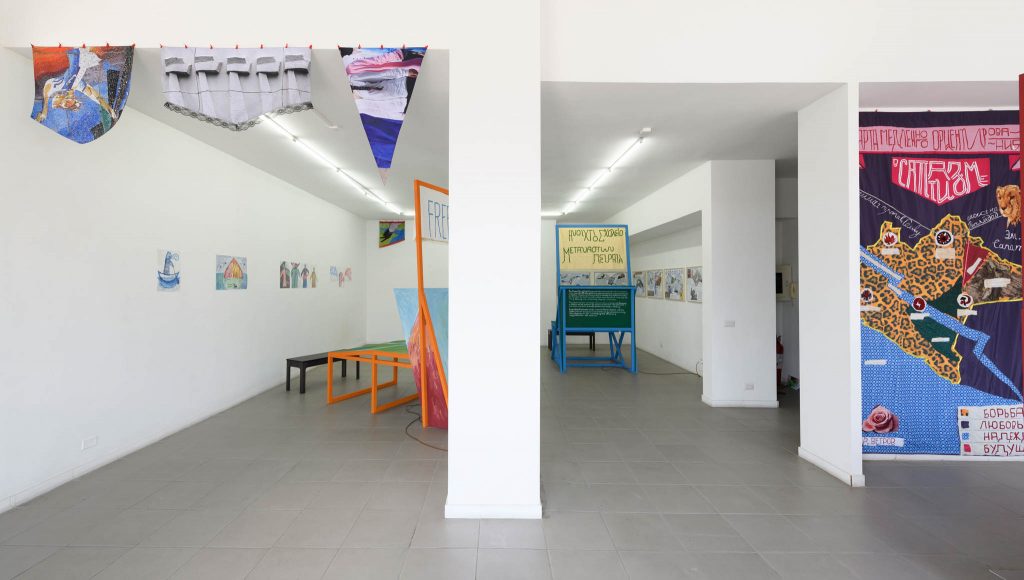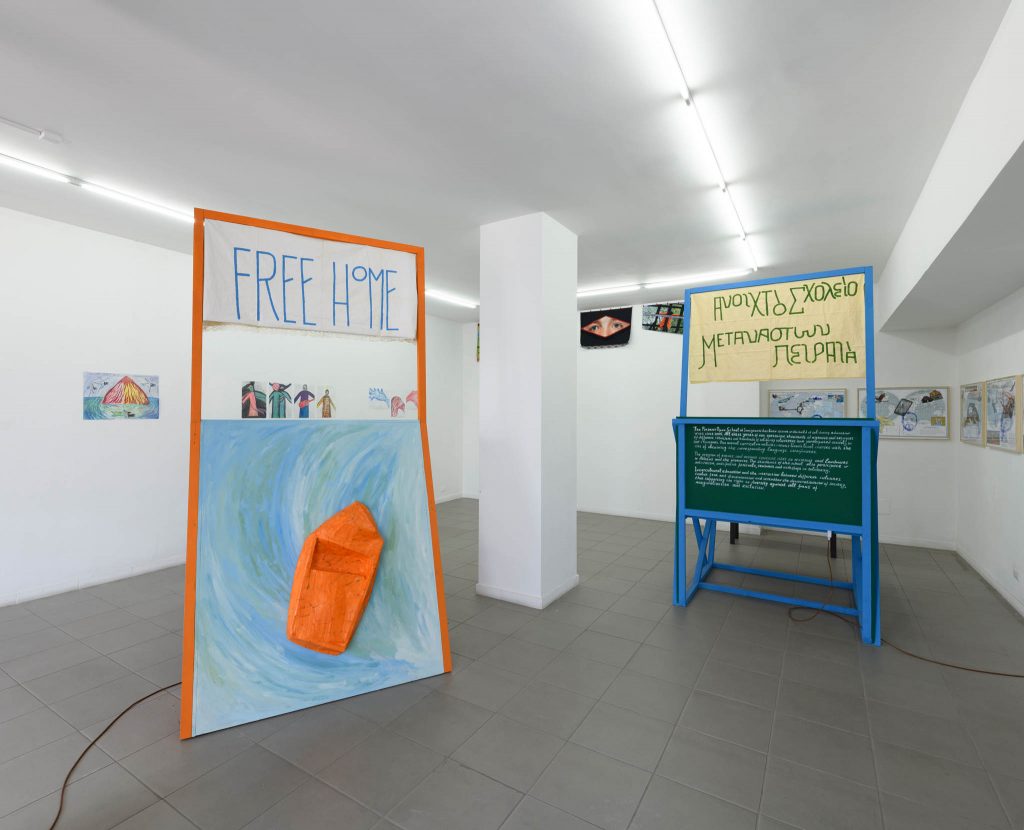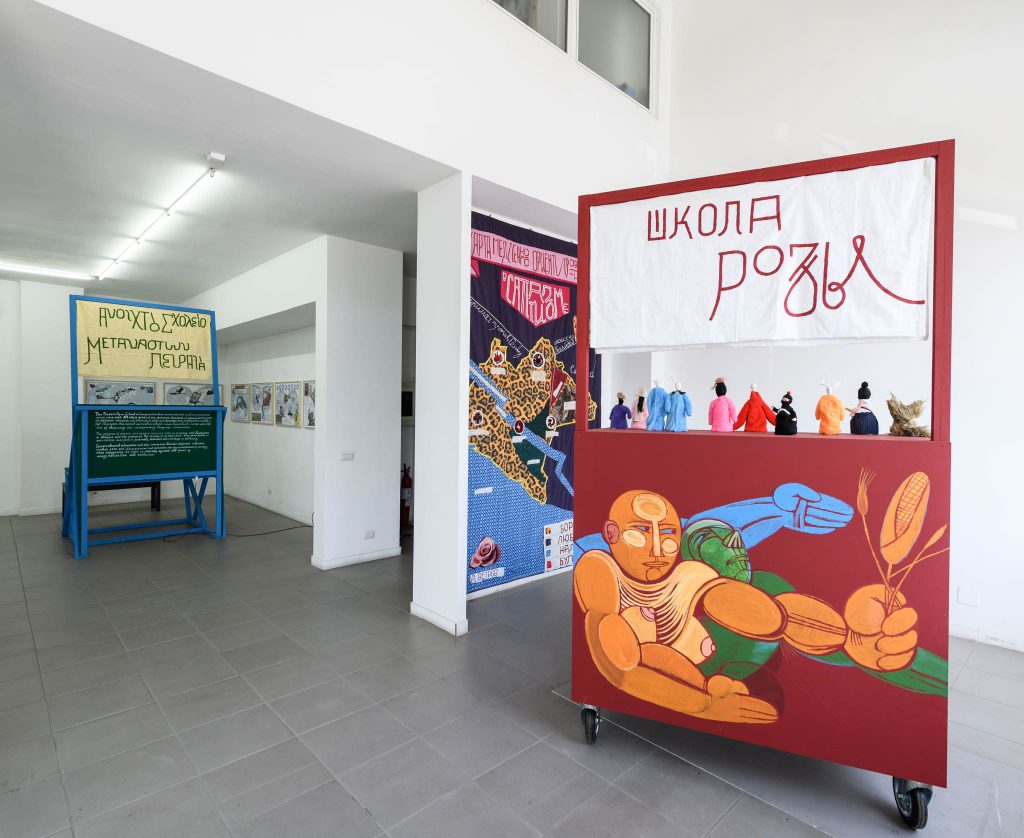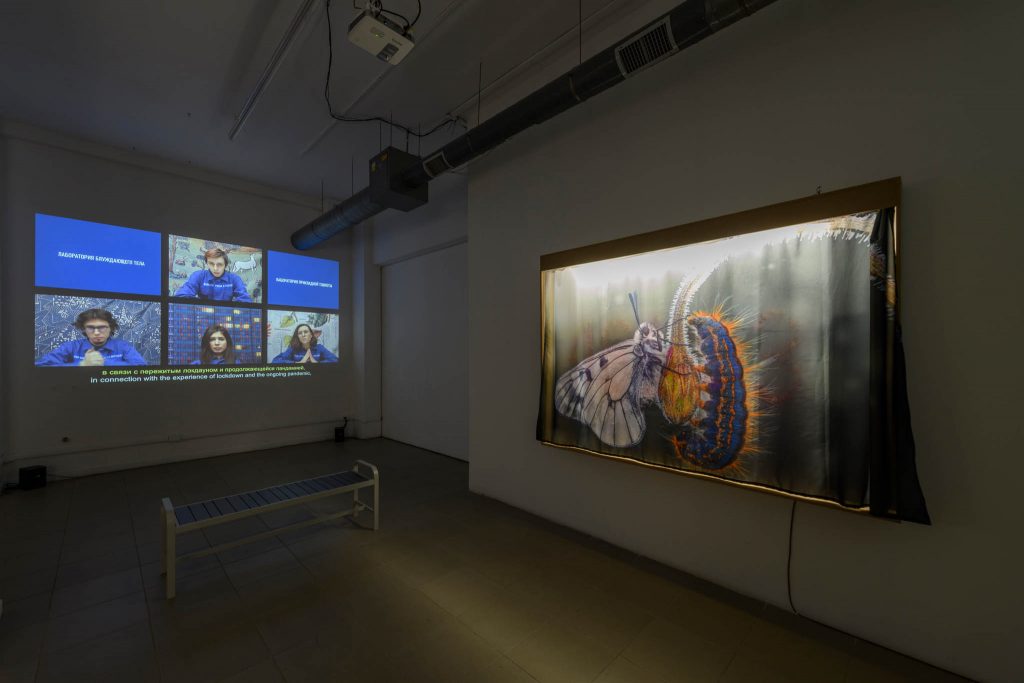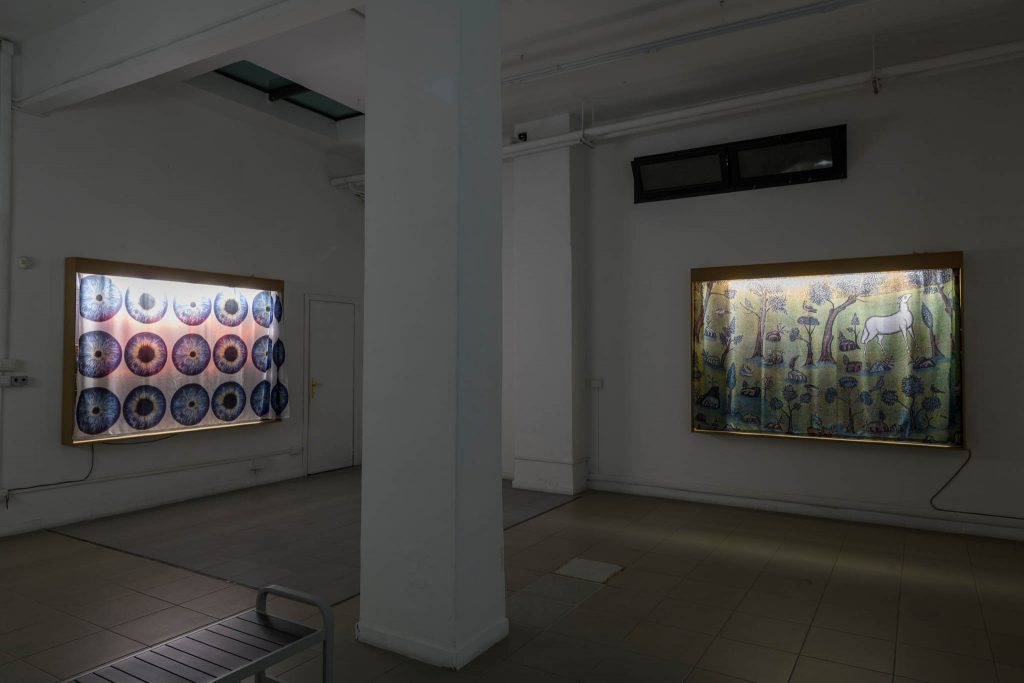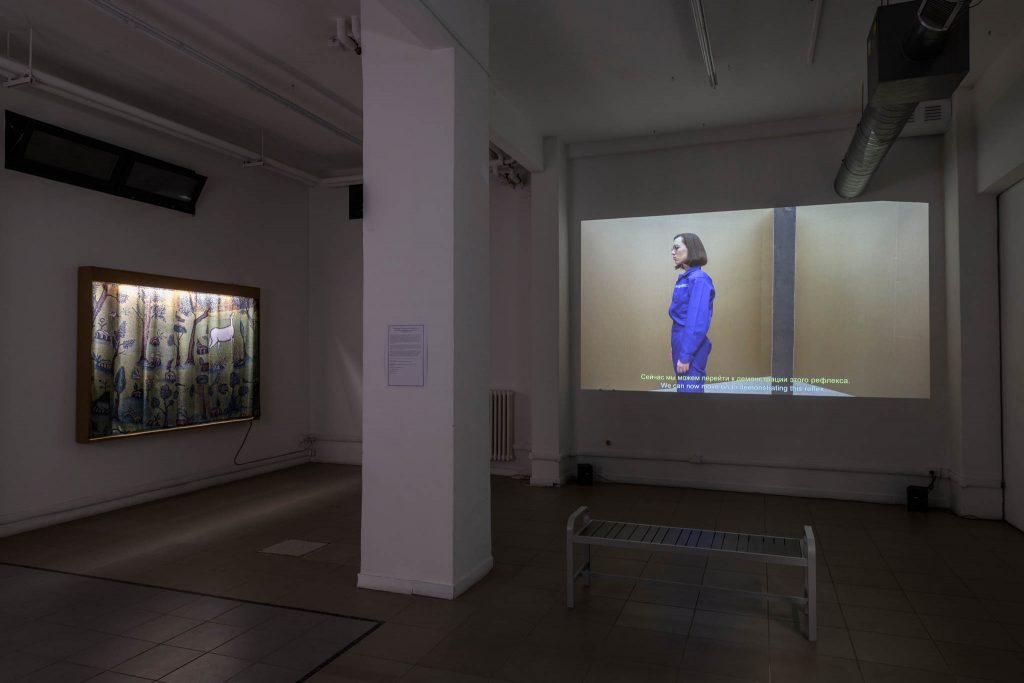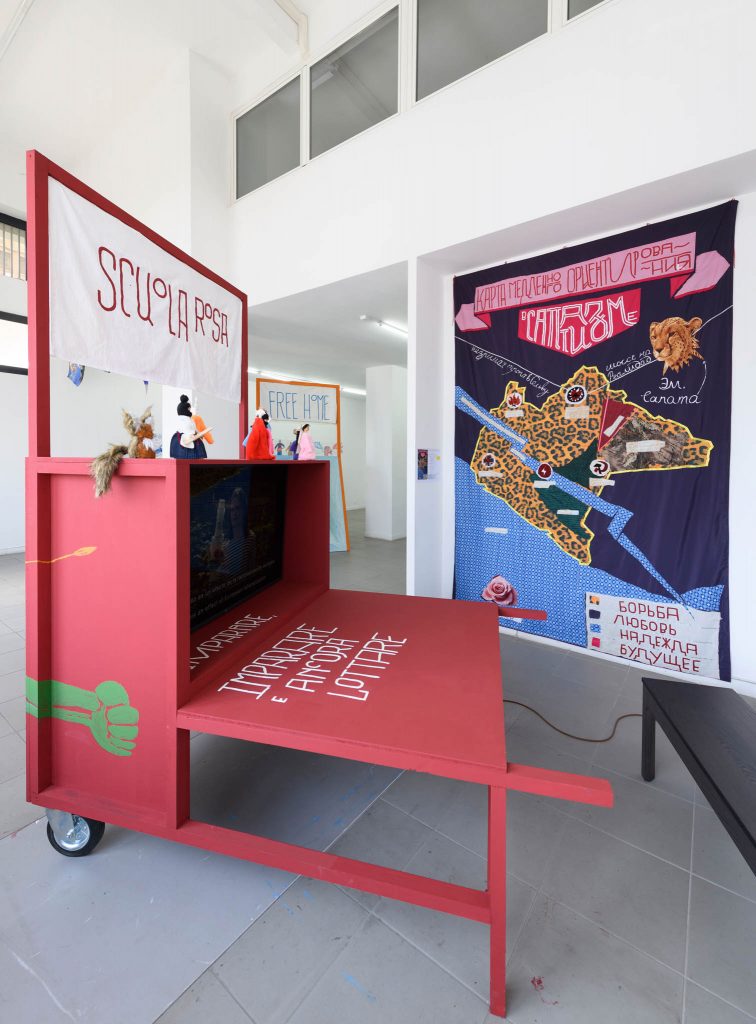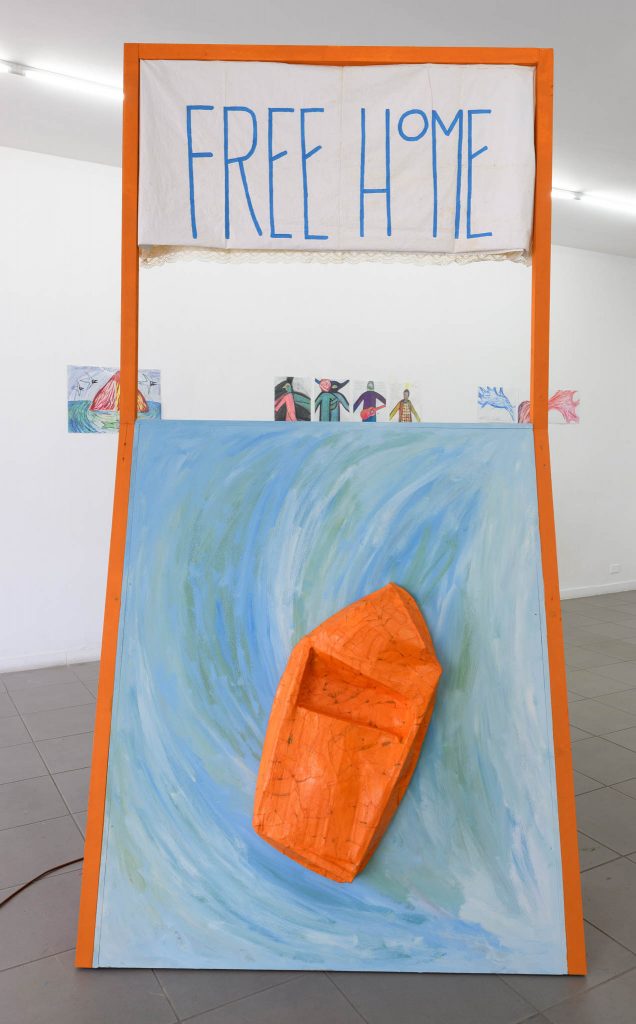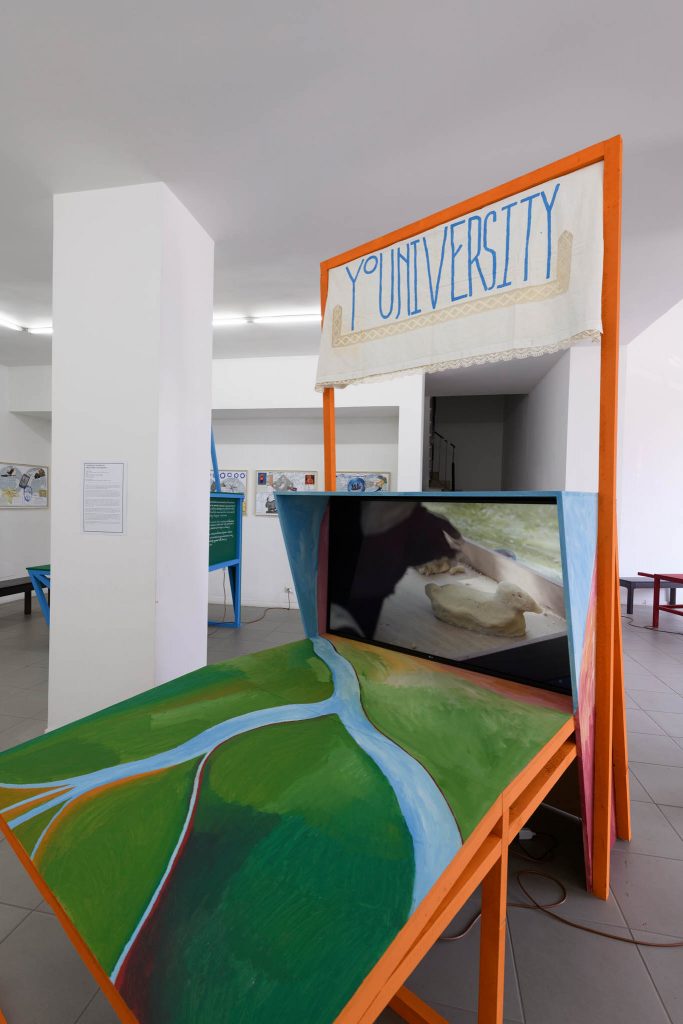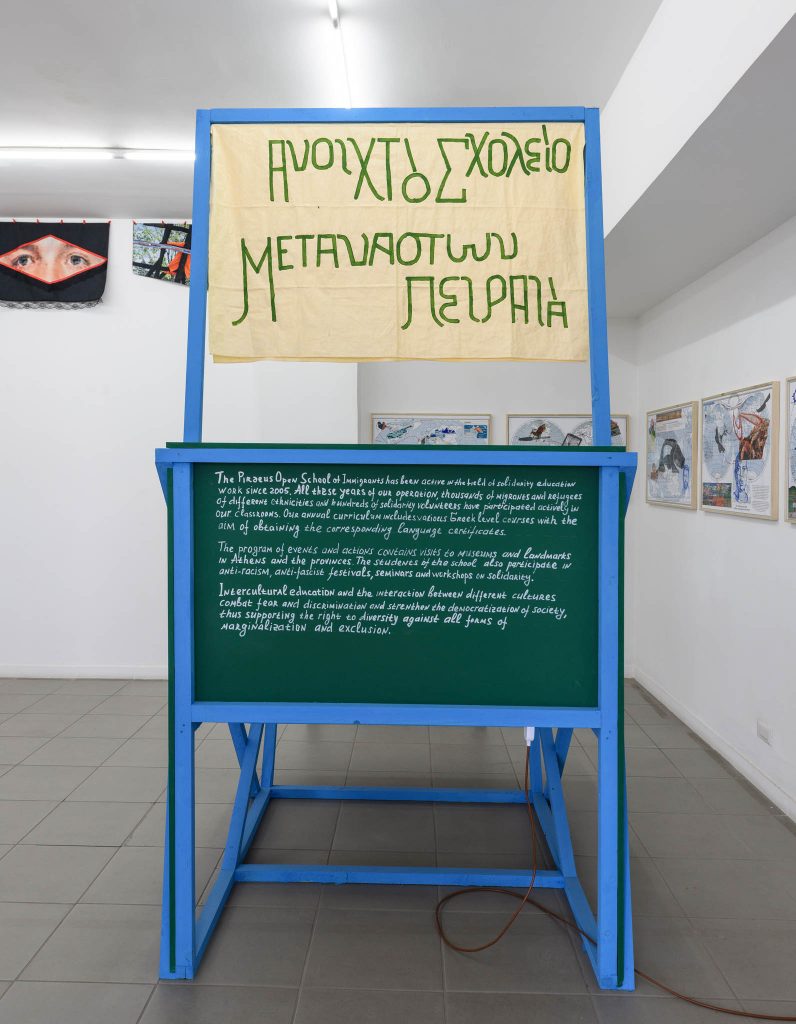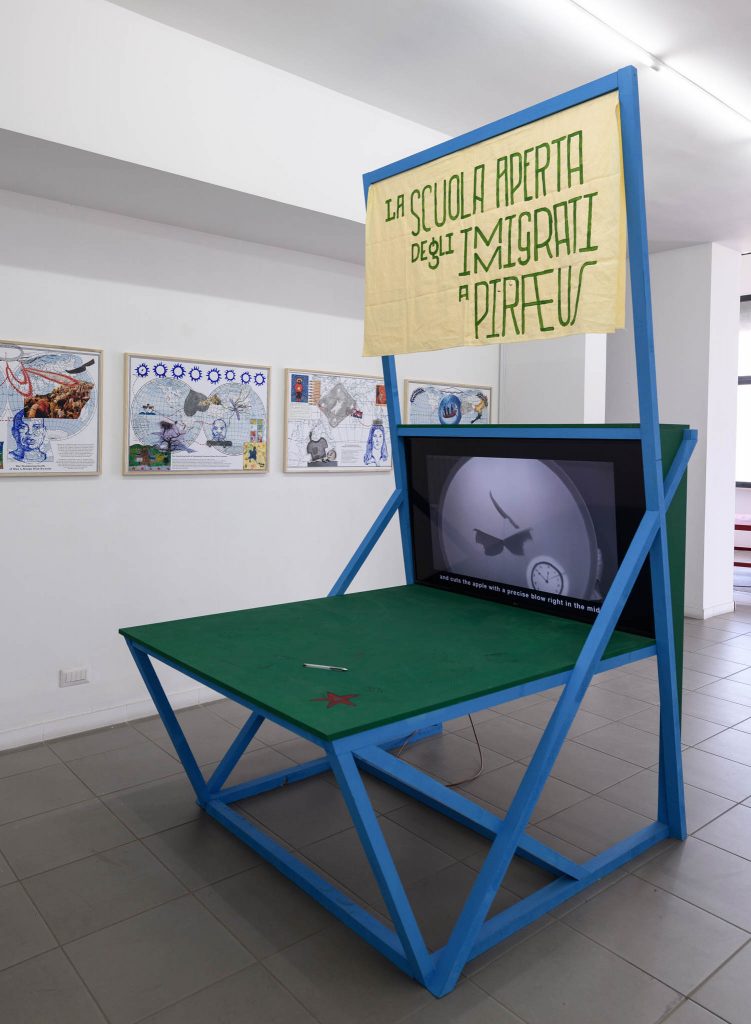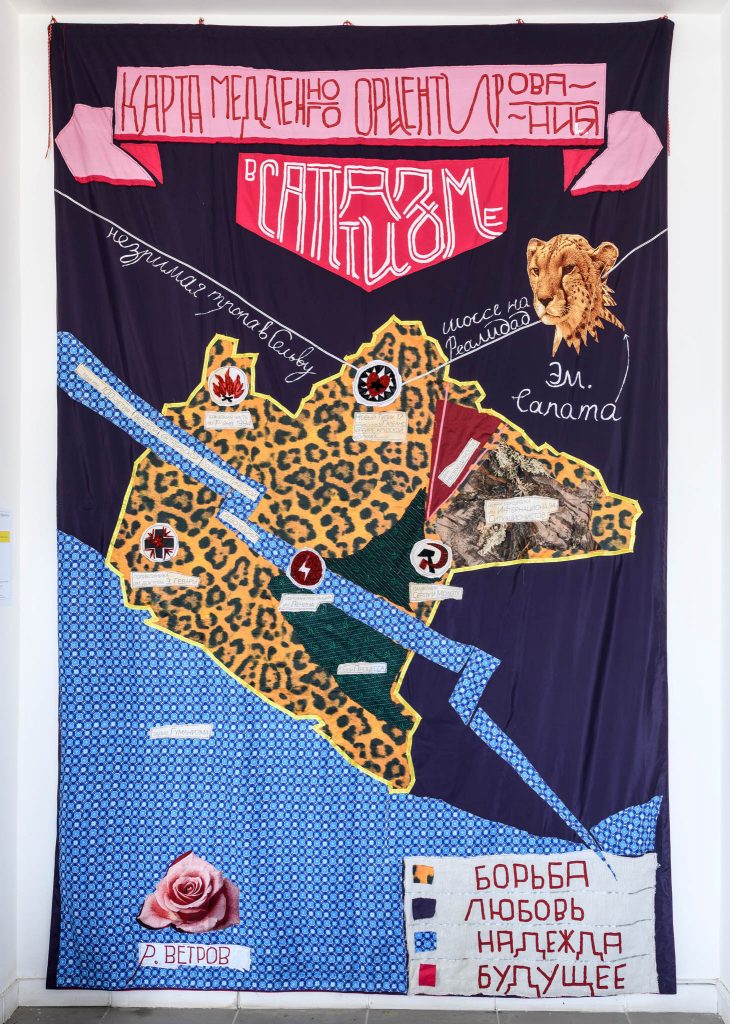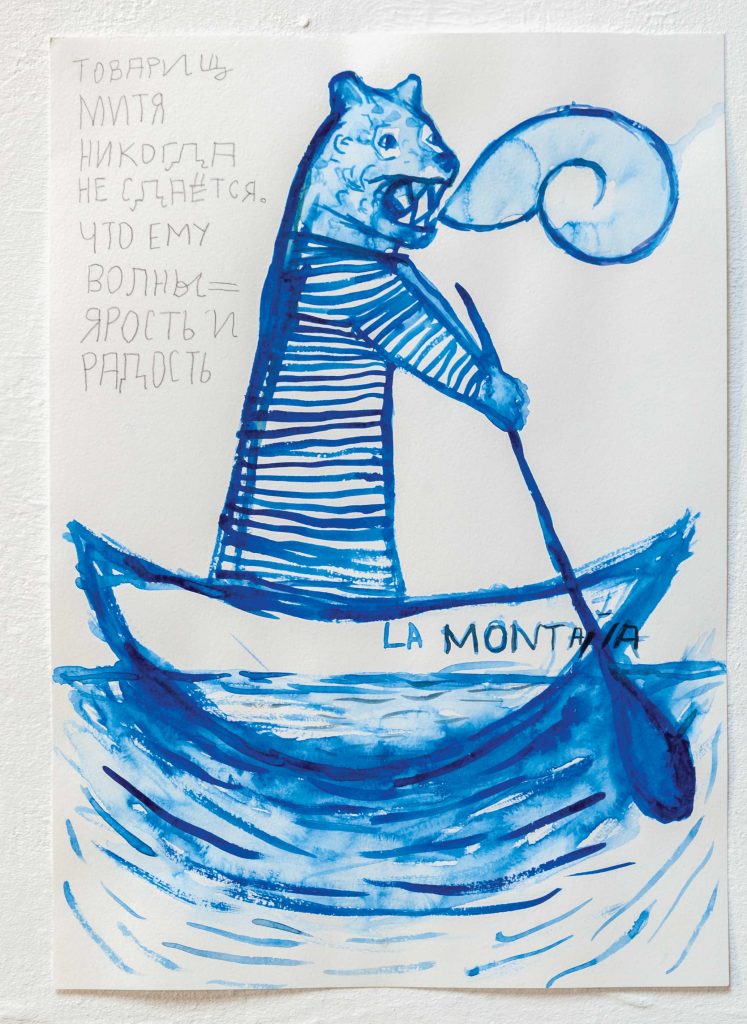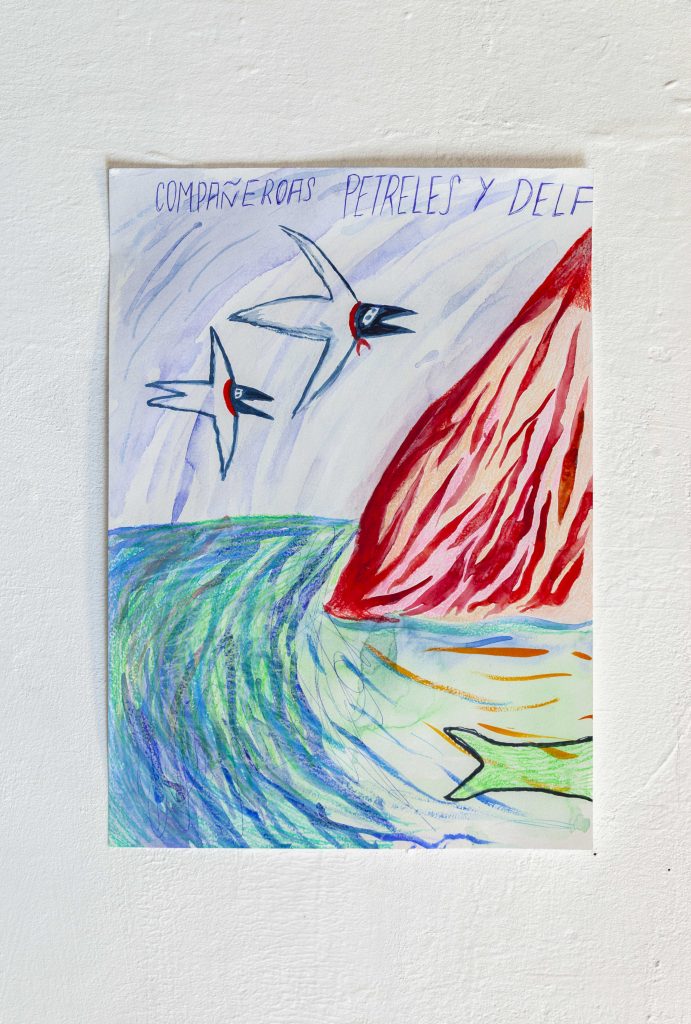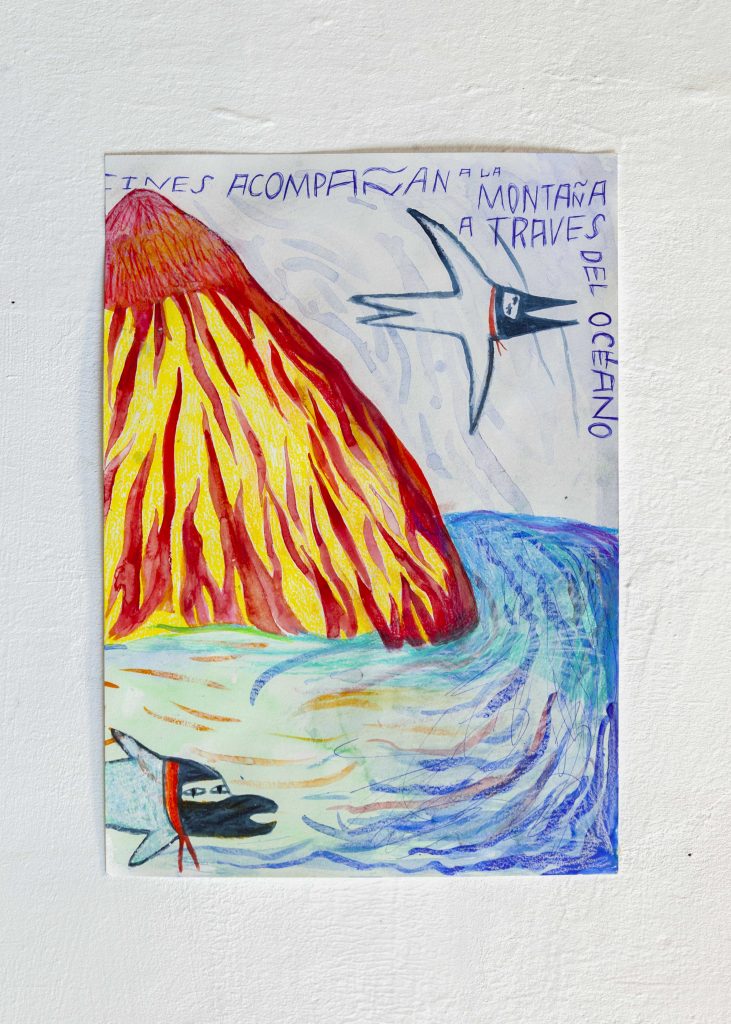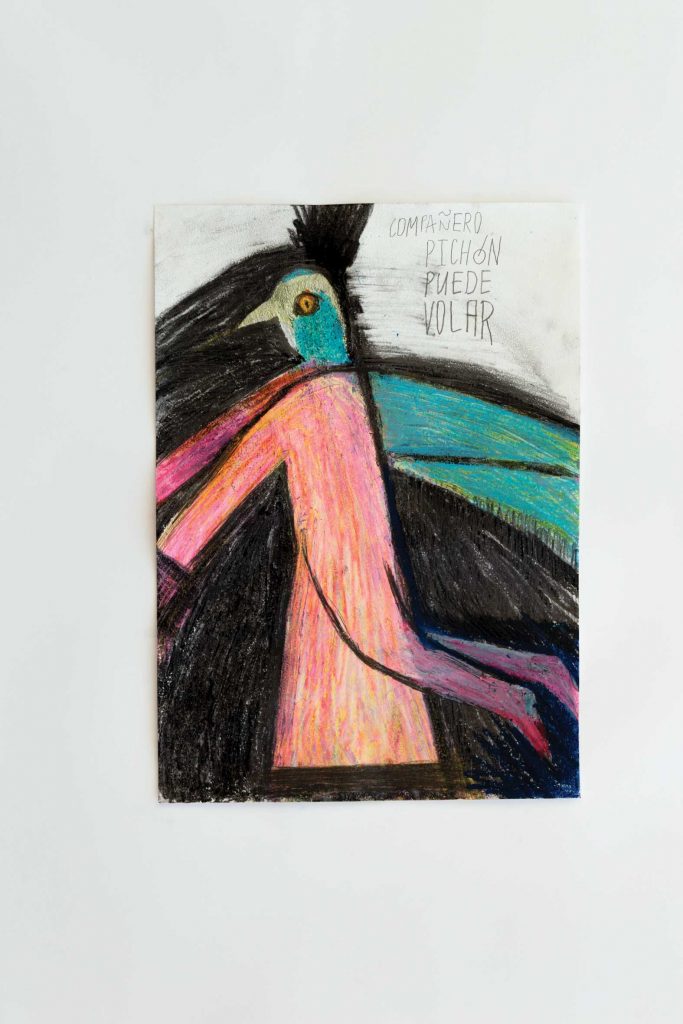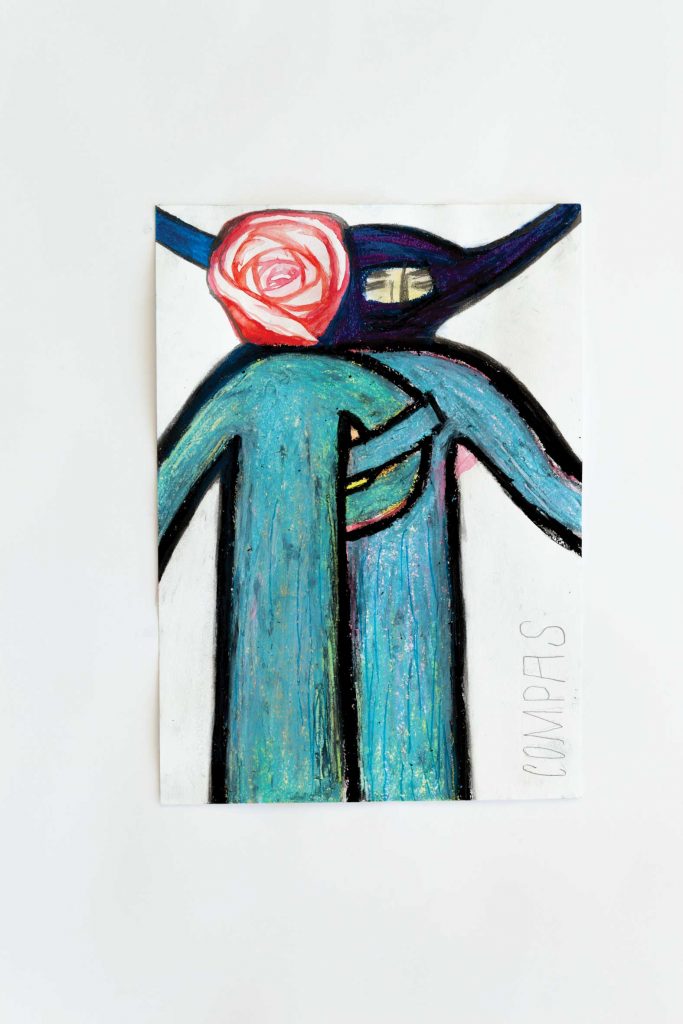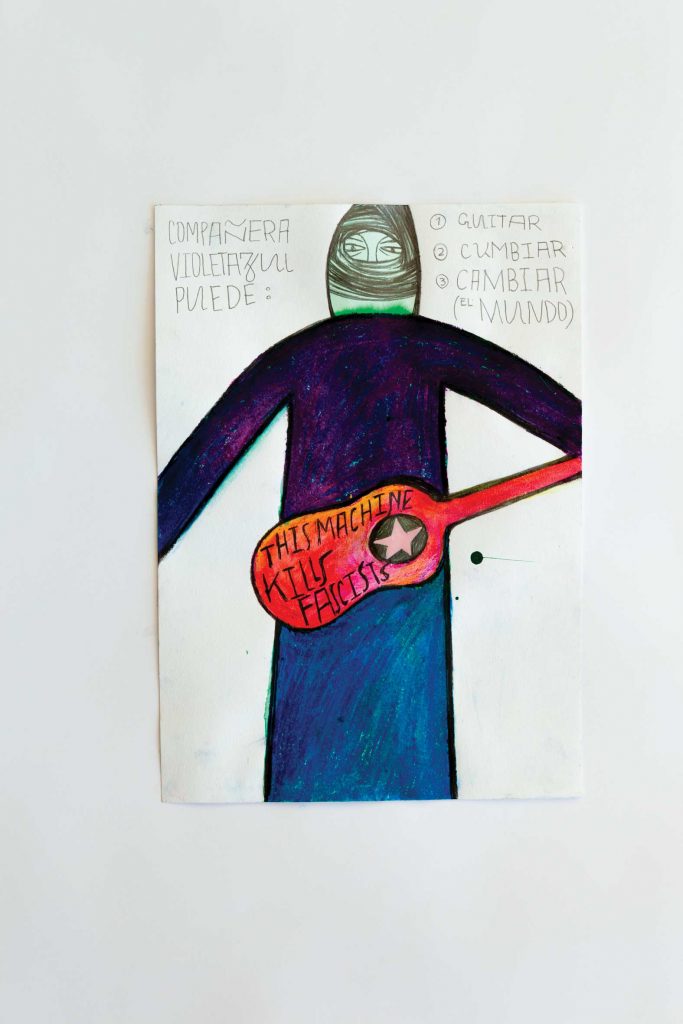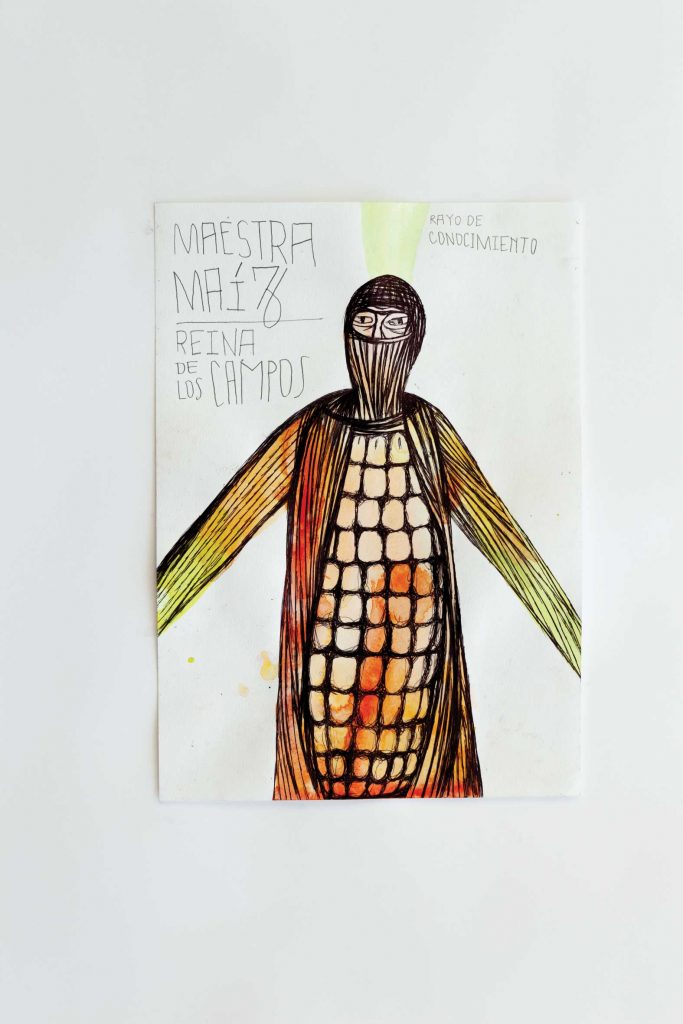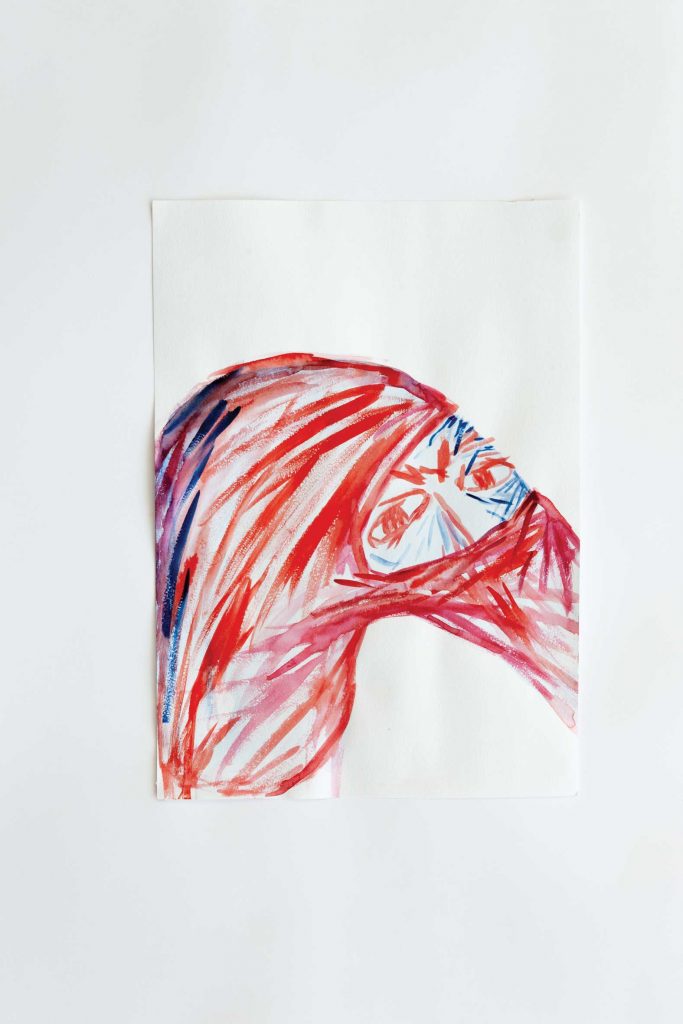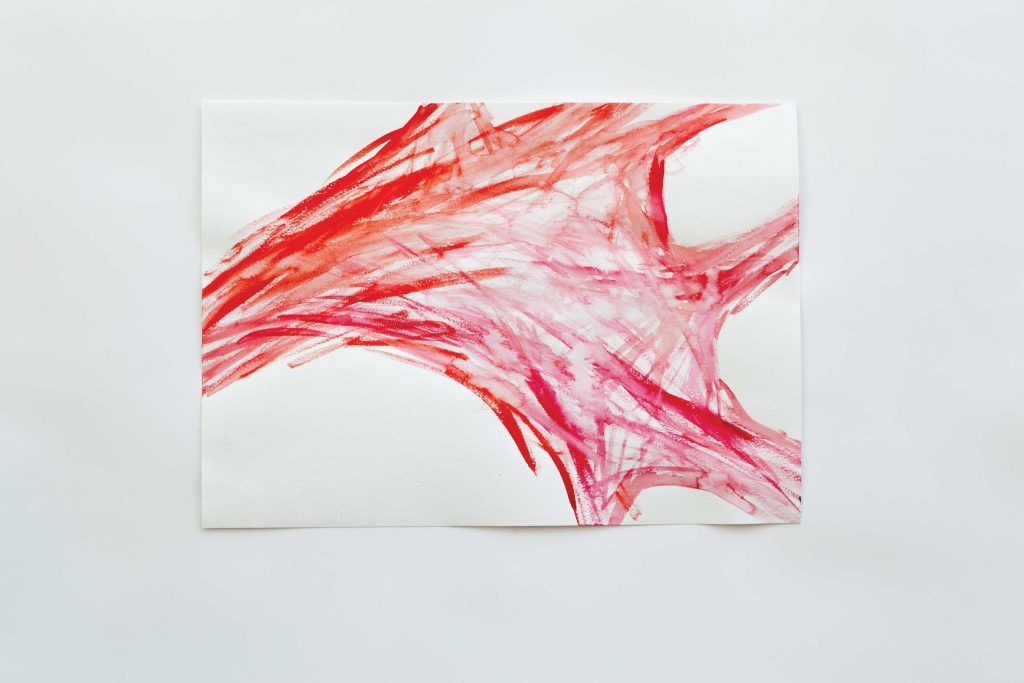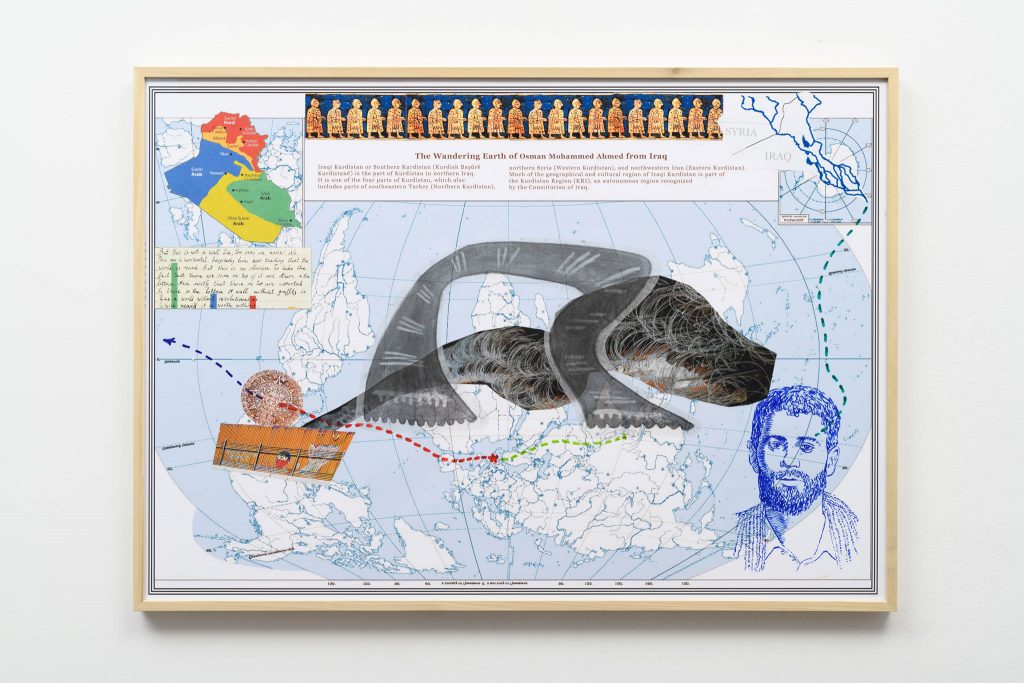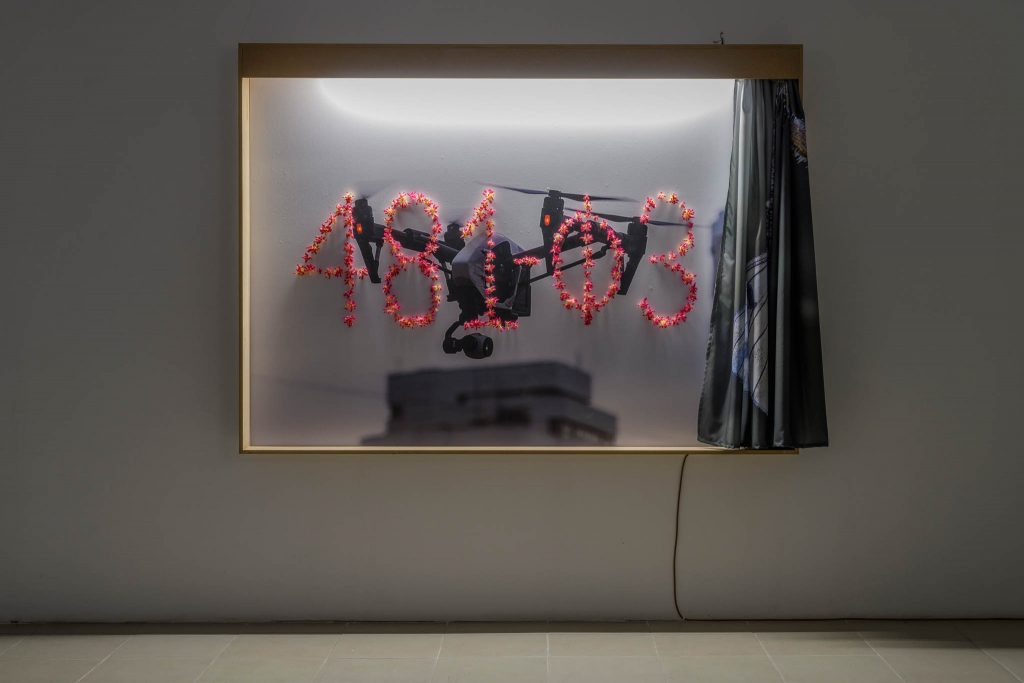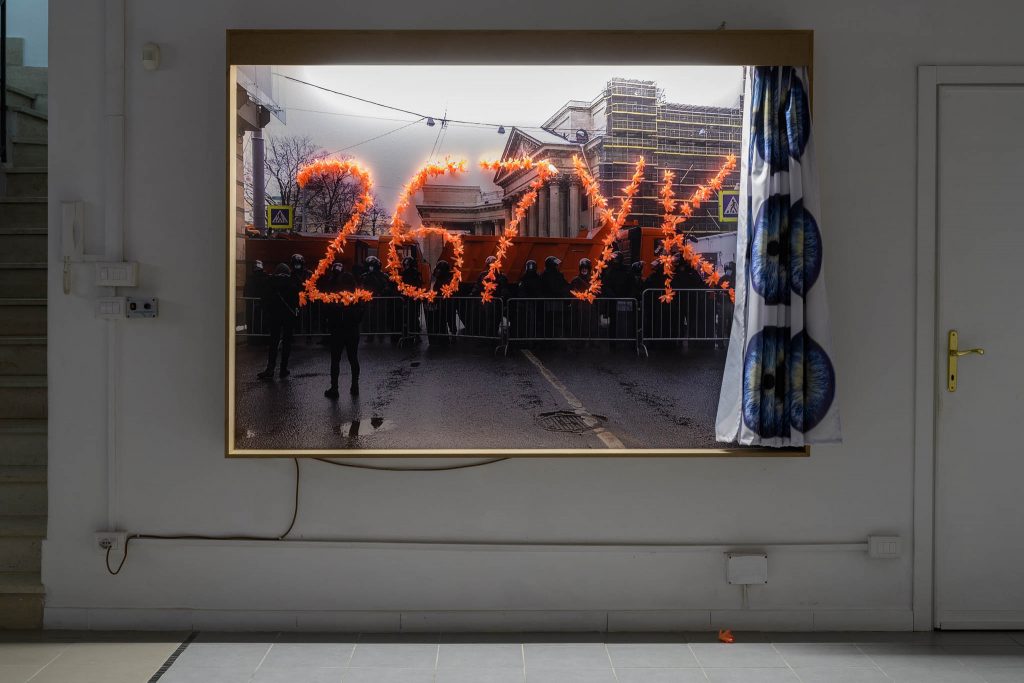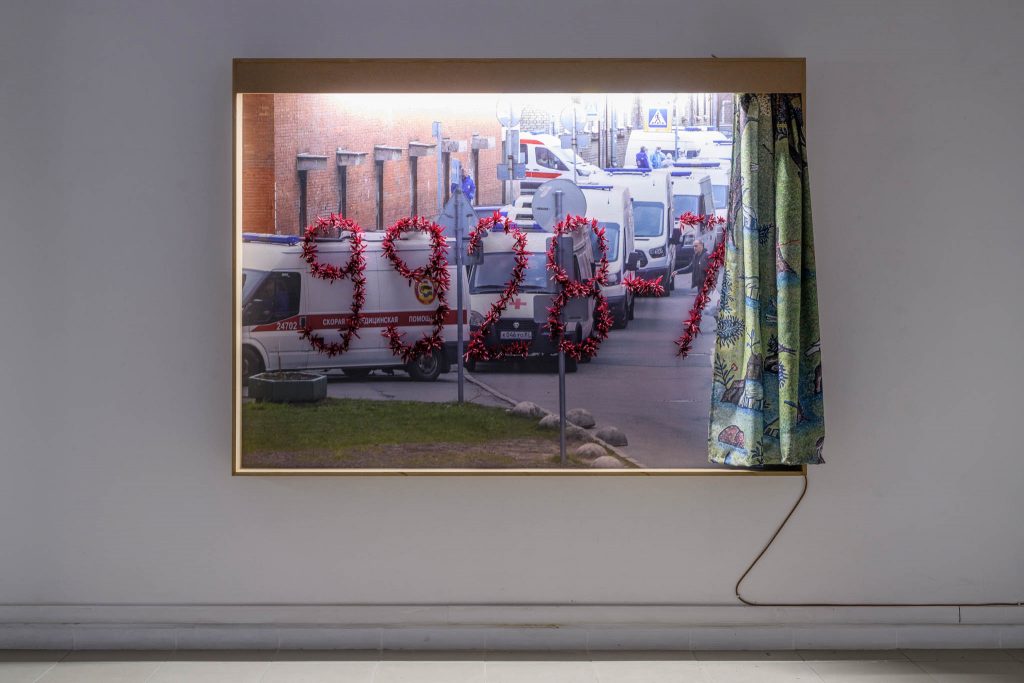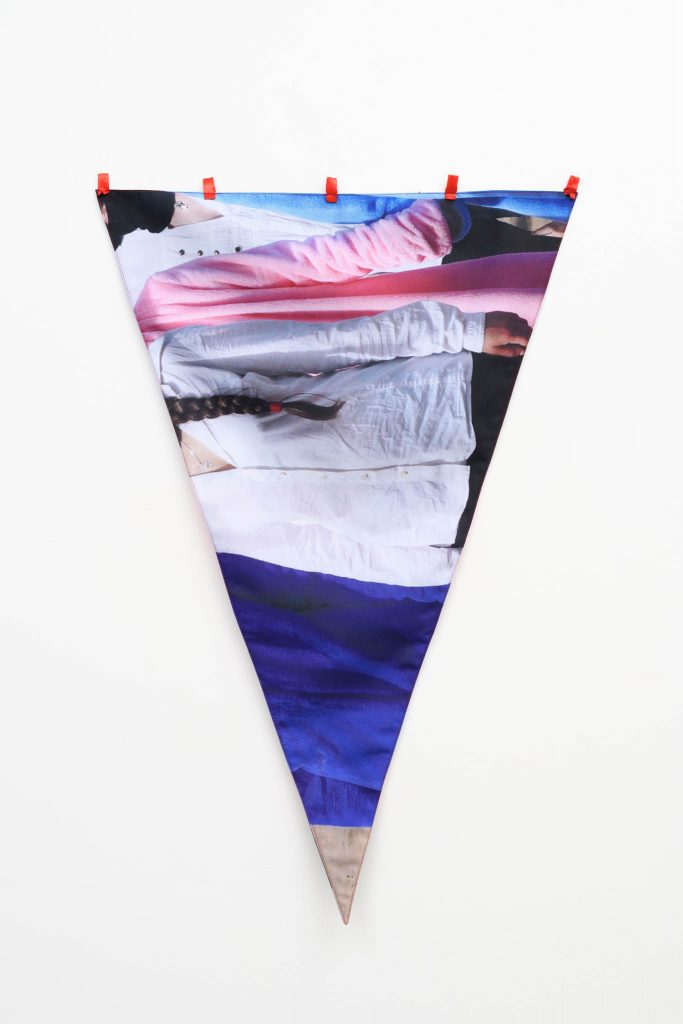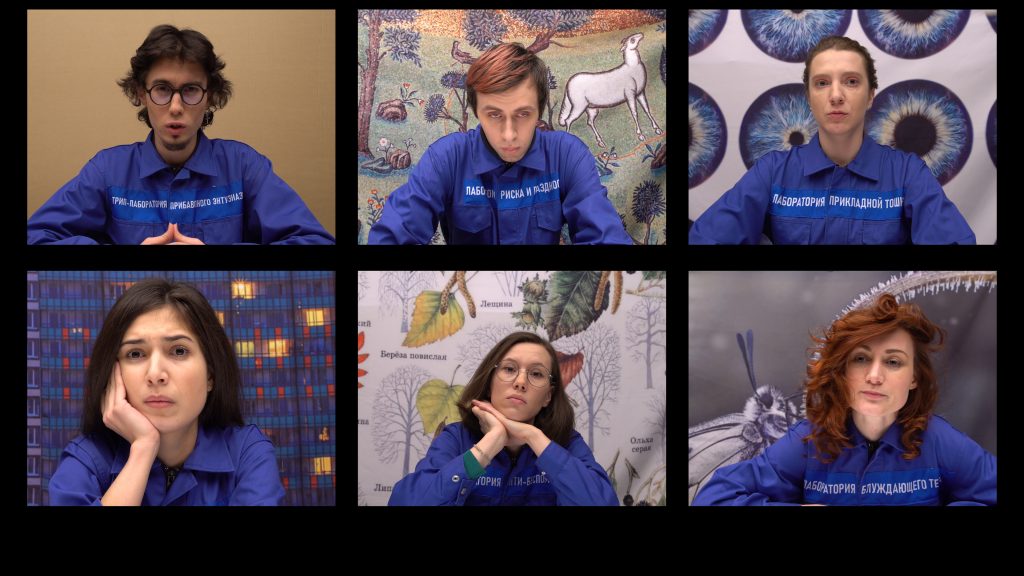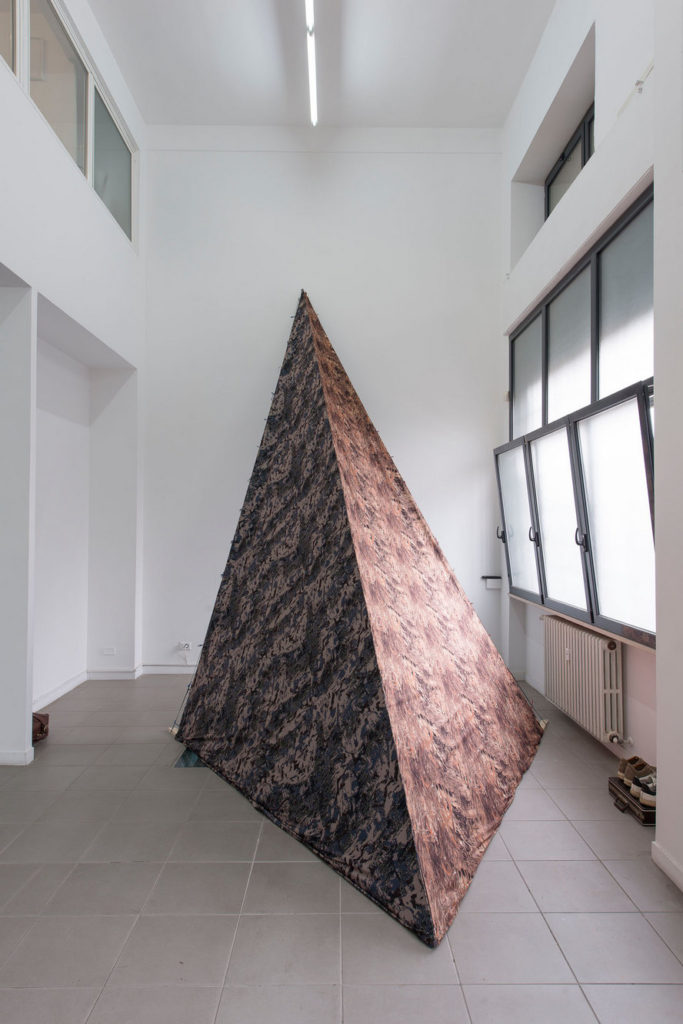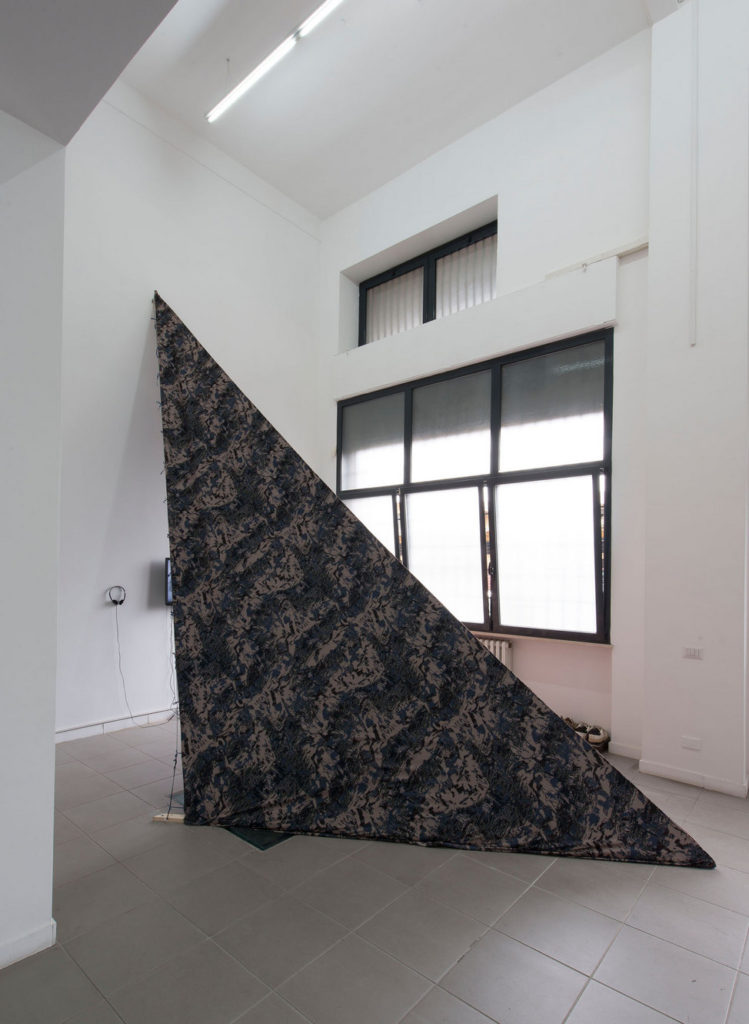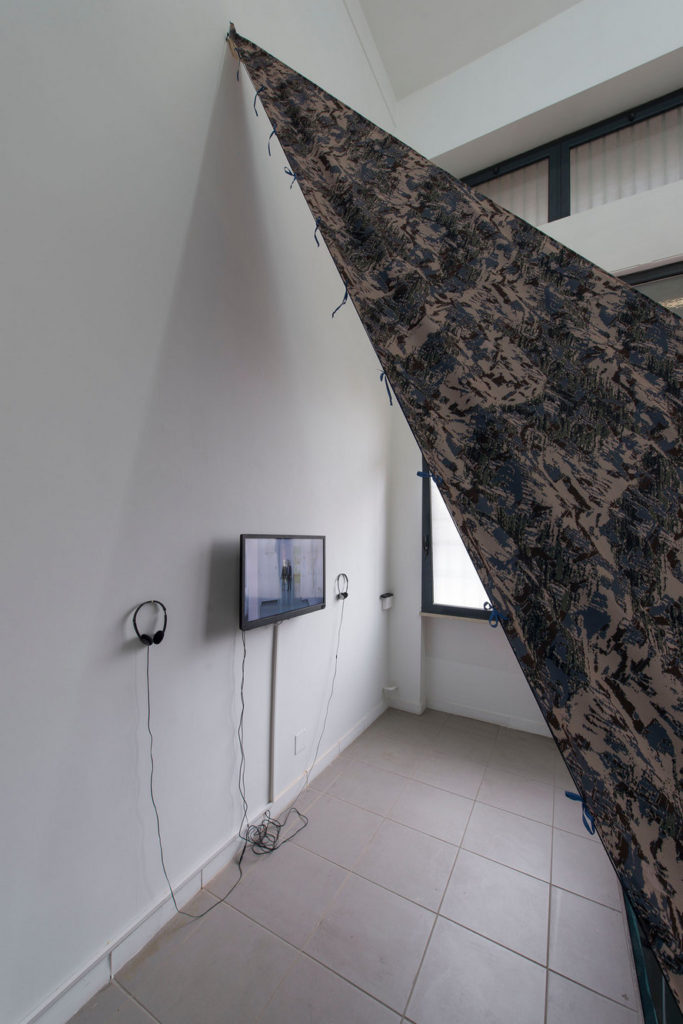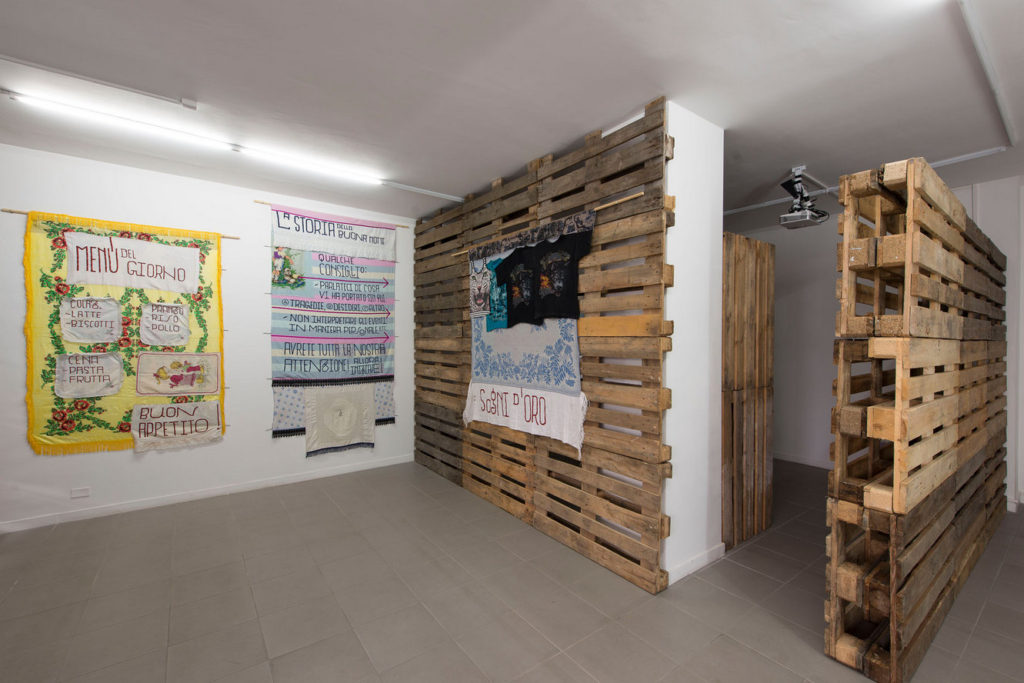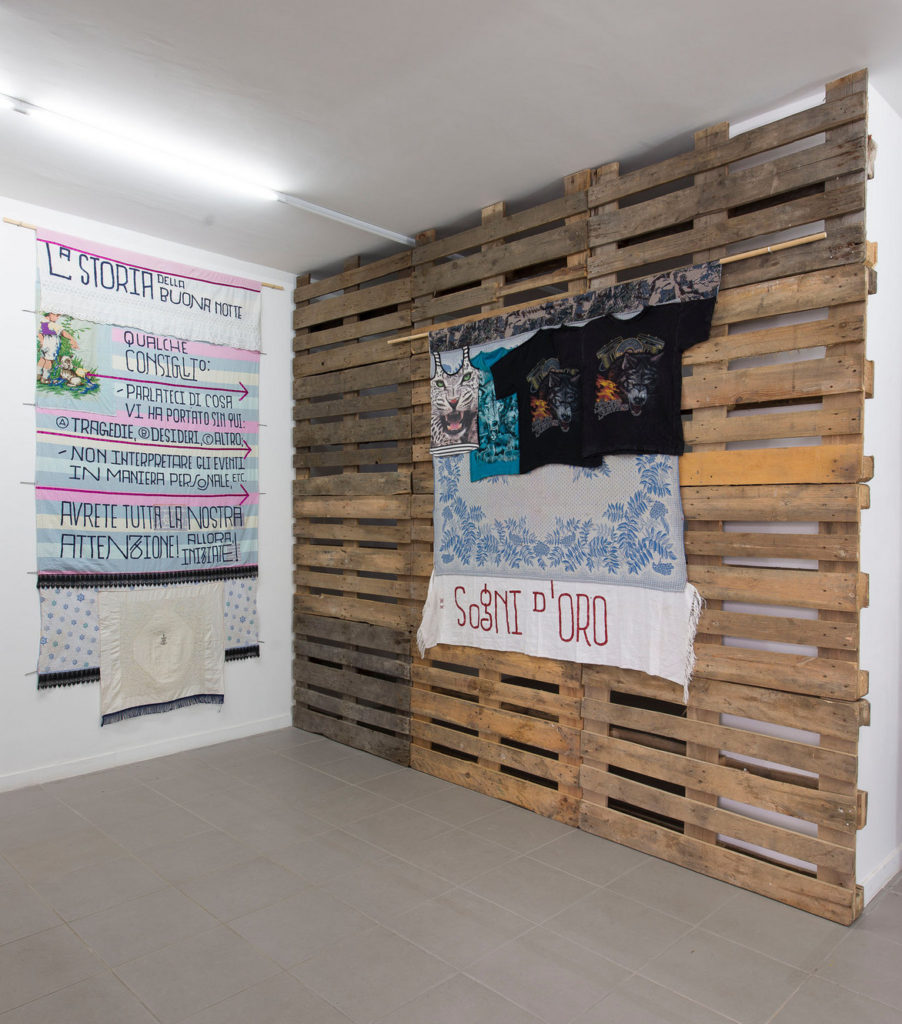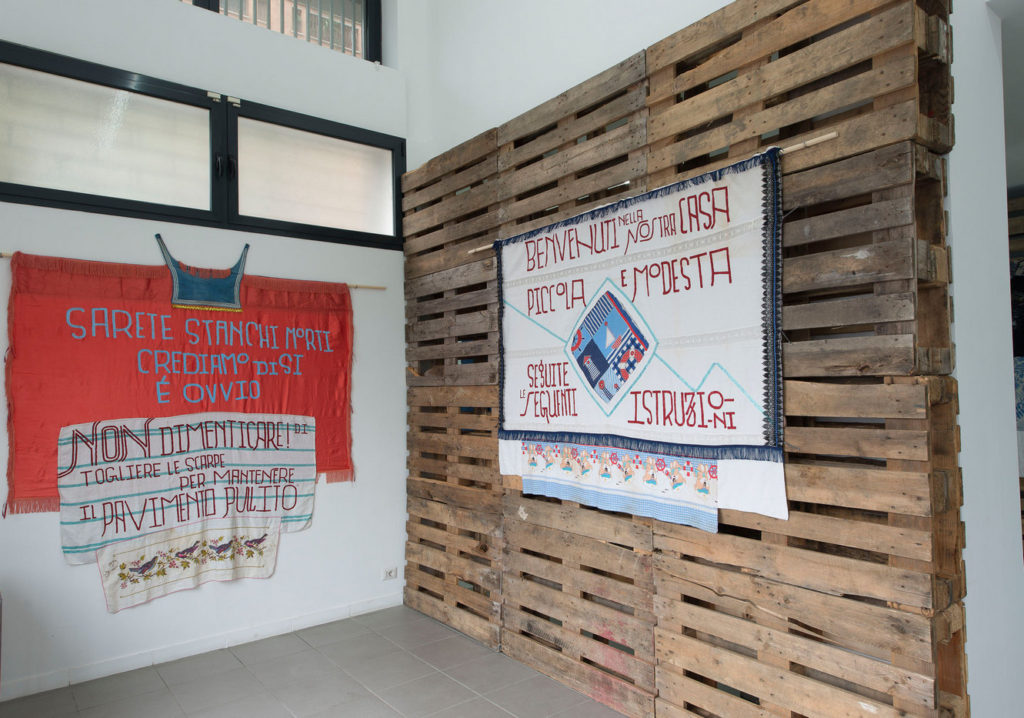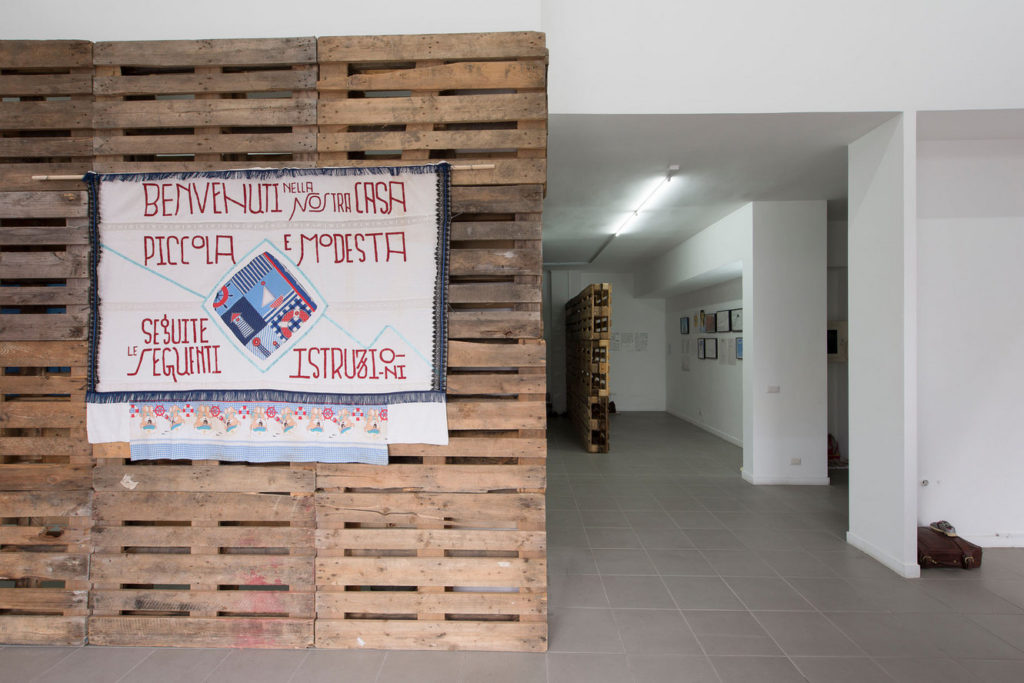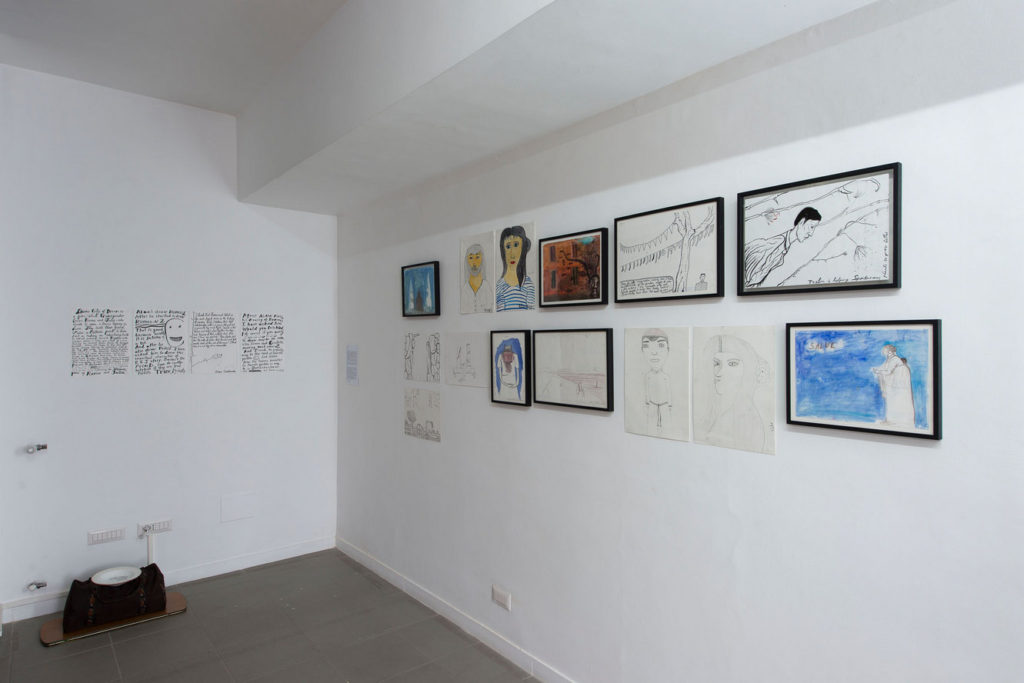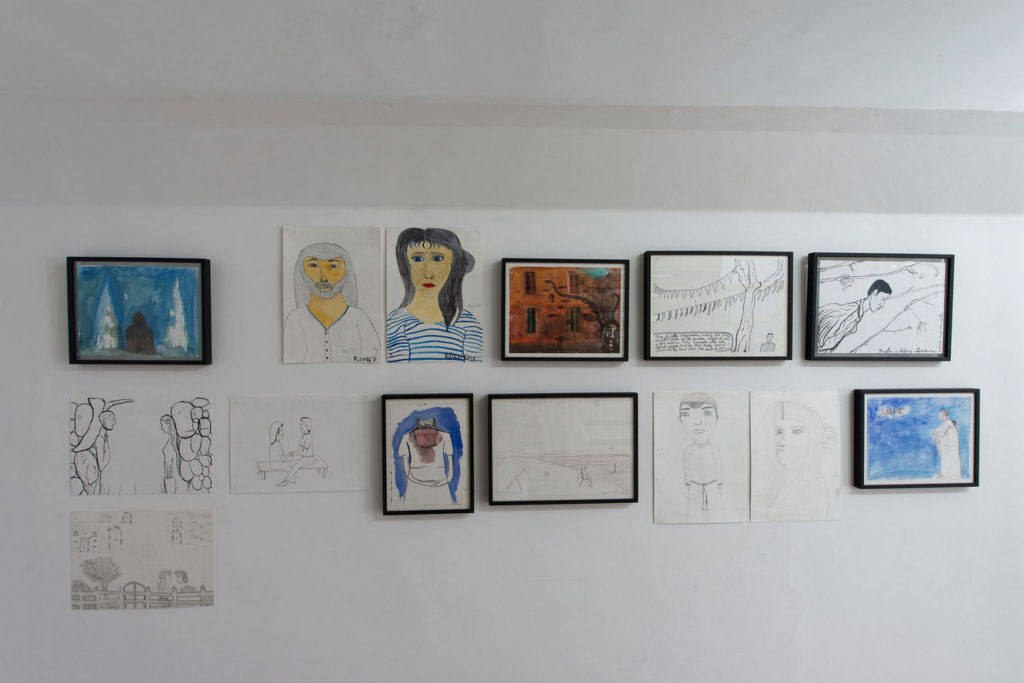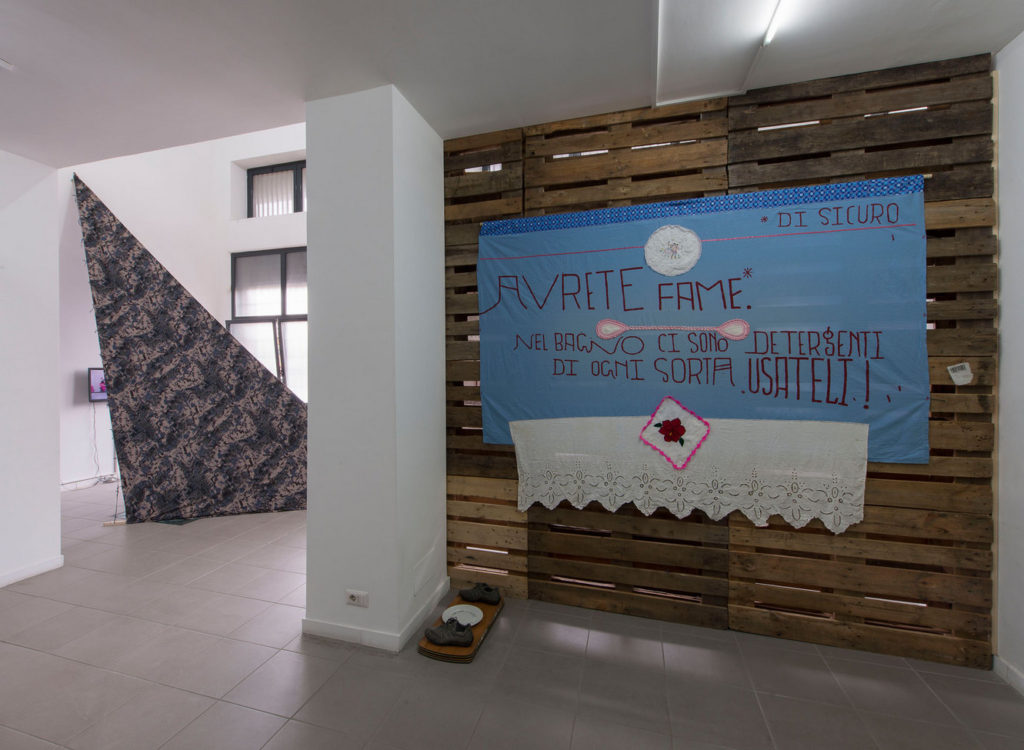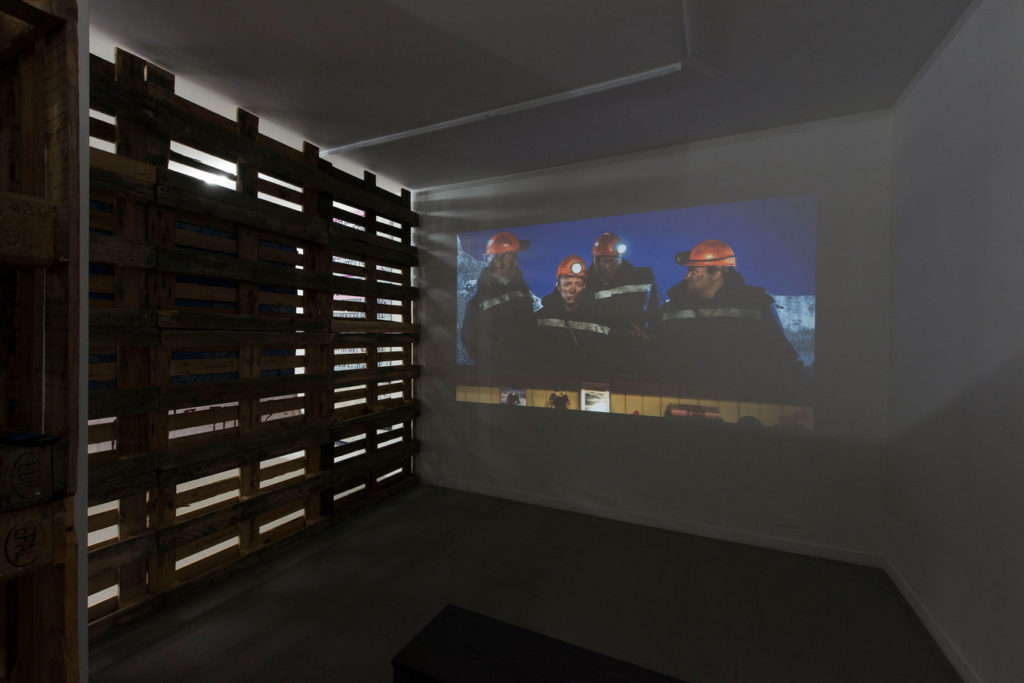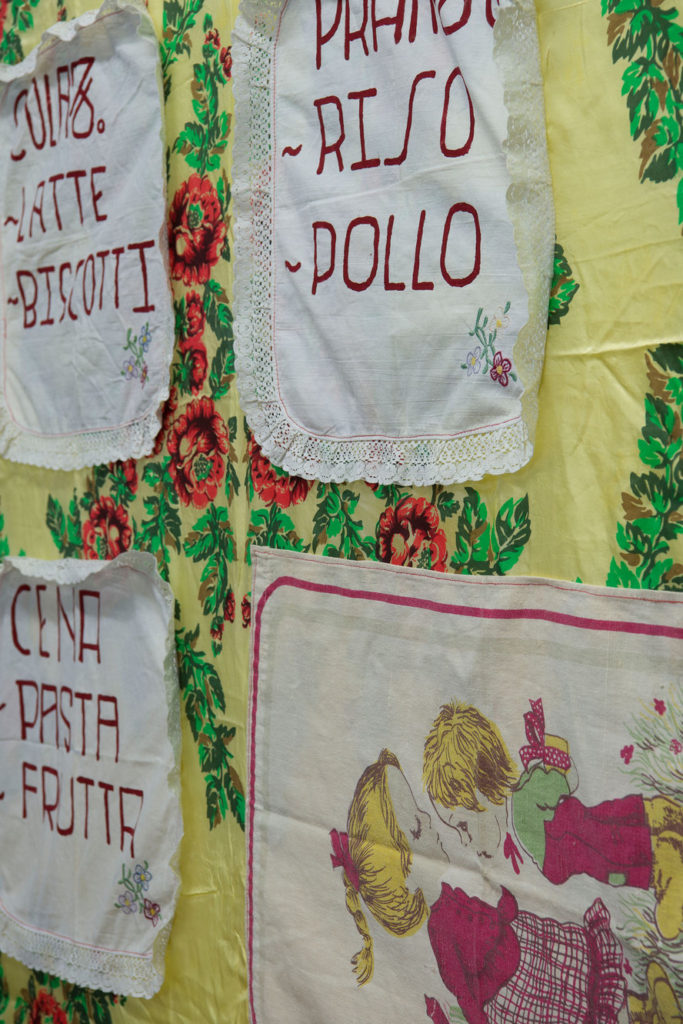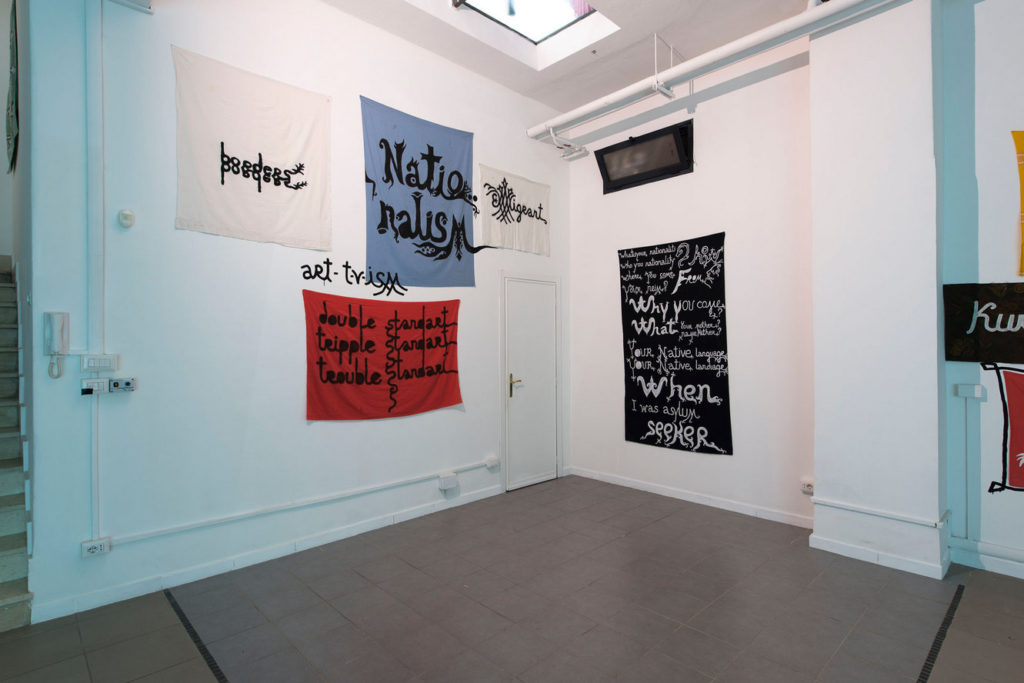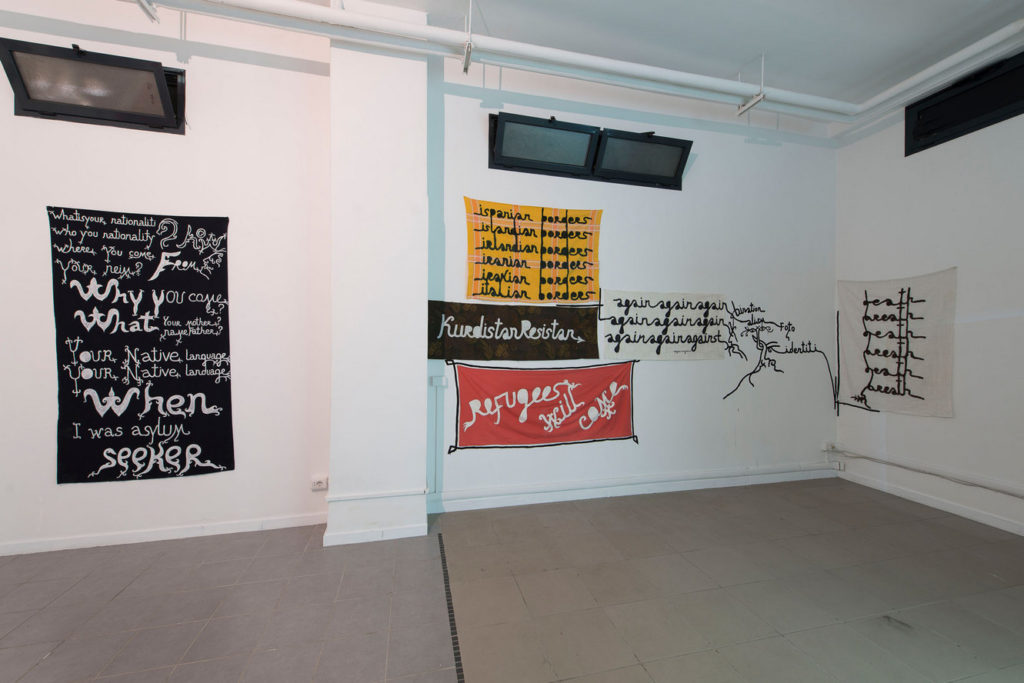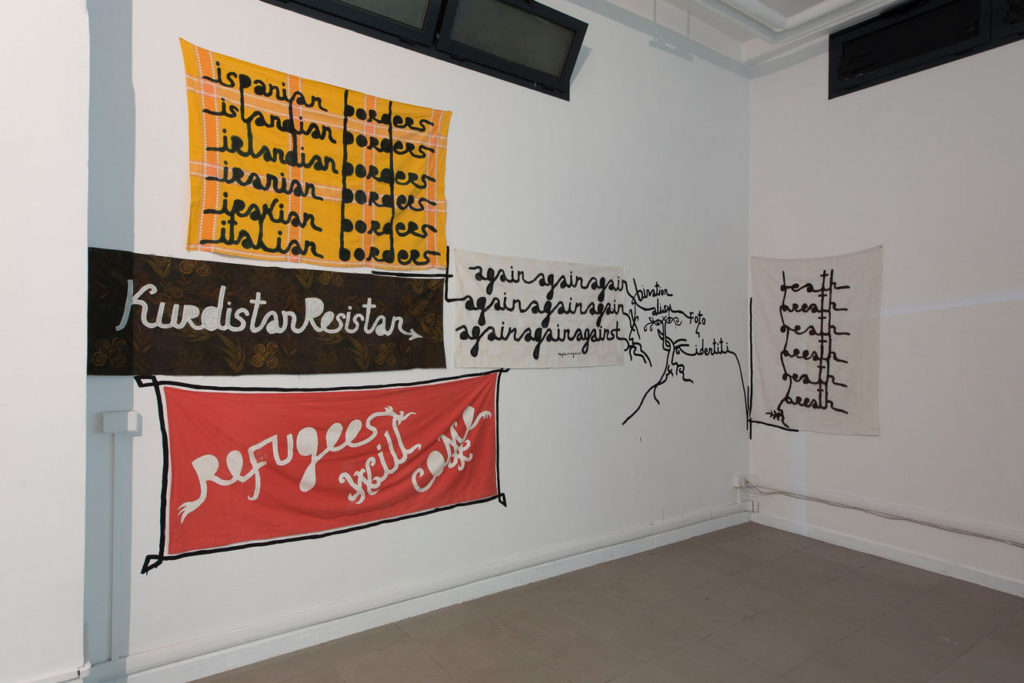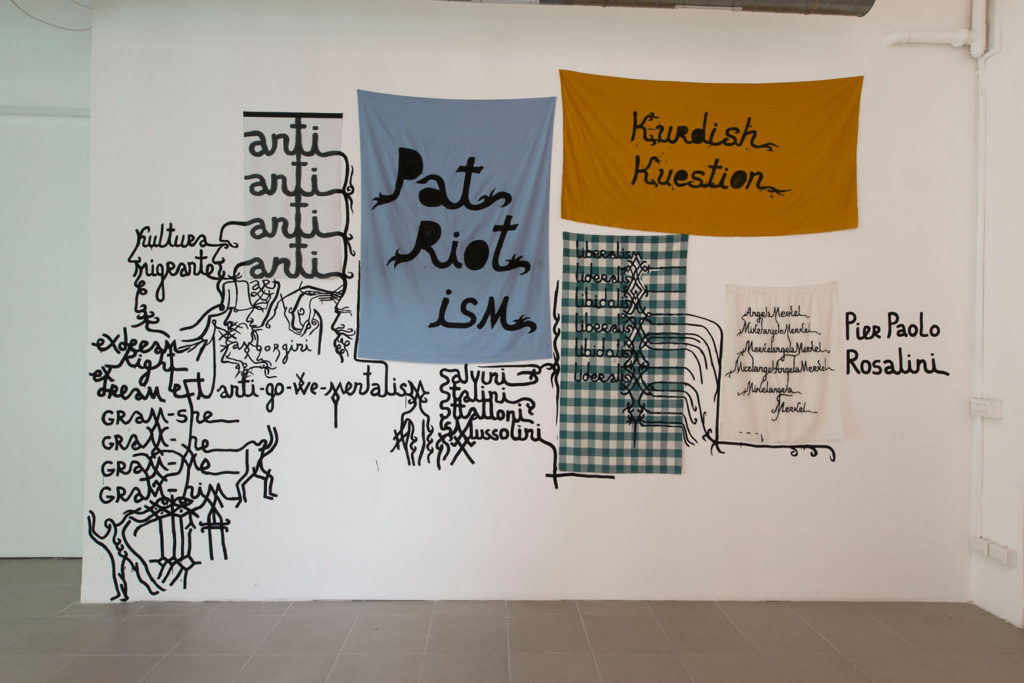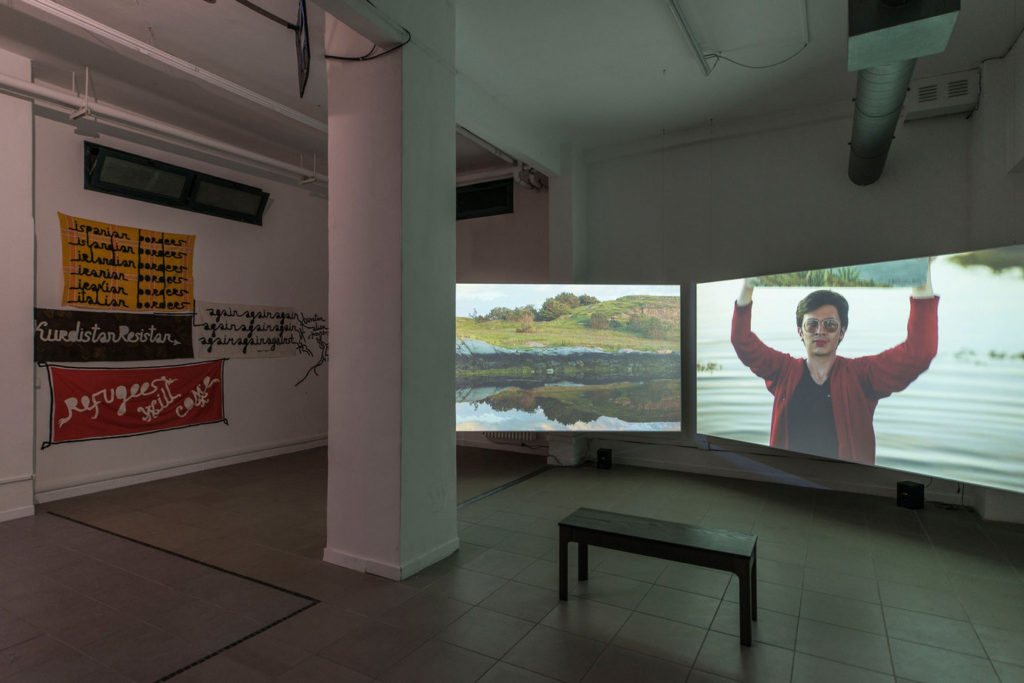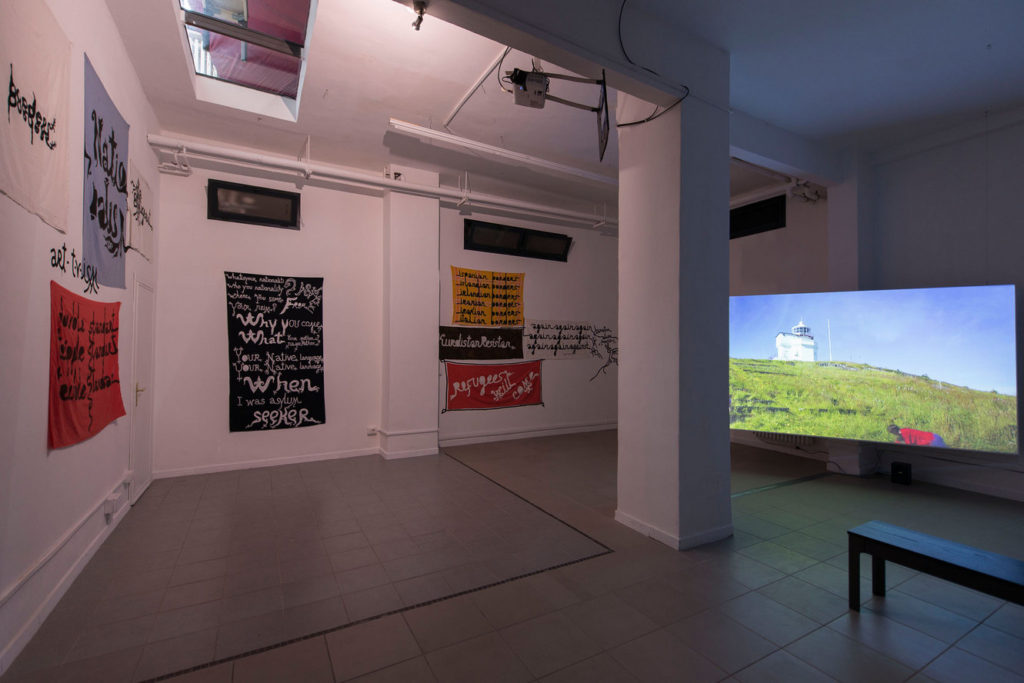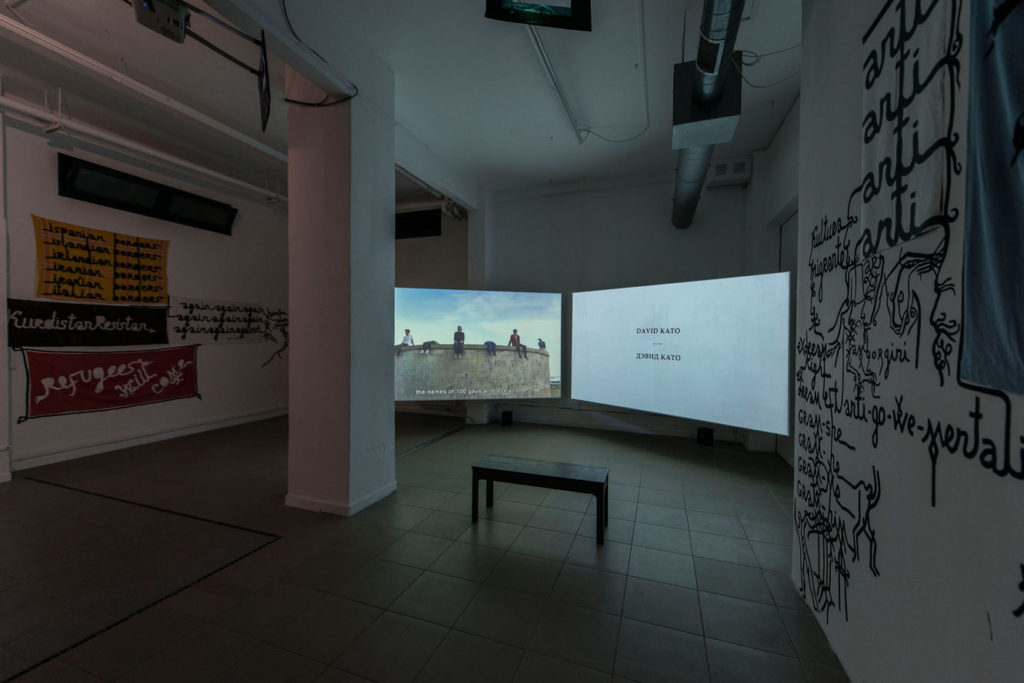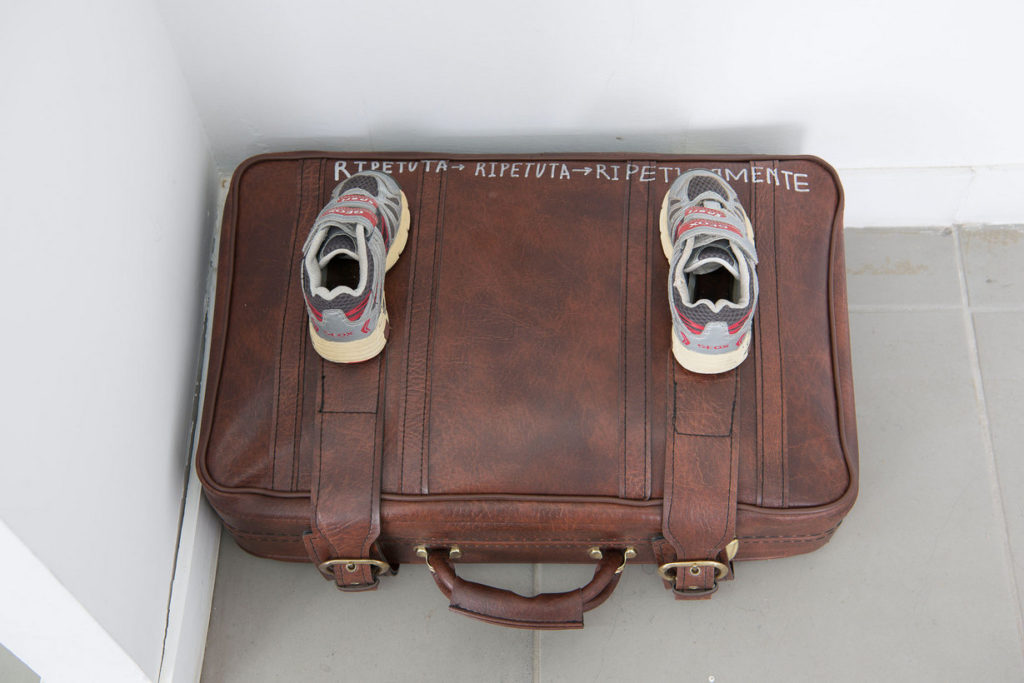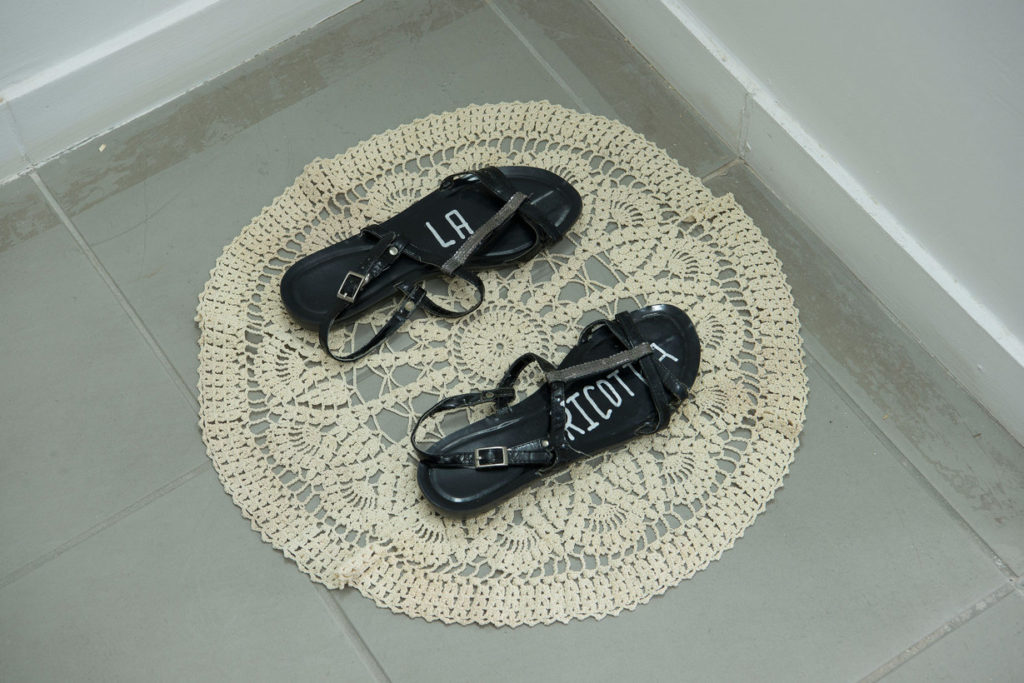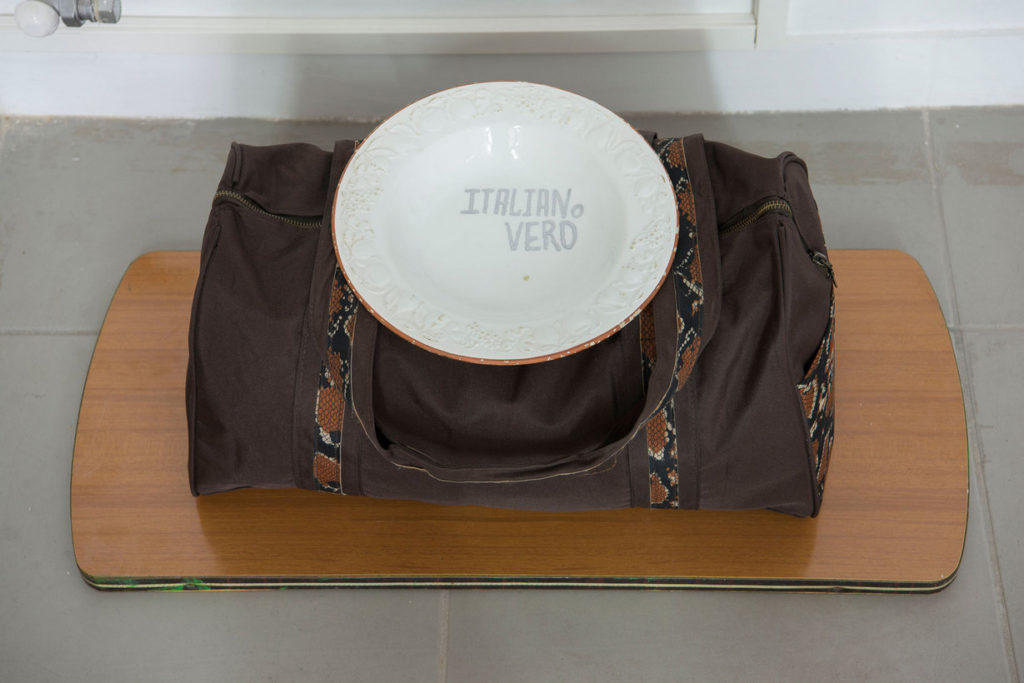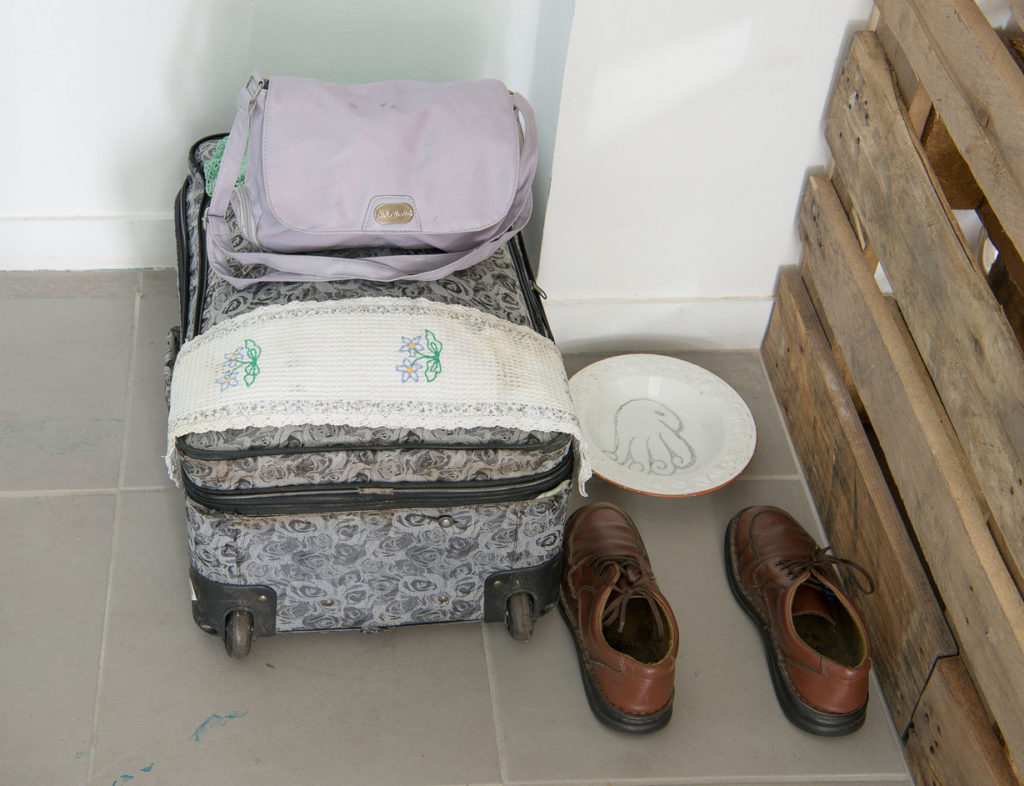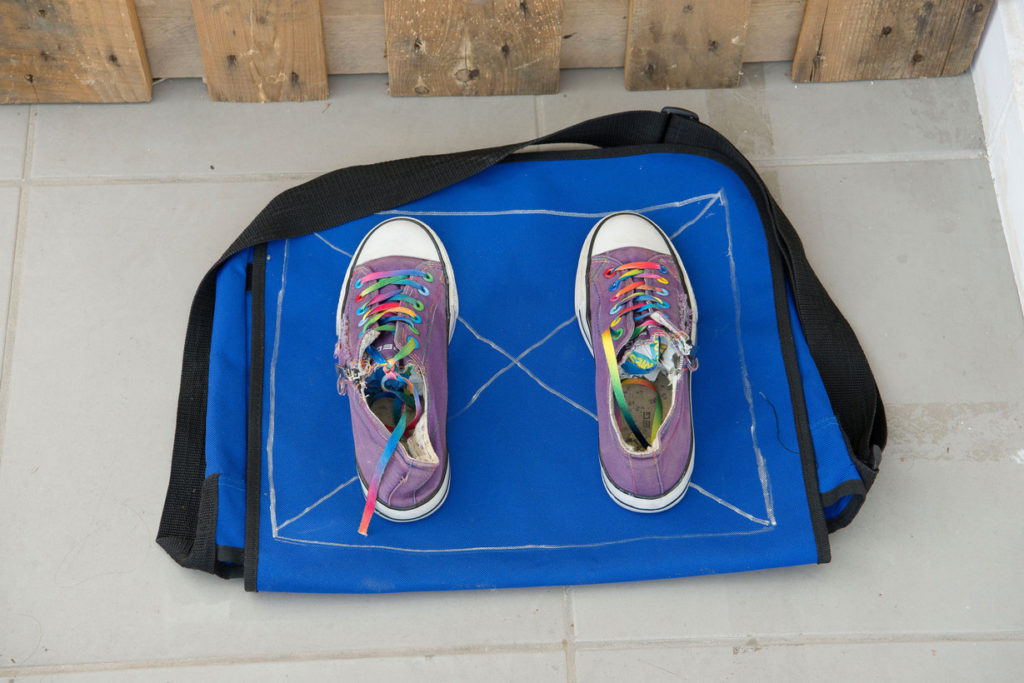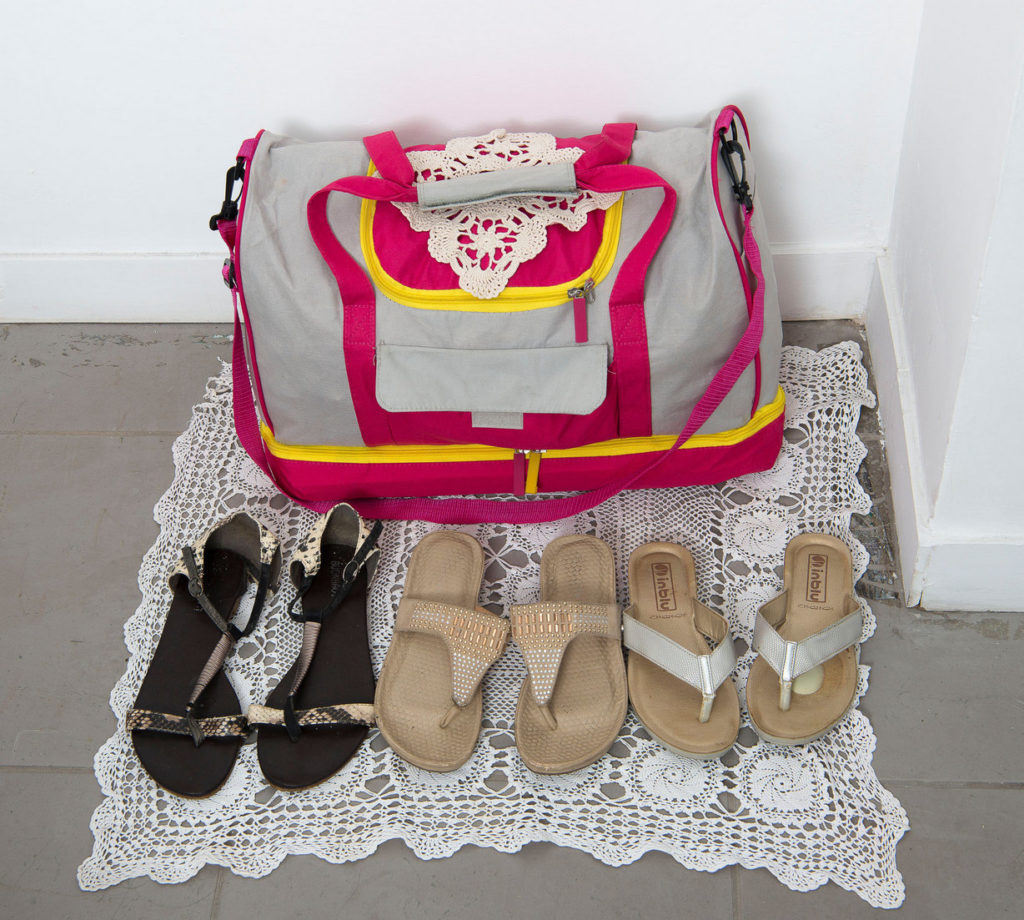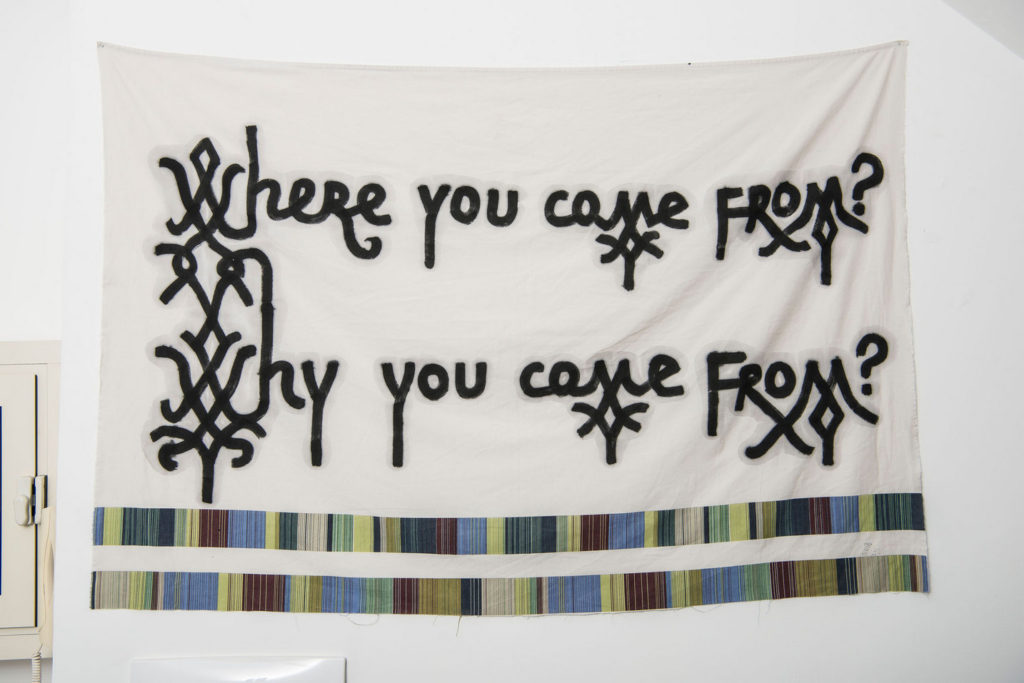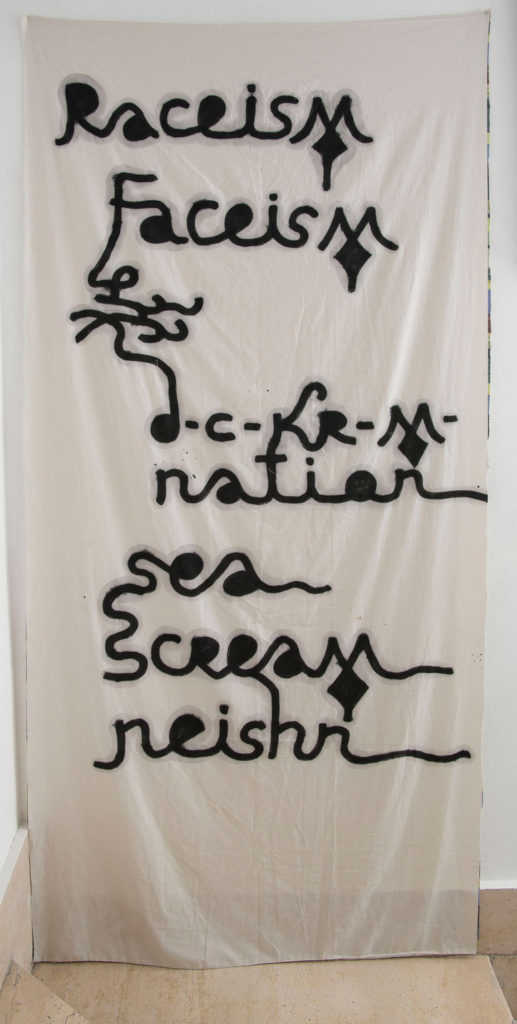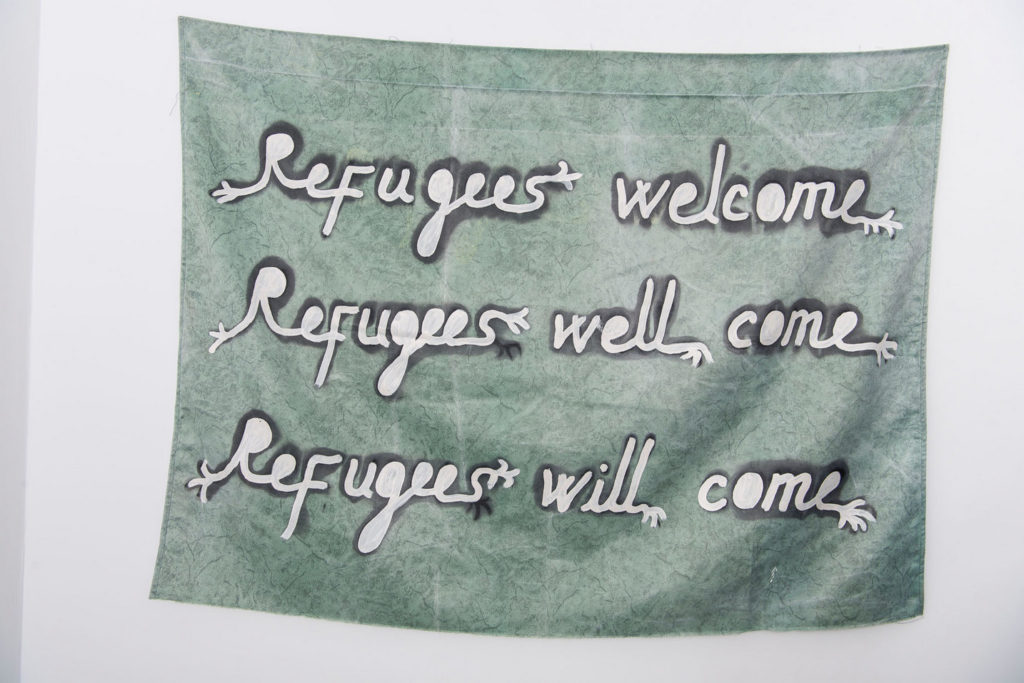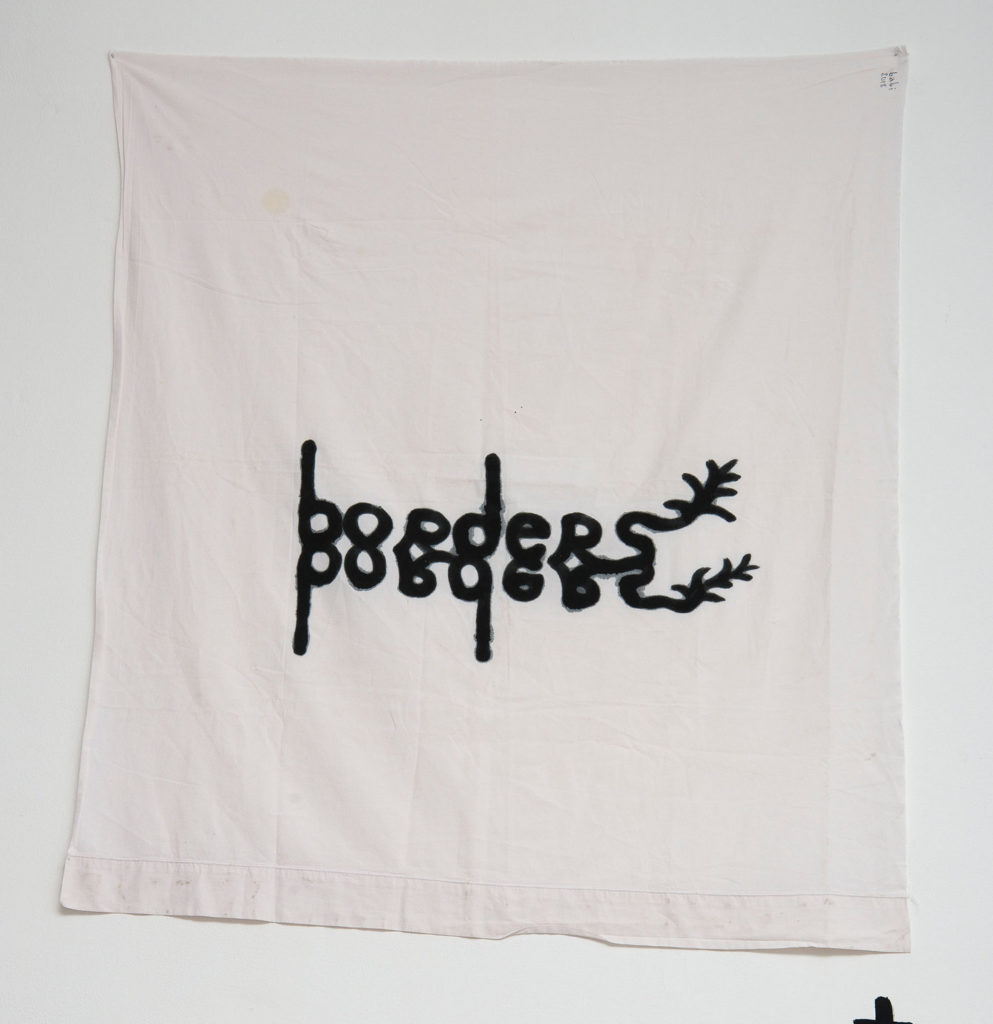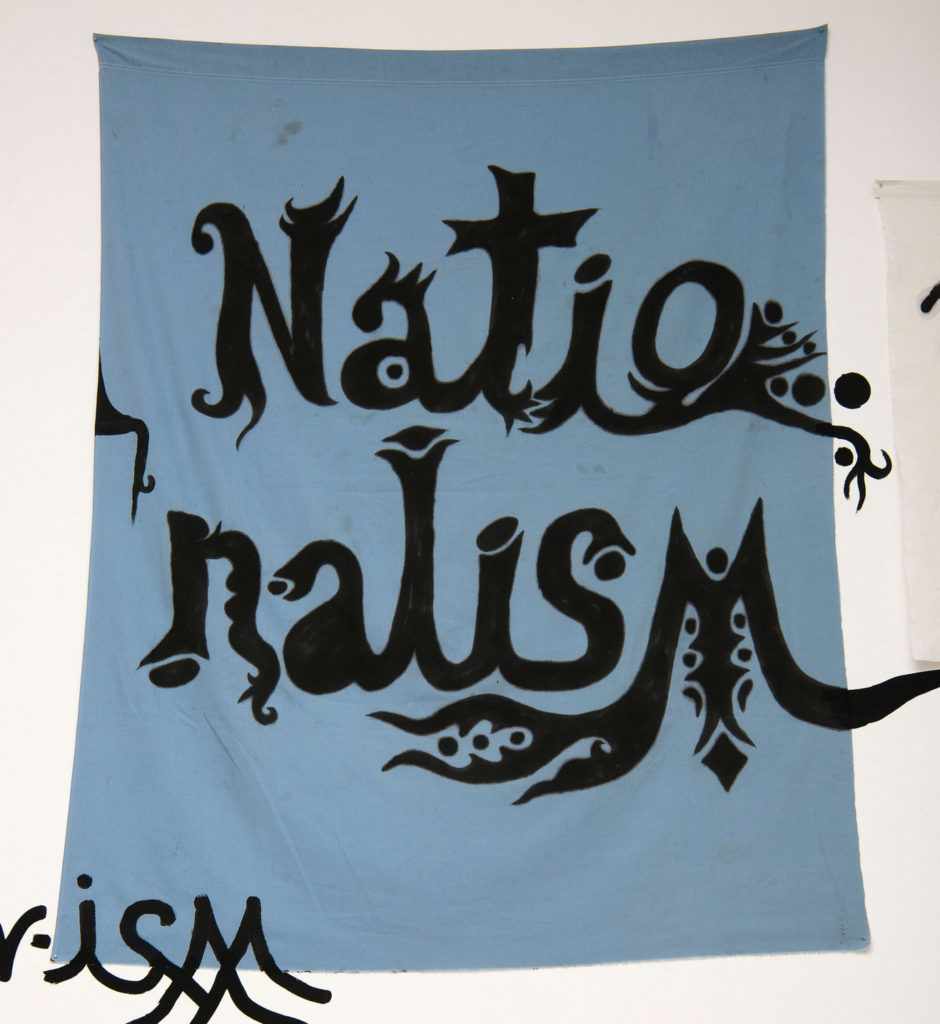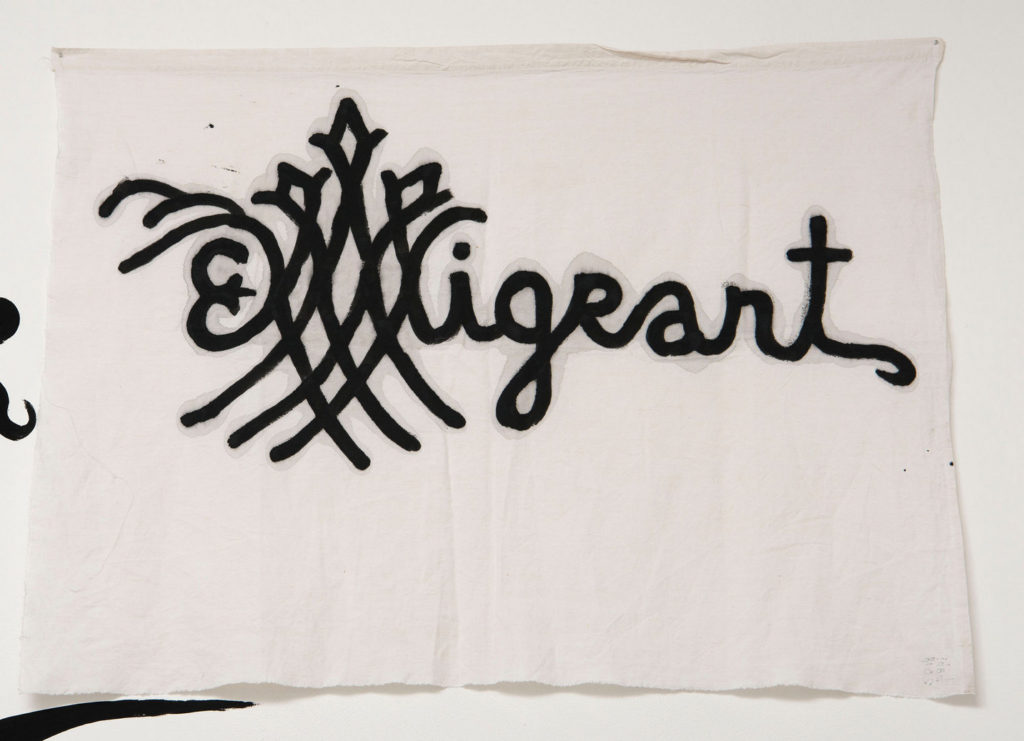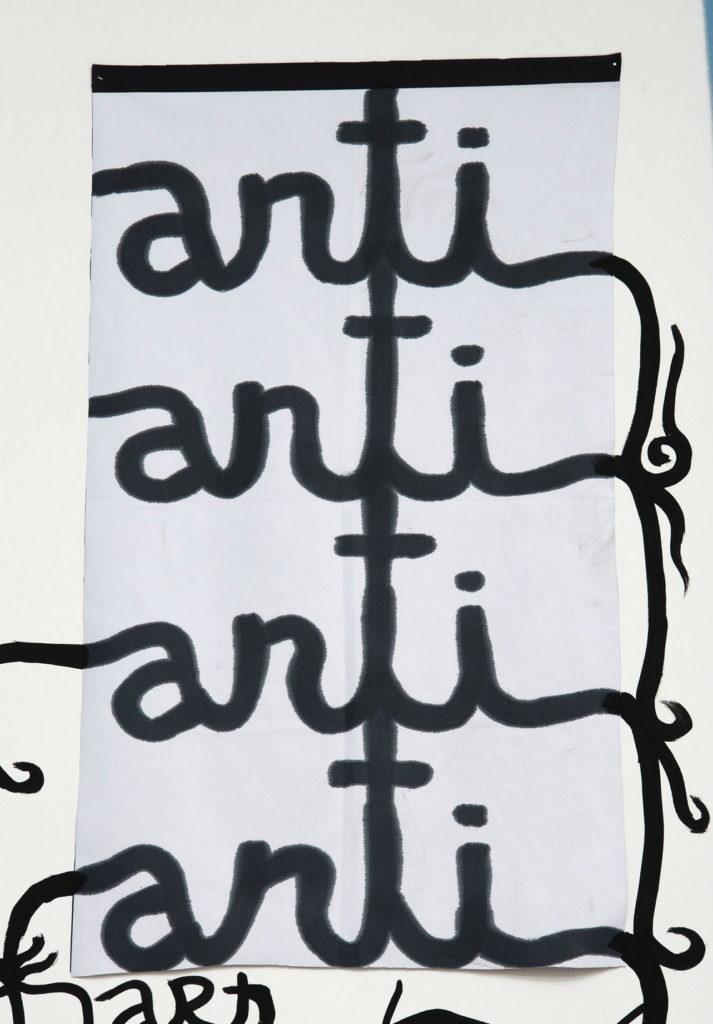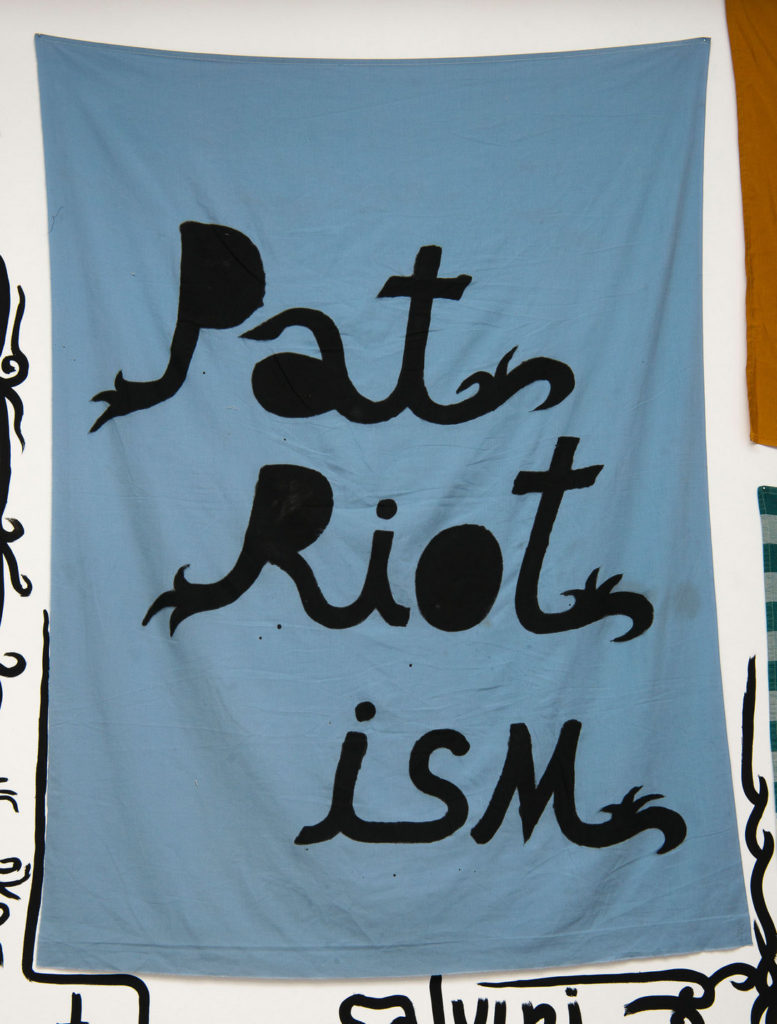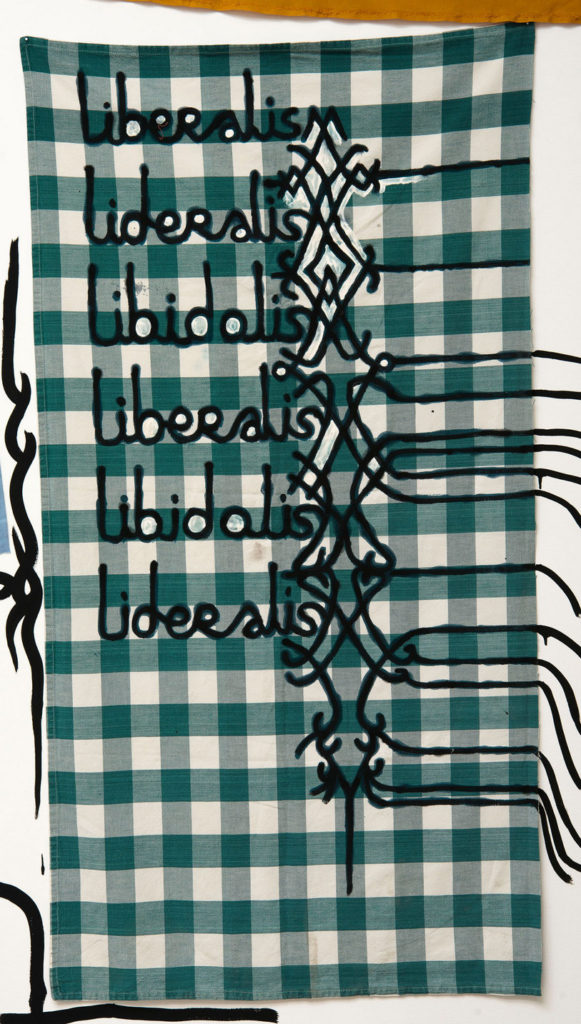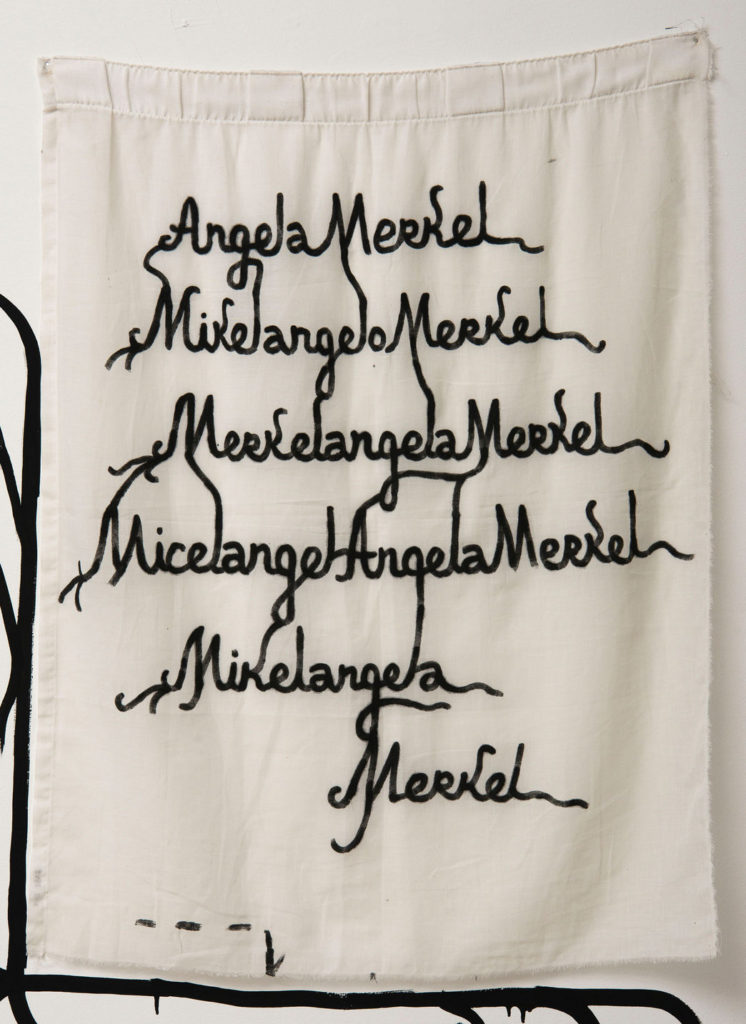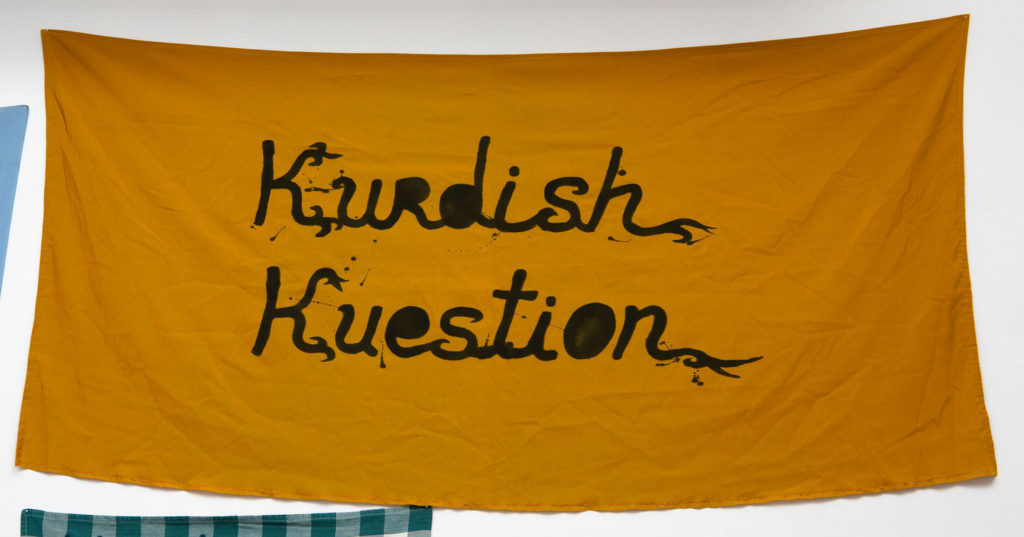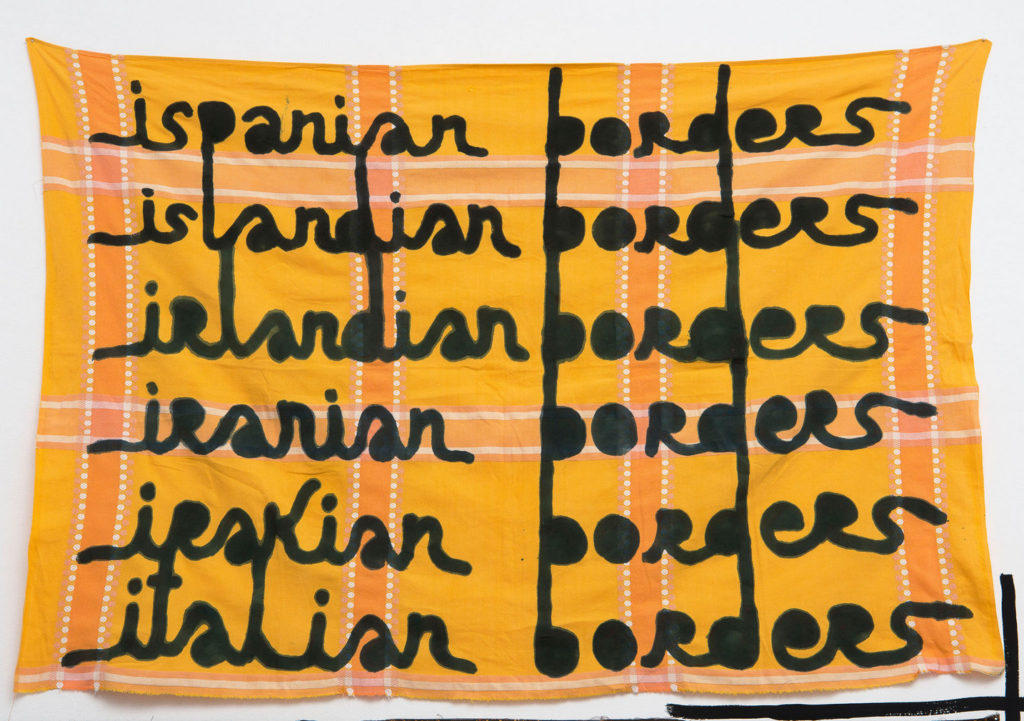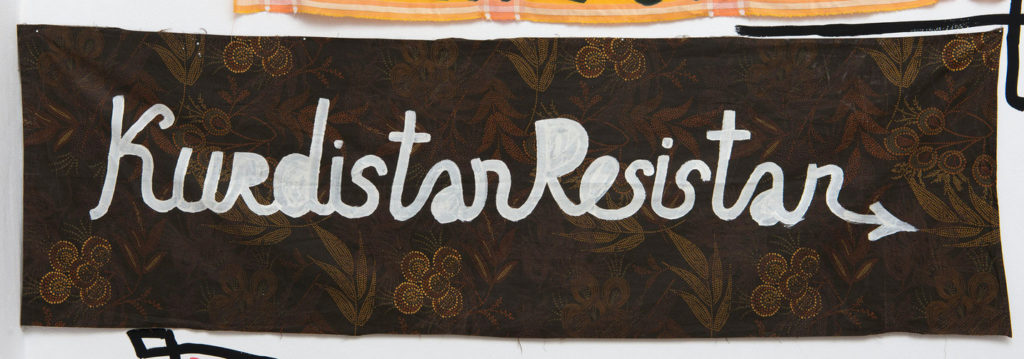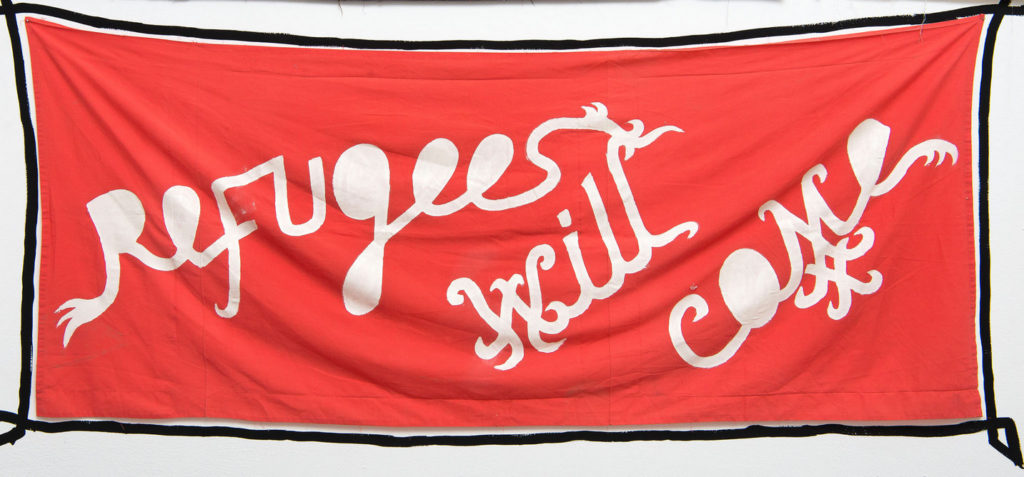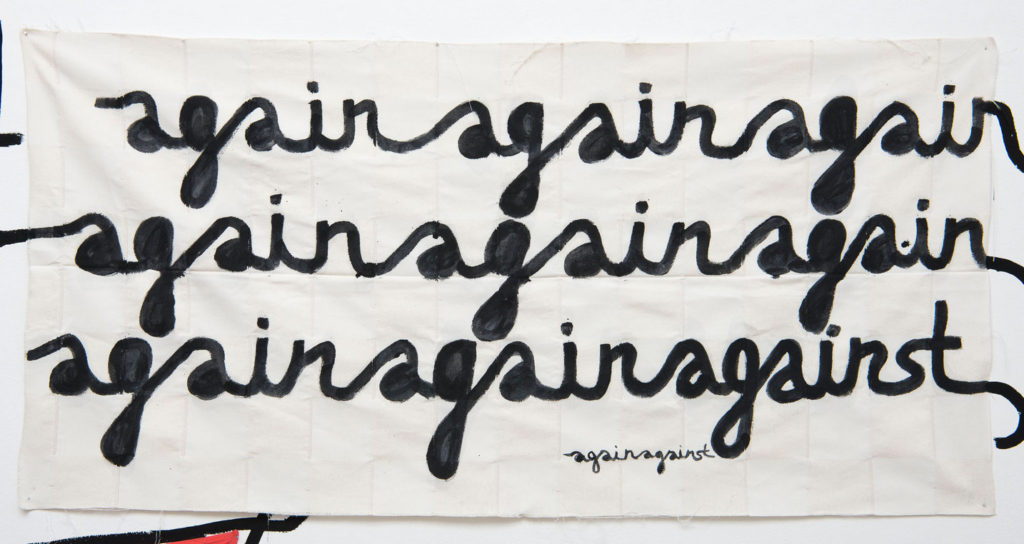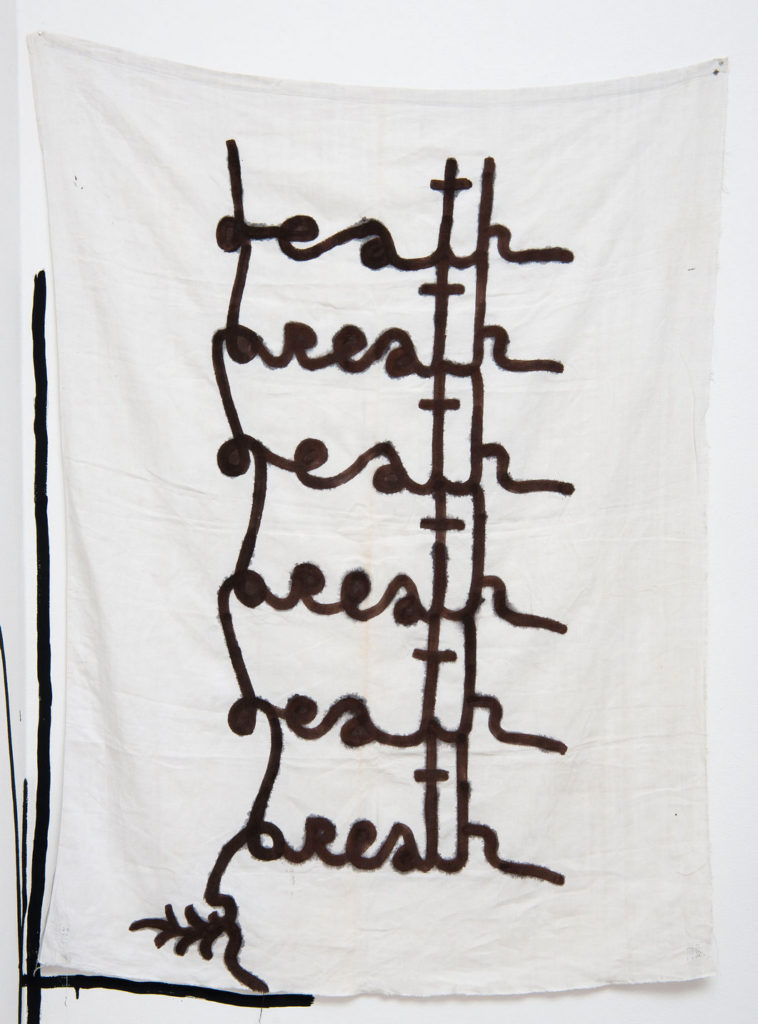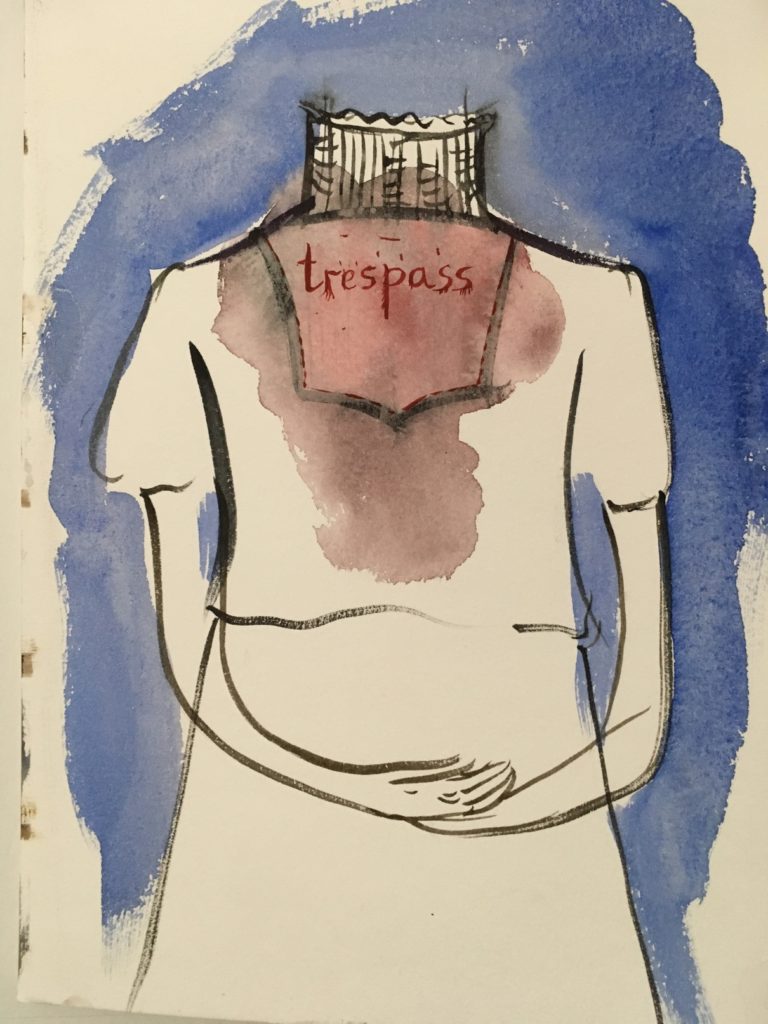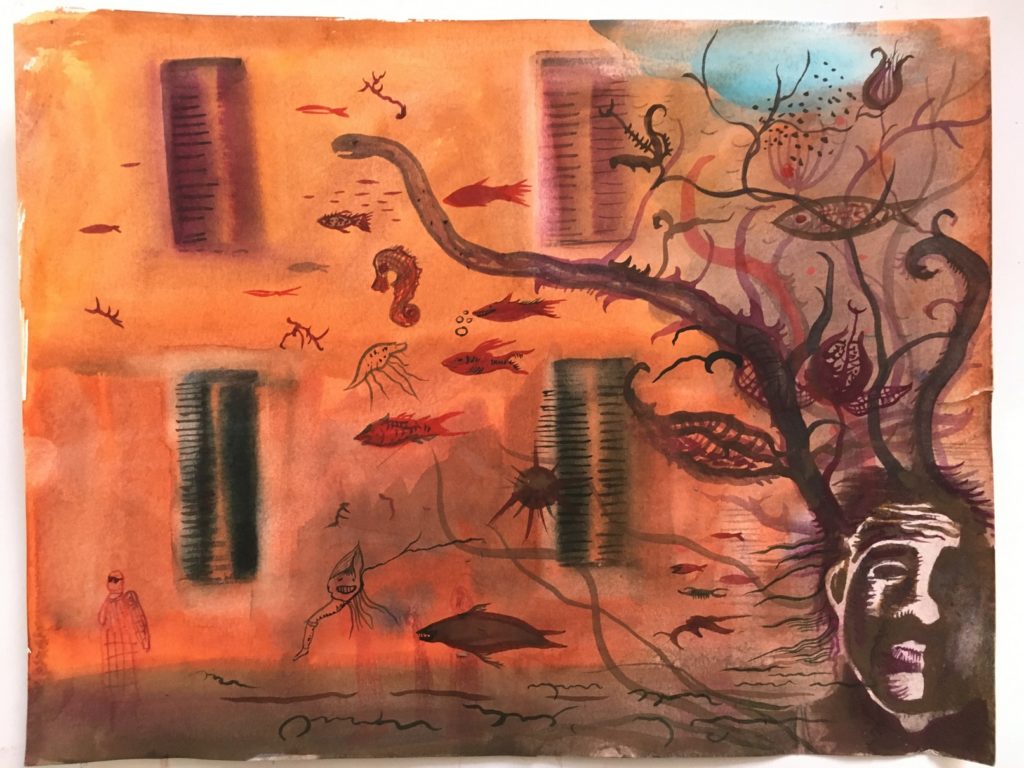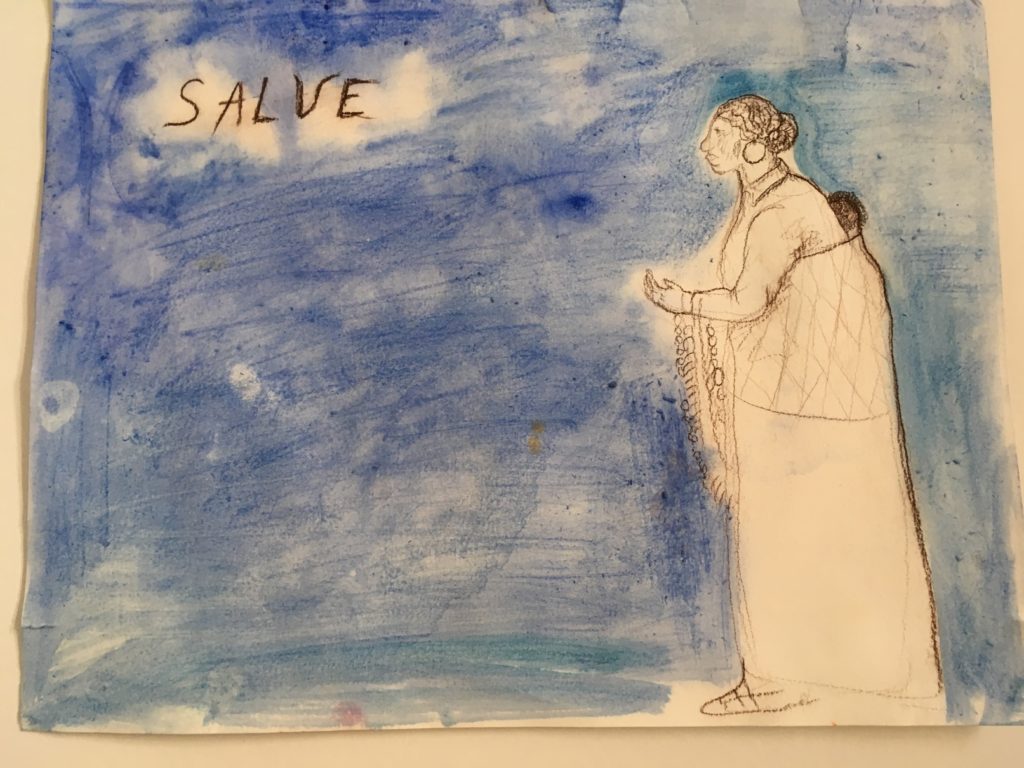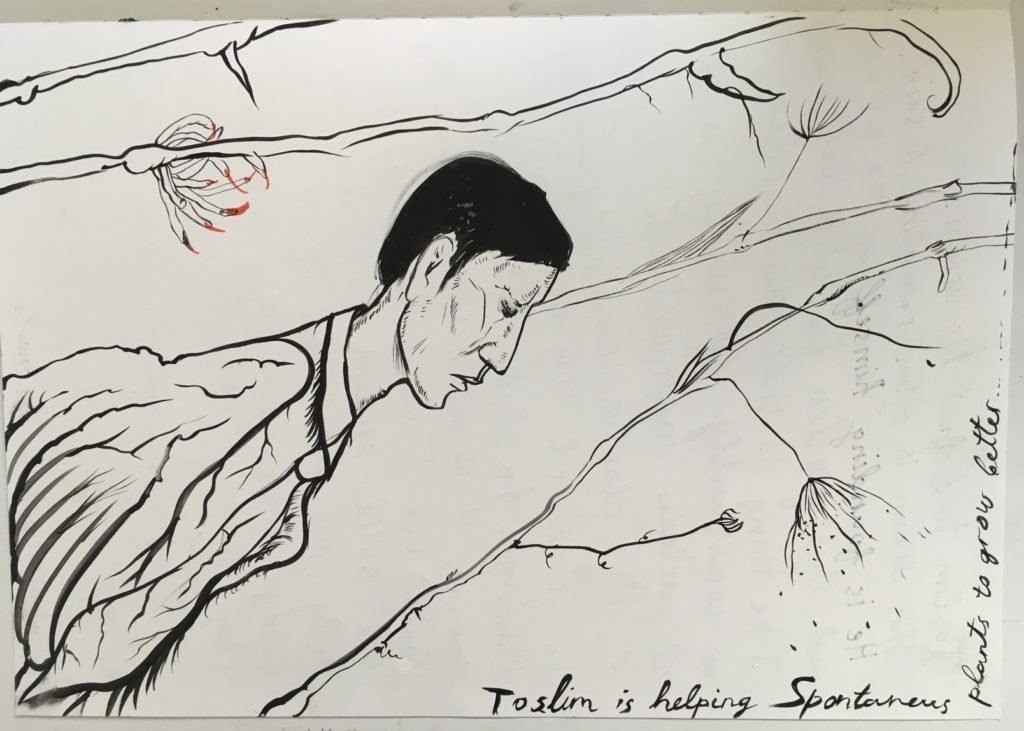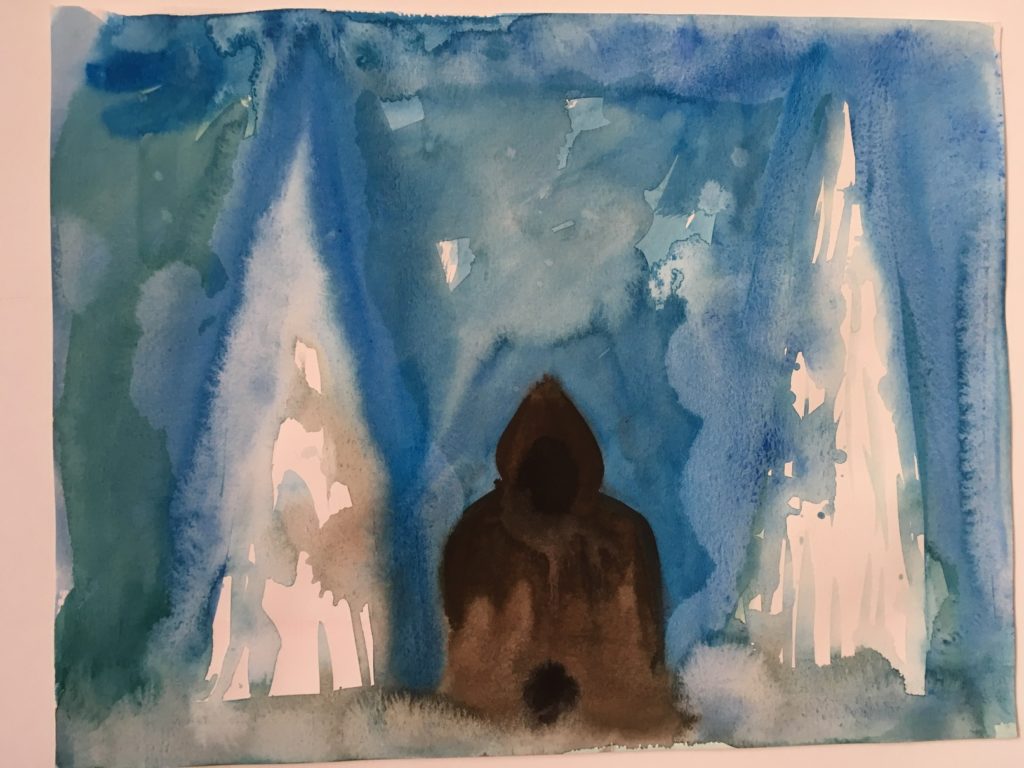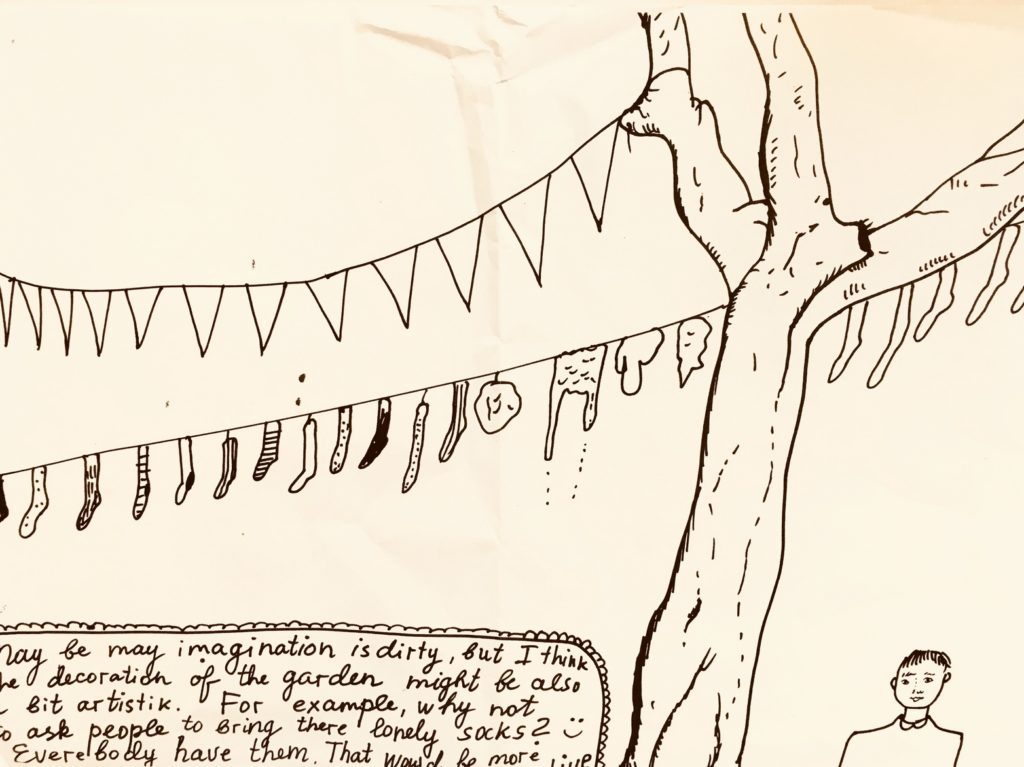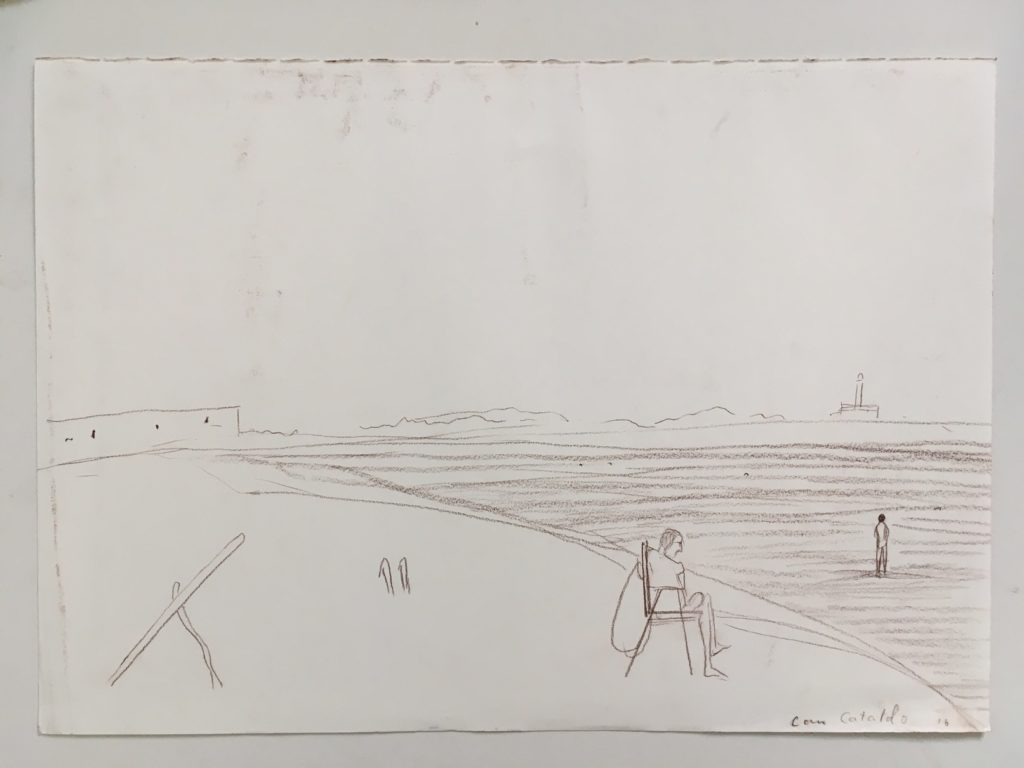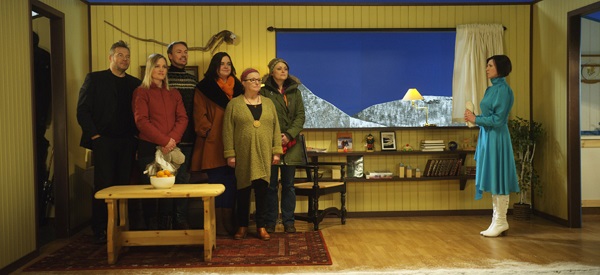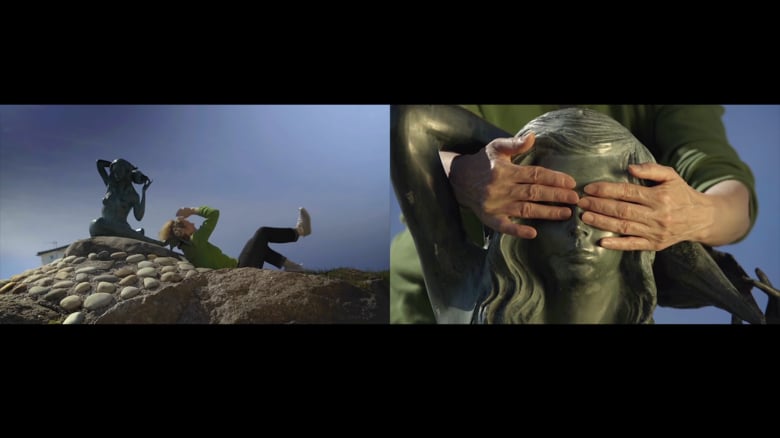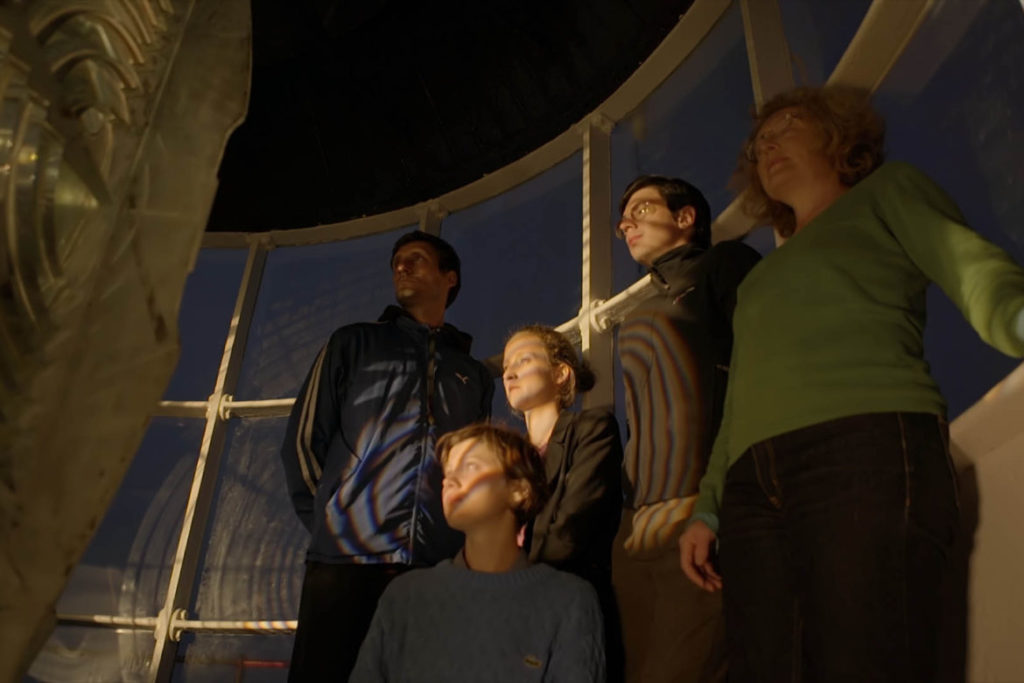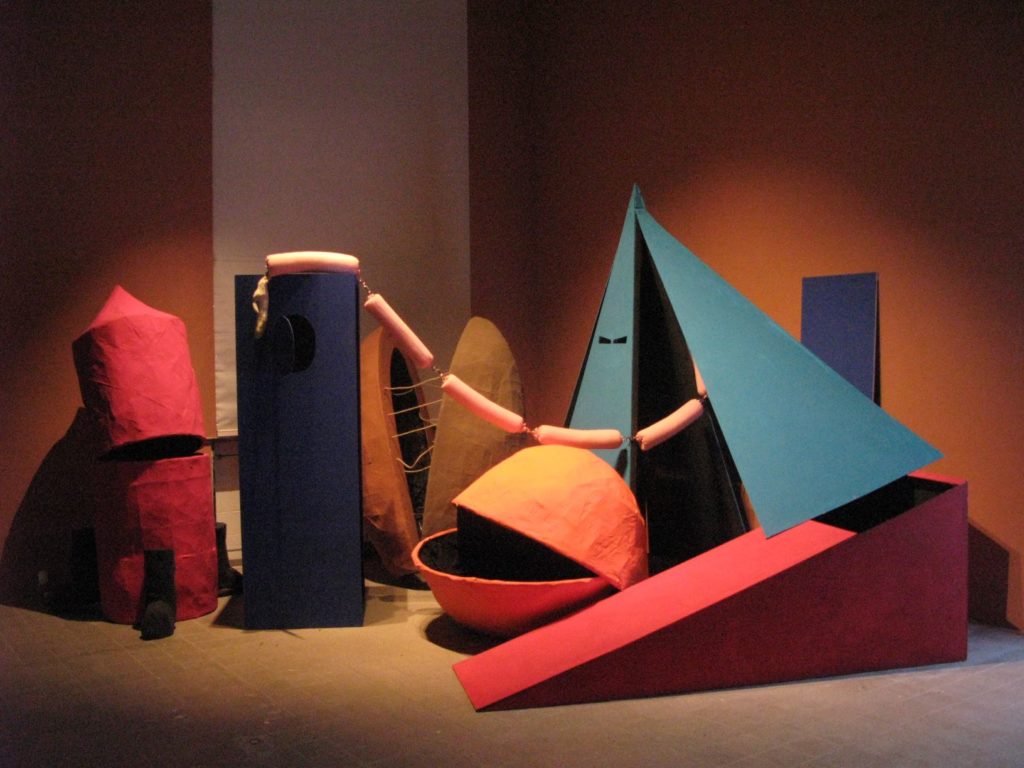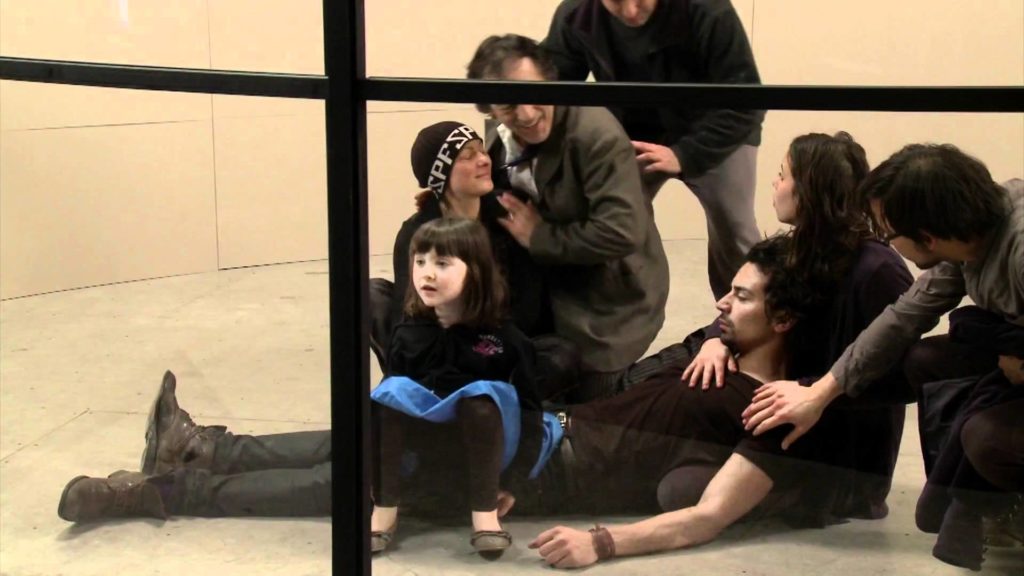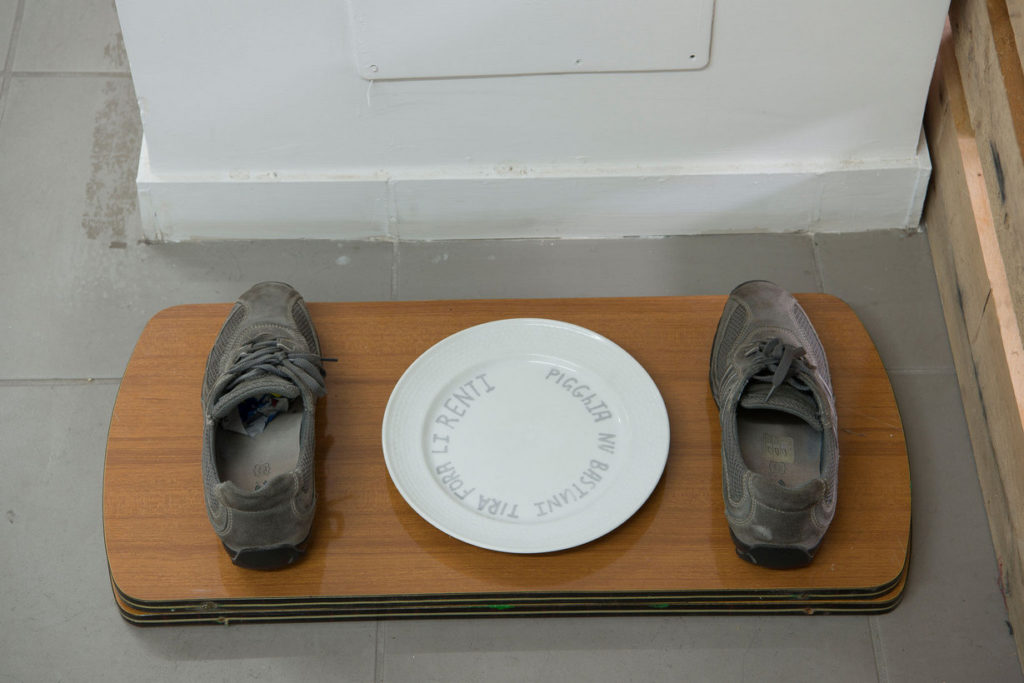Chto Delat
08.03.2024 – 04.05.2024
Exhibition views
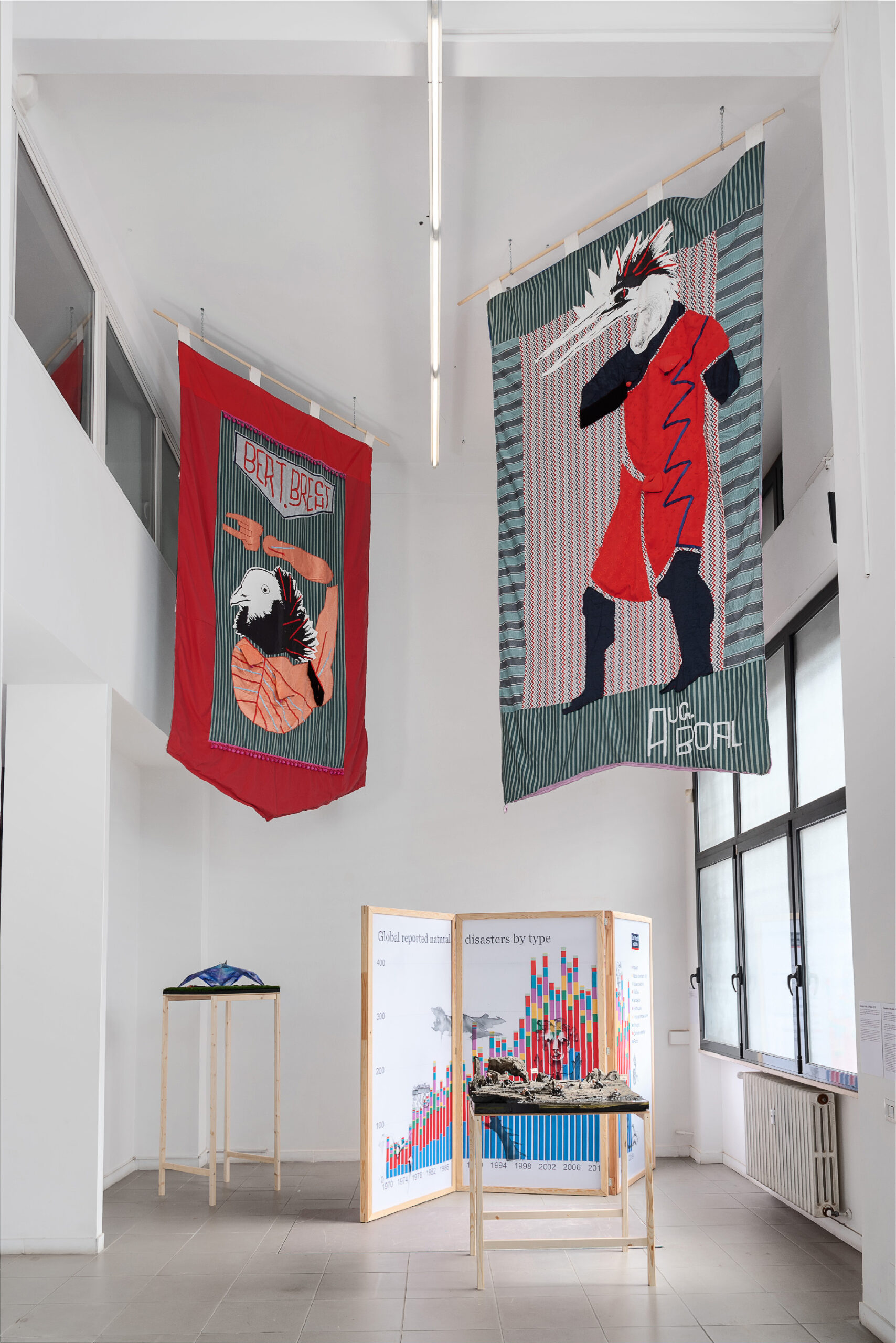
Bird Works (2018 – 2024), 2024, installation view at The Gallery Apart Rome (ground floor), photo by Eleonora Cerri Pecorella
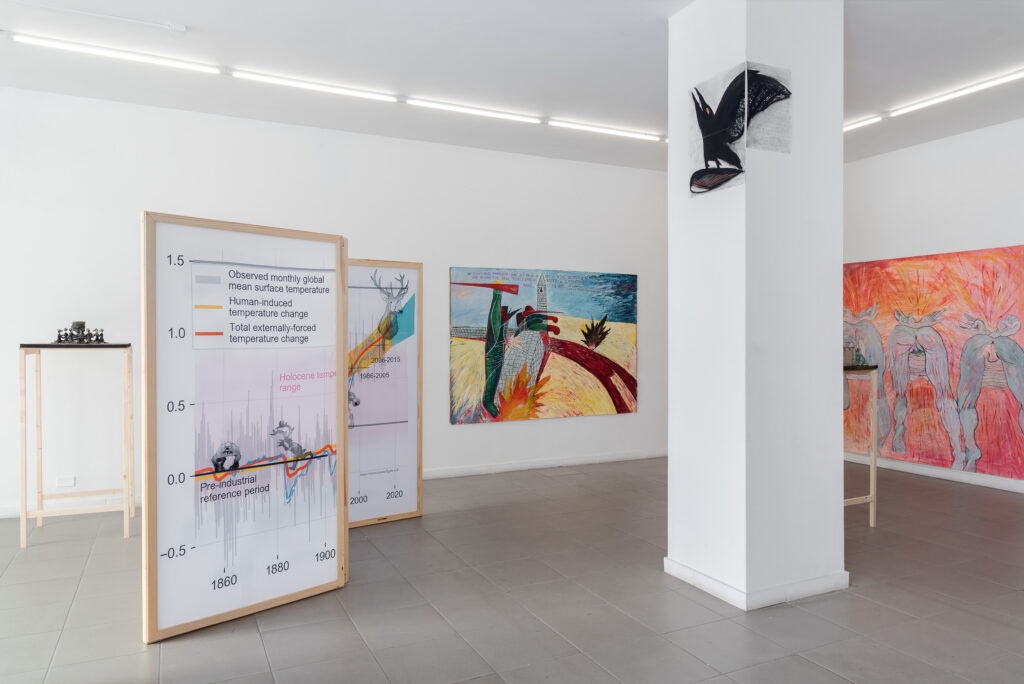
Bird Works (2018 – 2024), 2024, installation view at The Gallery Apart Rome (ground floor), photo by Eleonora Cerri Pecorella
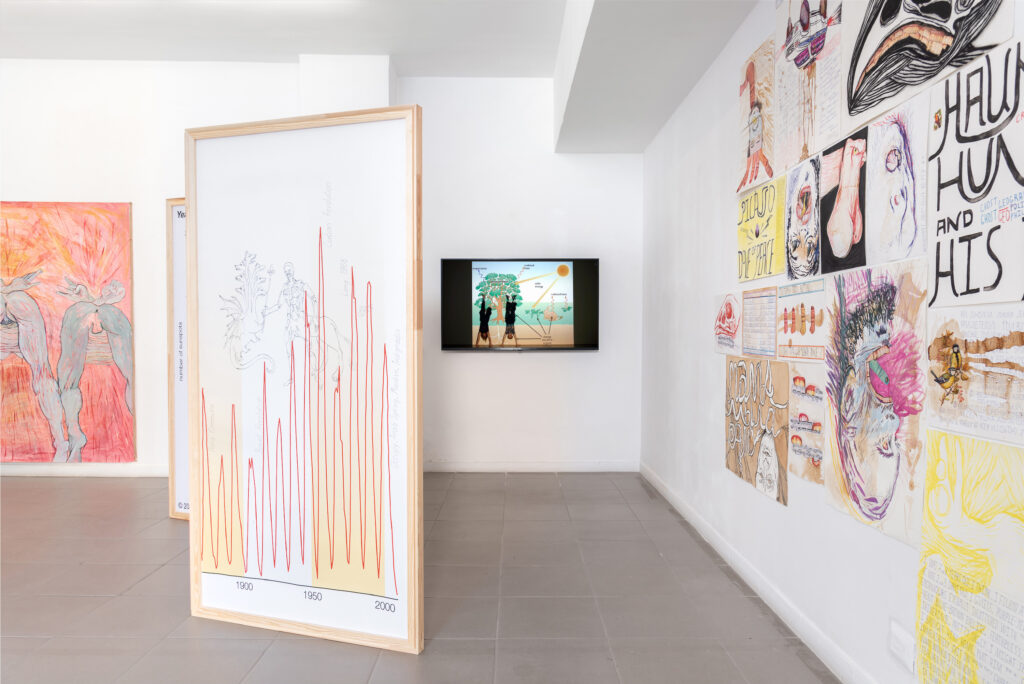
Bird Works (2018 – 2024), 2024, installation view at The Gallery Apart Rome (ground floor), photo by Eleonora Cerri Pecorella
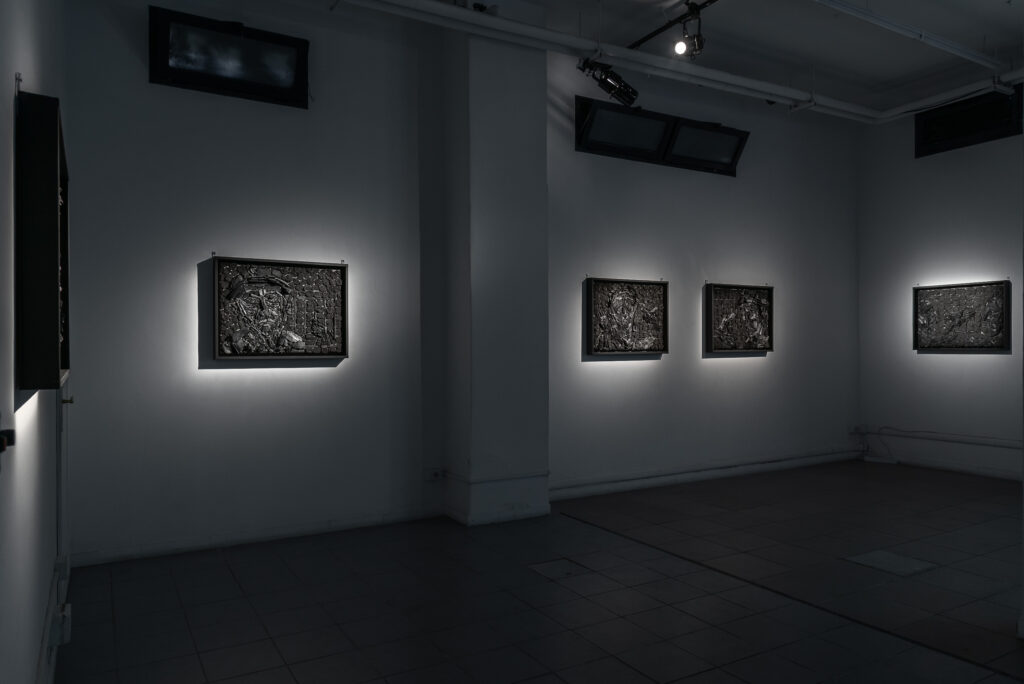
Bird Works (2018 – 2024), 2024, installation view at The Gallery Apart Rome (basement), photo by Eleonora Cerri Pecorella
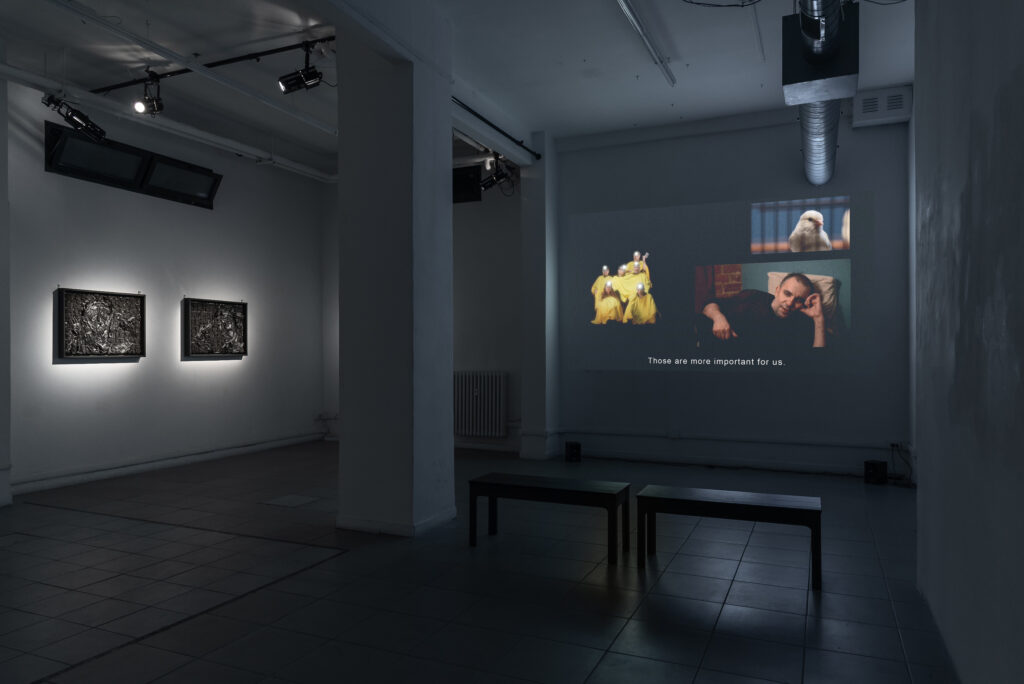
Bird Works (2018 – 2024), 2024, installation view at The Gallery Apart Rome (basement), photo by Eleonora Cerri Pecorella
Works
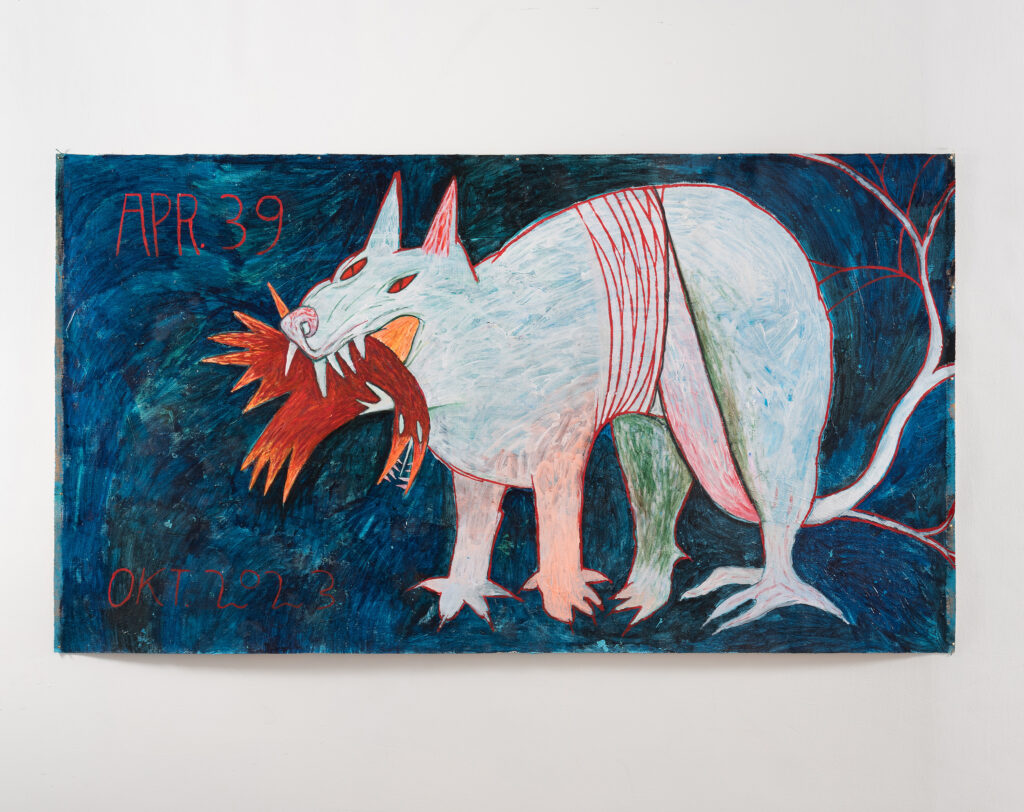
1939 Picasso from the series of Catalogo degli uccelli, 2023, acrylic on canvas, 125 x 210 cm
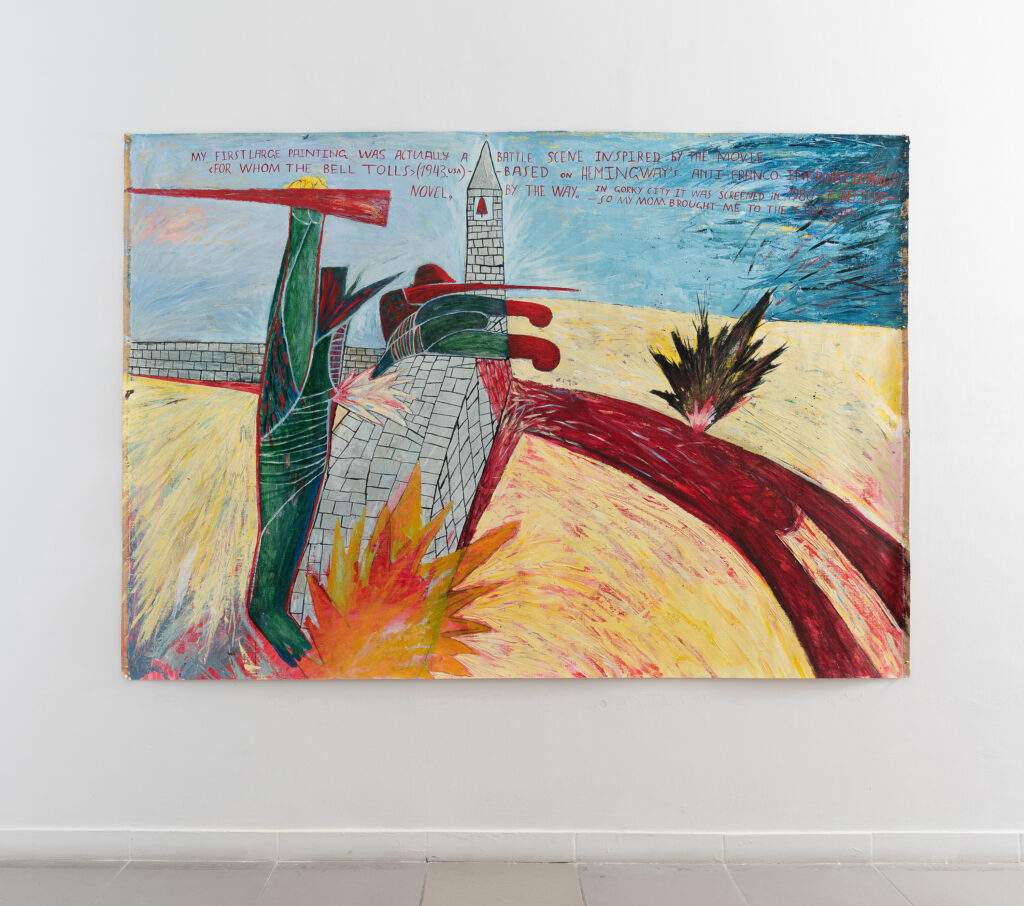
To Whom The Bell Tolls from the series of Catalogo degli uccelli, 2023, acrylic on canvas, 148 x 210 cm
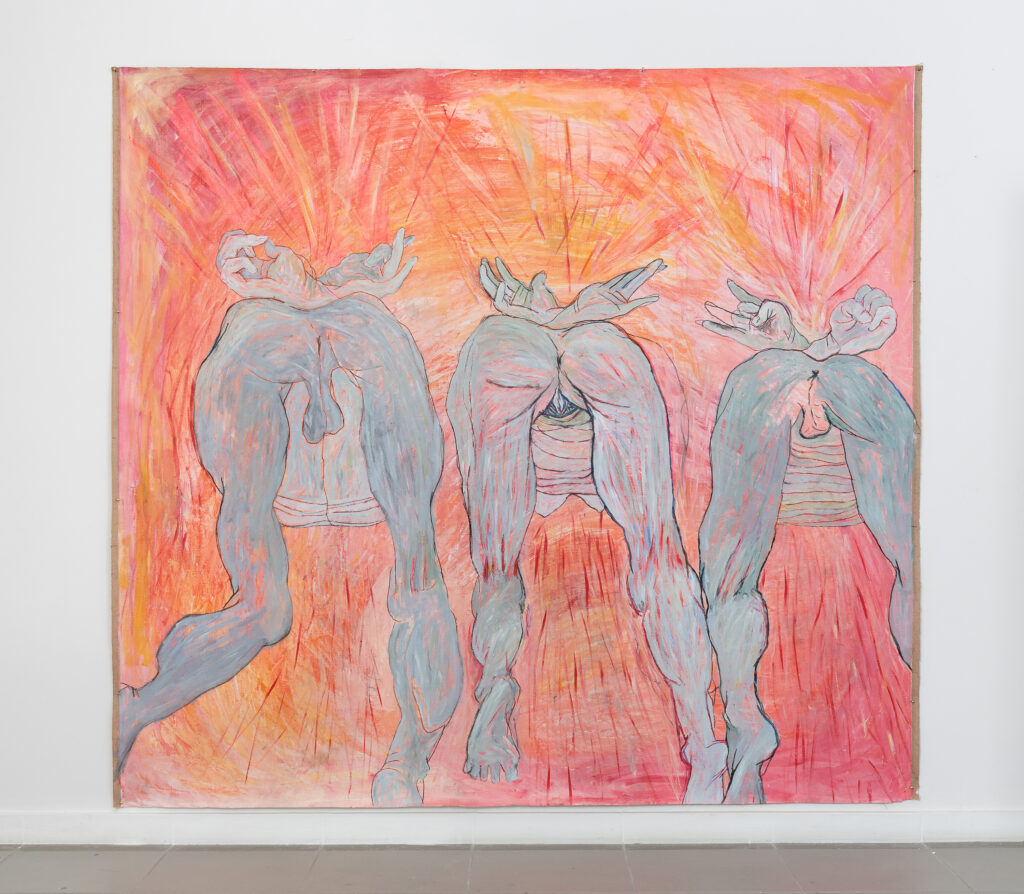
Helicopters (Valchirie) from the series of Catalogo degli uccelli , 2024, acrylic on canvas, 200 x 210 cm
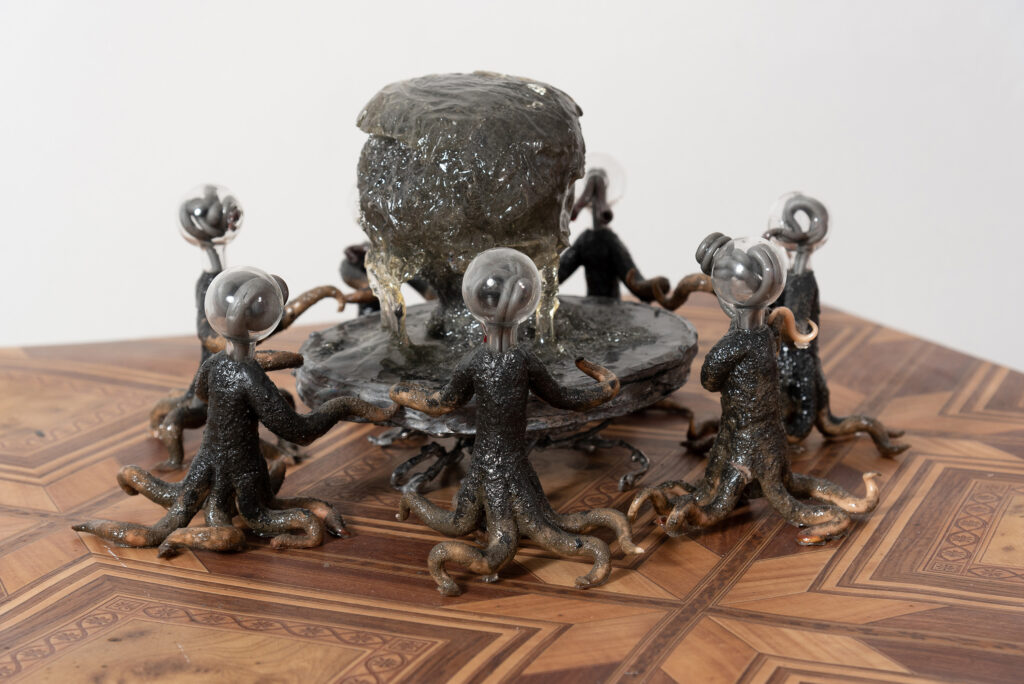
The class of Political Magic, 2023, mixed media, 59 x 59 x 145 cm
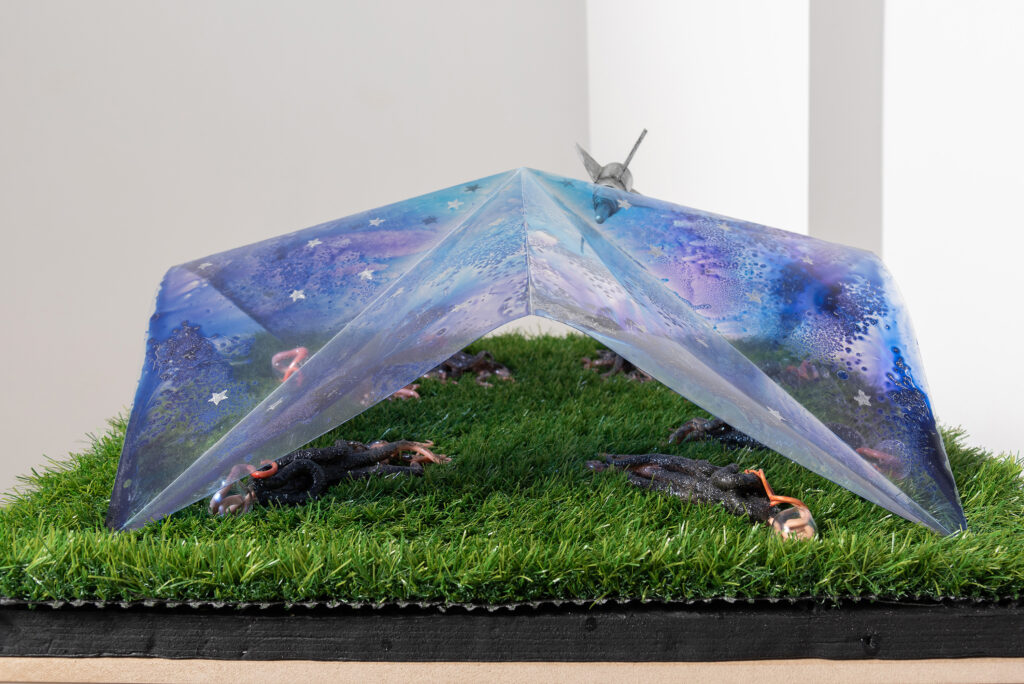
The class of Celestial Hardwood study, 2023, mixed media, 55 x 55 x 159 cm
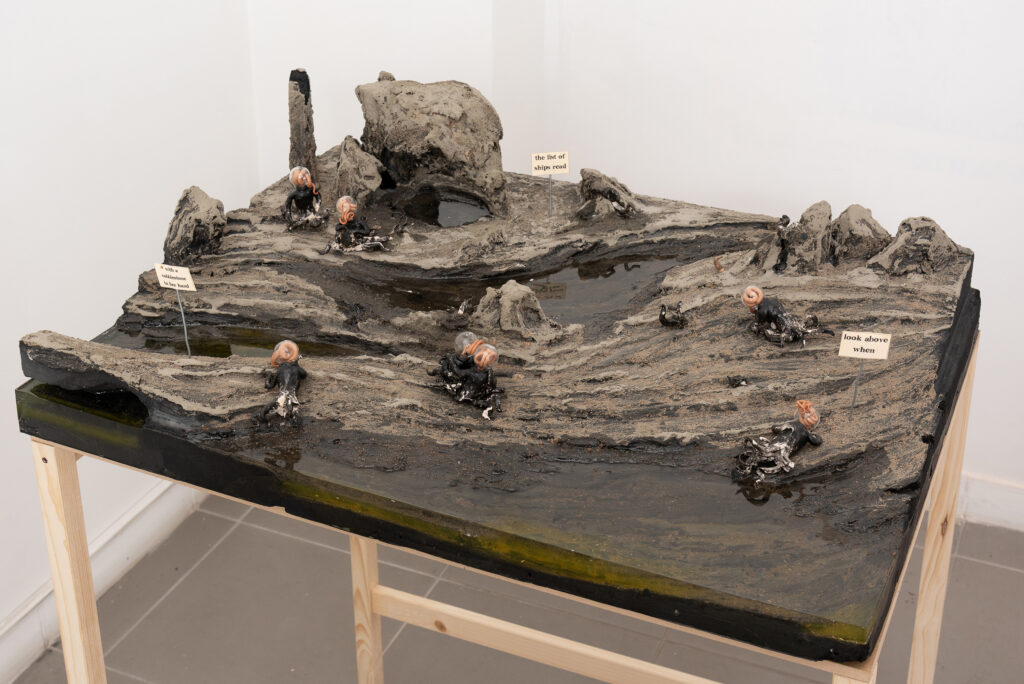
The class of External Environment study, 2023, mixed media, 60 x 81x 140 cm
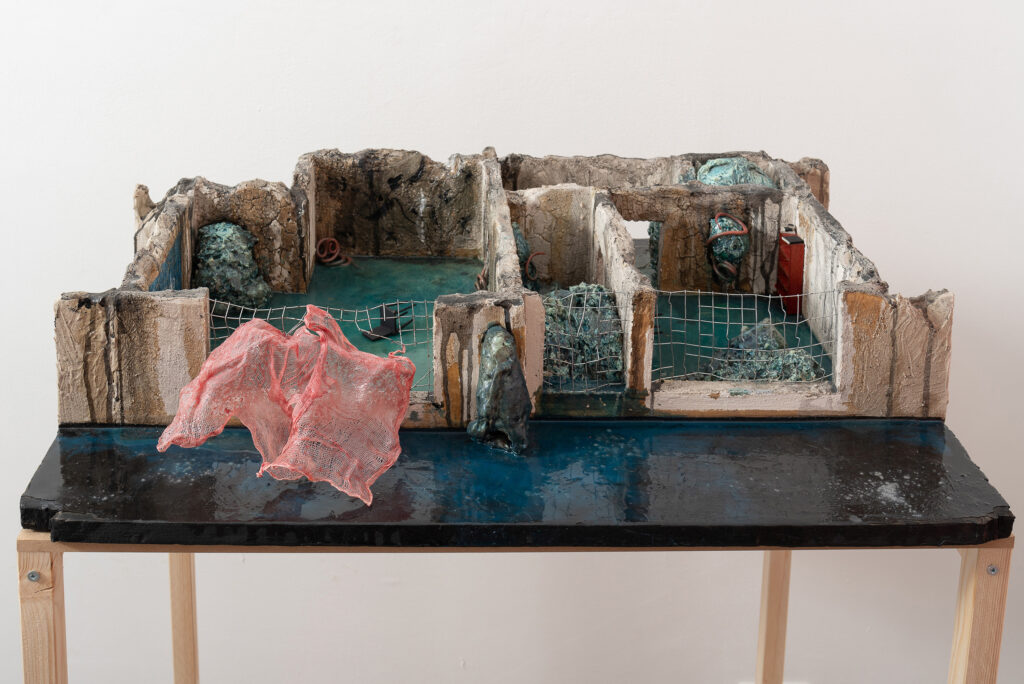
After we left, 2023, mixed media, 79 x 58 x 127 cm
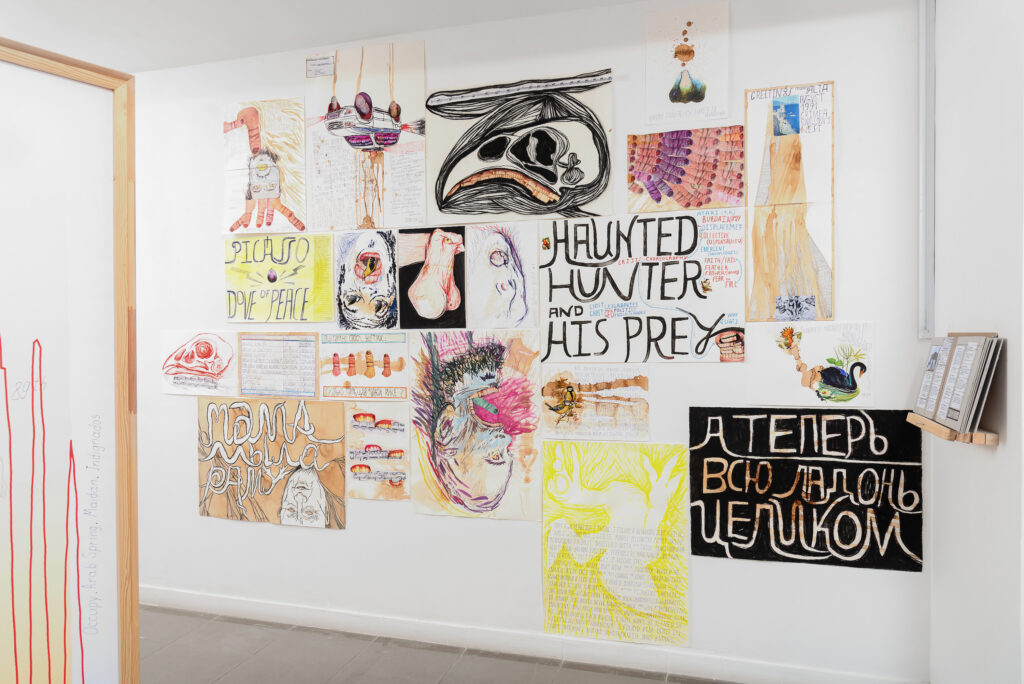
Untitled ( from the series: Il Catalogo degli Uccelli), 2022 – on going, mixed techniques, various dimensions
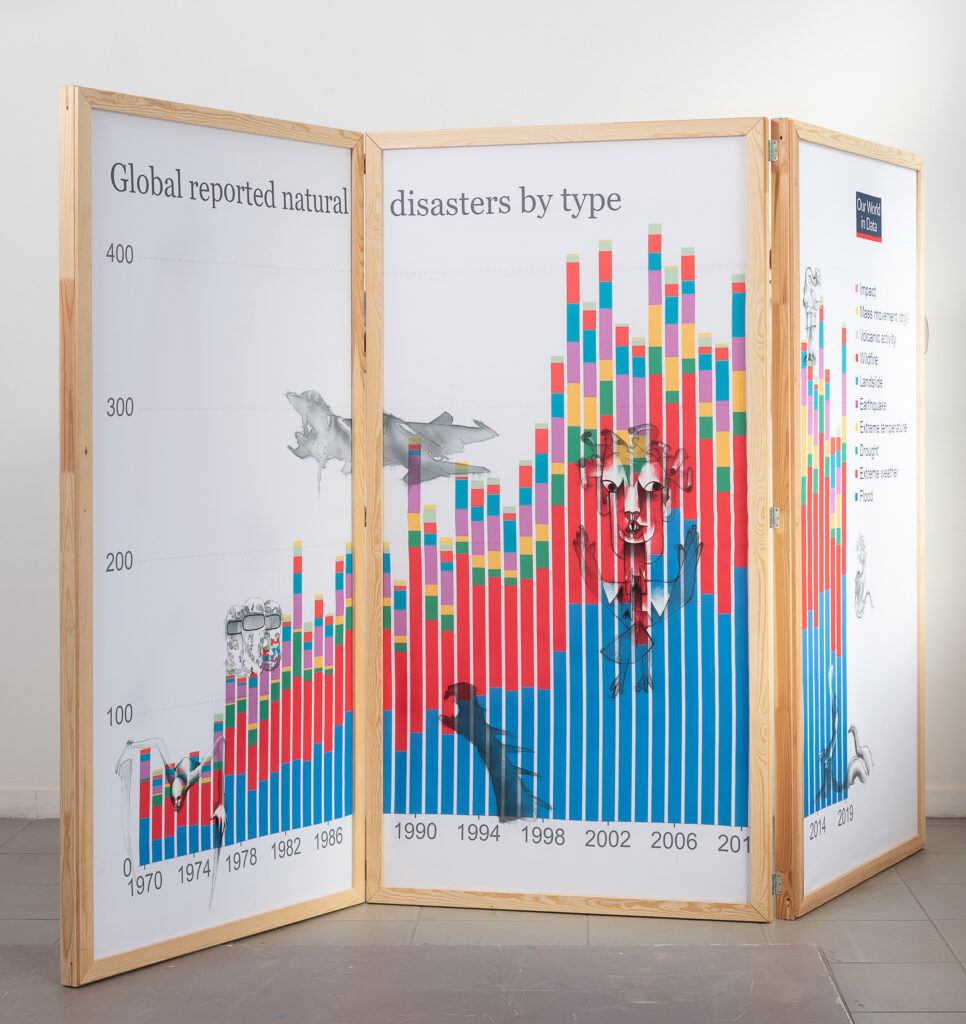
The screens. On the margins, 2020, digital prints on artificial satin, hand drawing with acrylic, double-sided, wooden frame, graphics by Evgeny Antonov, 180 x 90
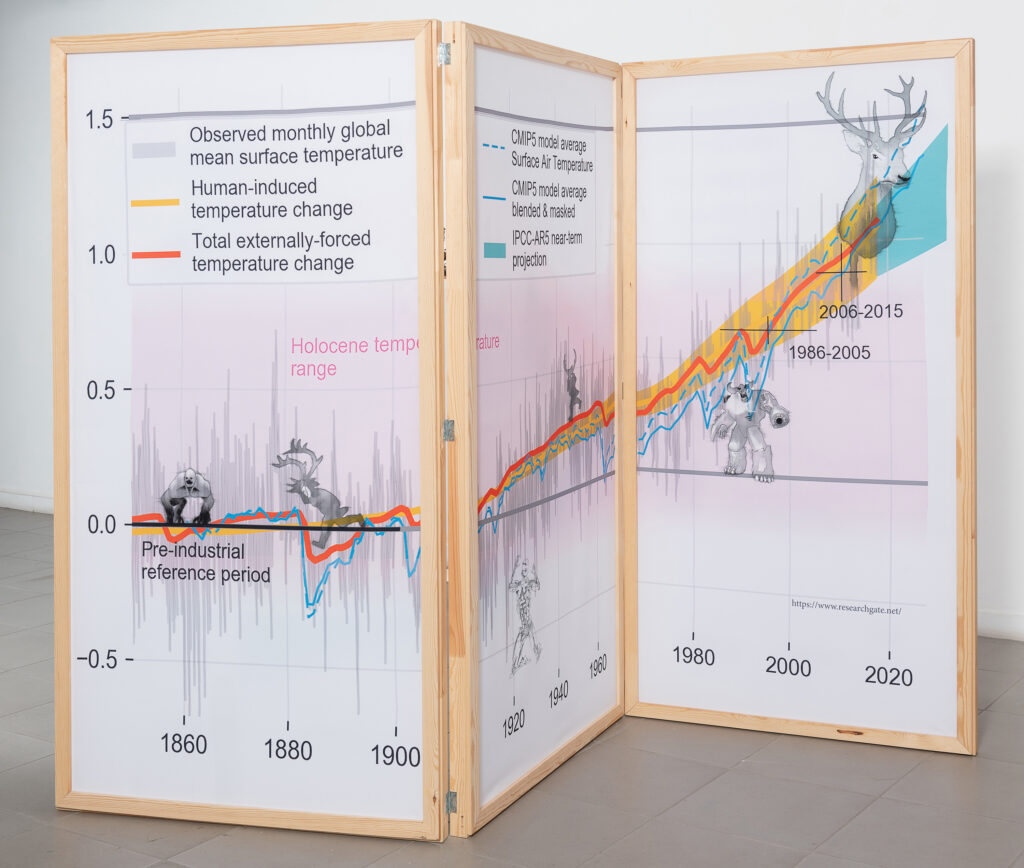
The screens. On the margins, 2020, digital prints on artificial satin, hand drawing with acrylic, double-sided, wooden frame, graphics by Evgeny Antonov, 180 x 90
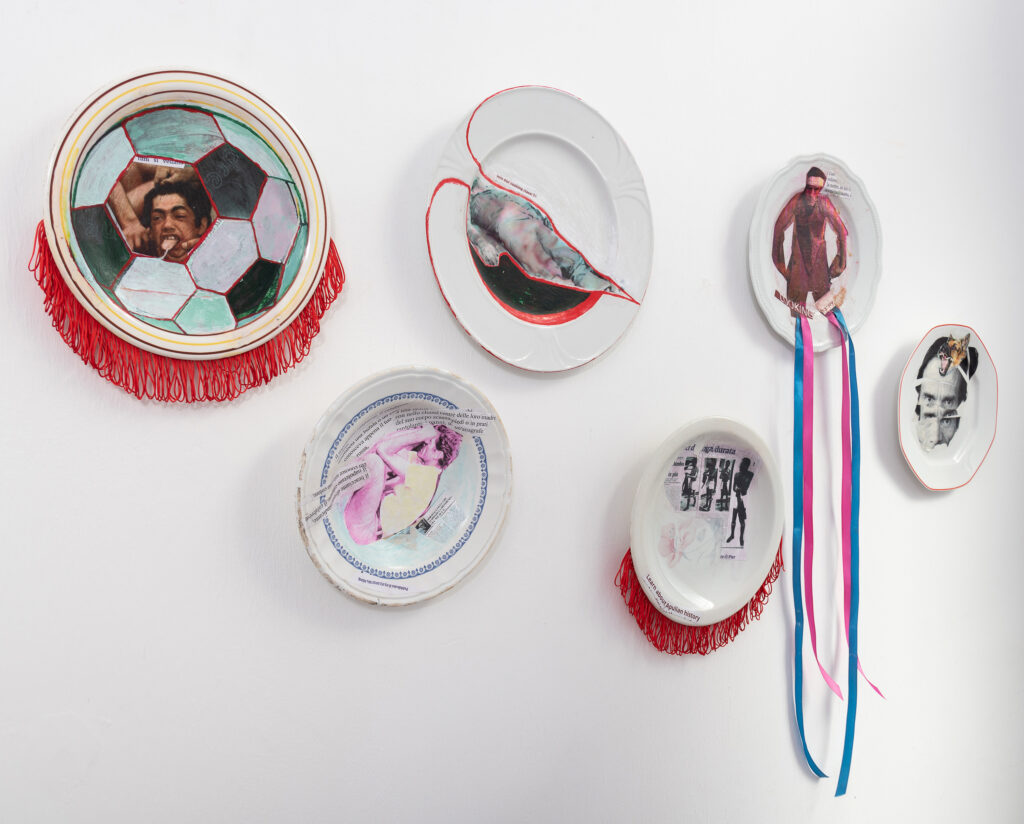
Piatti pronti per Pasolini ,2022 – on going, found objects, mixed collage, mixed technique, various dimensions

Strange Birds of Pedion, 2018, texile, 360 x 170 cm
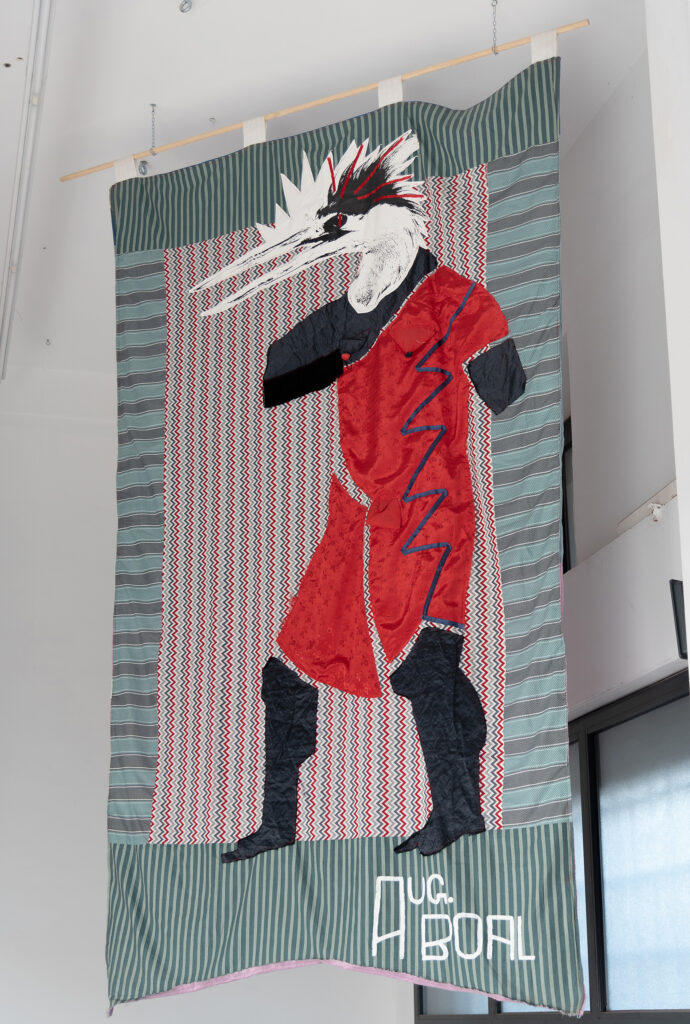
Strange Birds of Pedion, 2018, texile, 360 x 170 cm
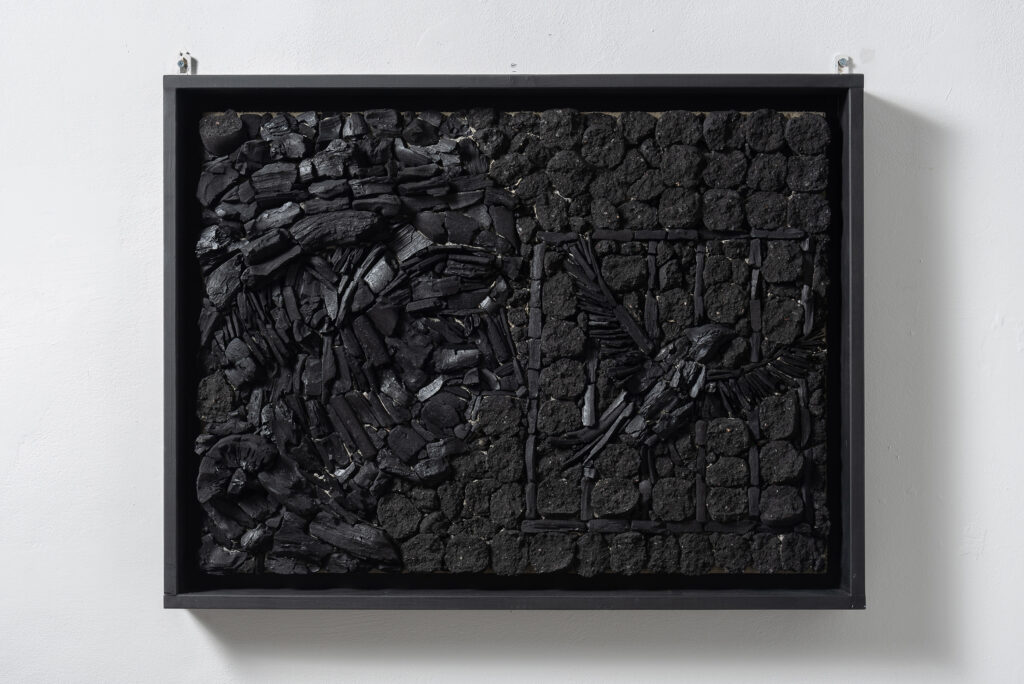
Canary Archive, 2023, charcoal mosaics (with the artistic and technical assistance of Ada Abudrushevich), 60 x 90 cm
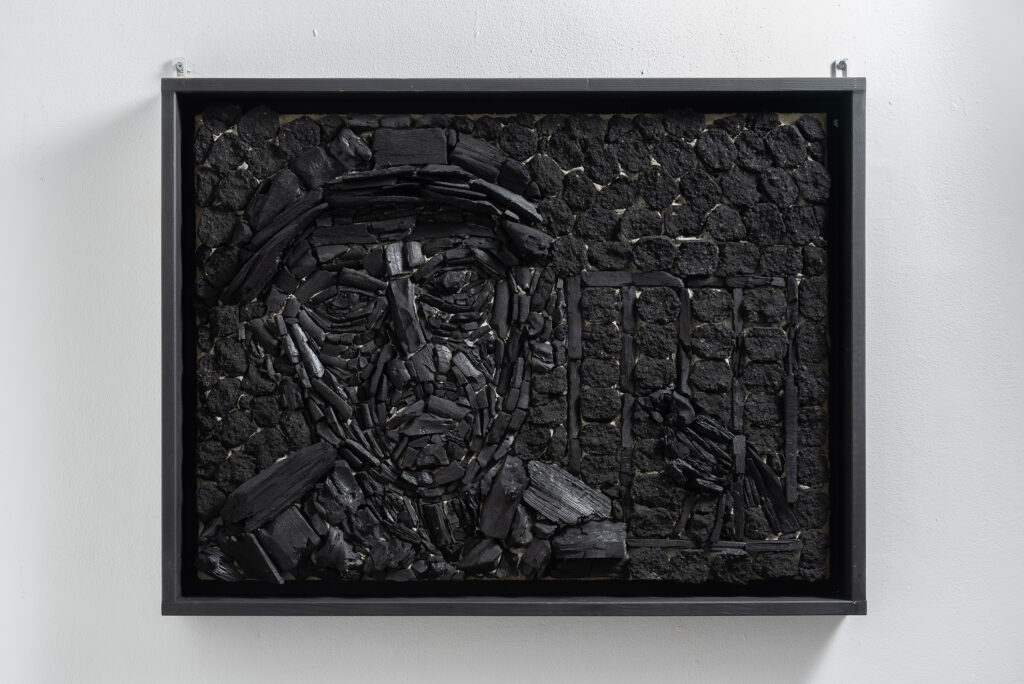
Canary Archive, 2023, charcoal mosaics (with the artistic and technical assistance of Ada Abudrushevich), 60 x 90 cm
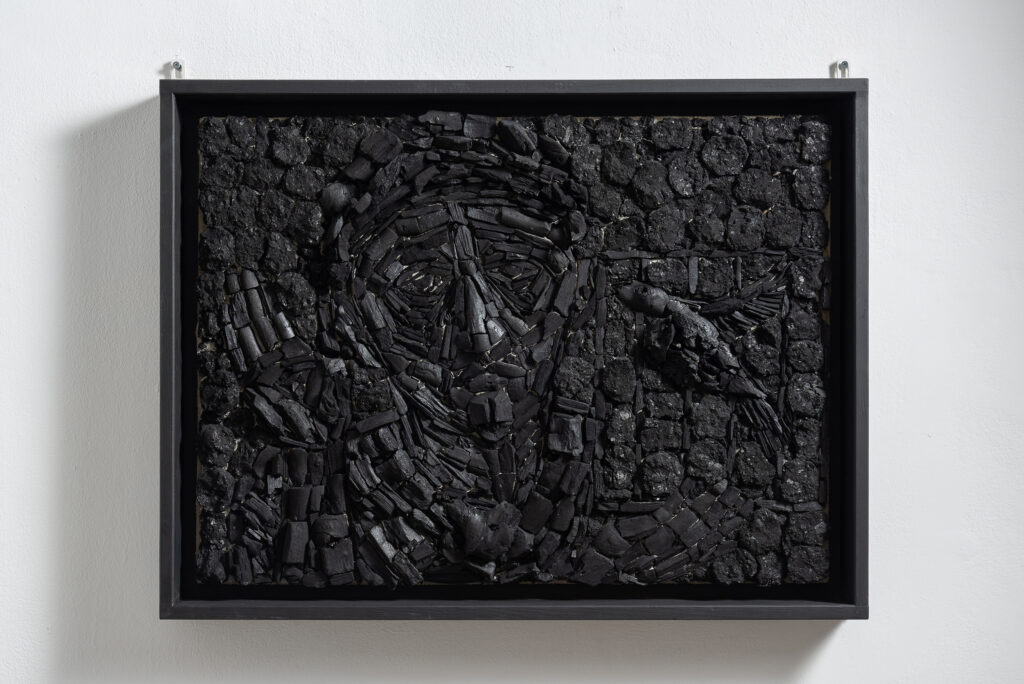
Canary Archive, 2023, charcoal mosaics (with the artistic and technical assistance of Ada Abudrushevich), 60 x 90 cm
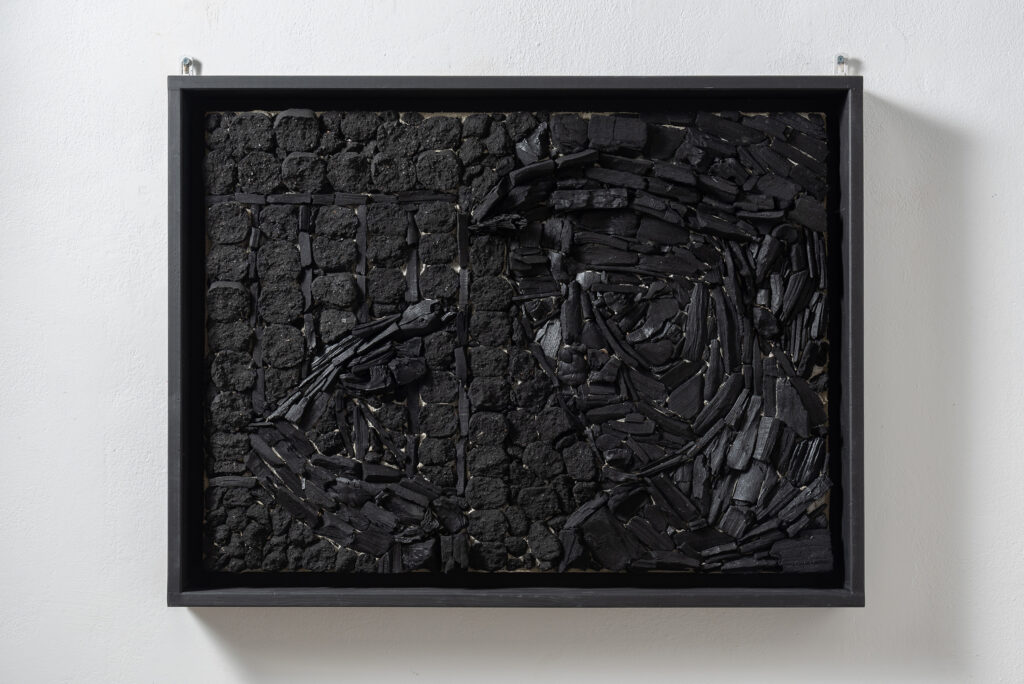
Canary Archive, 2023, charcoal mosaics (with the artistic and technical assistance of Ada Abudrushevich), 60 x 90 cm
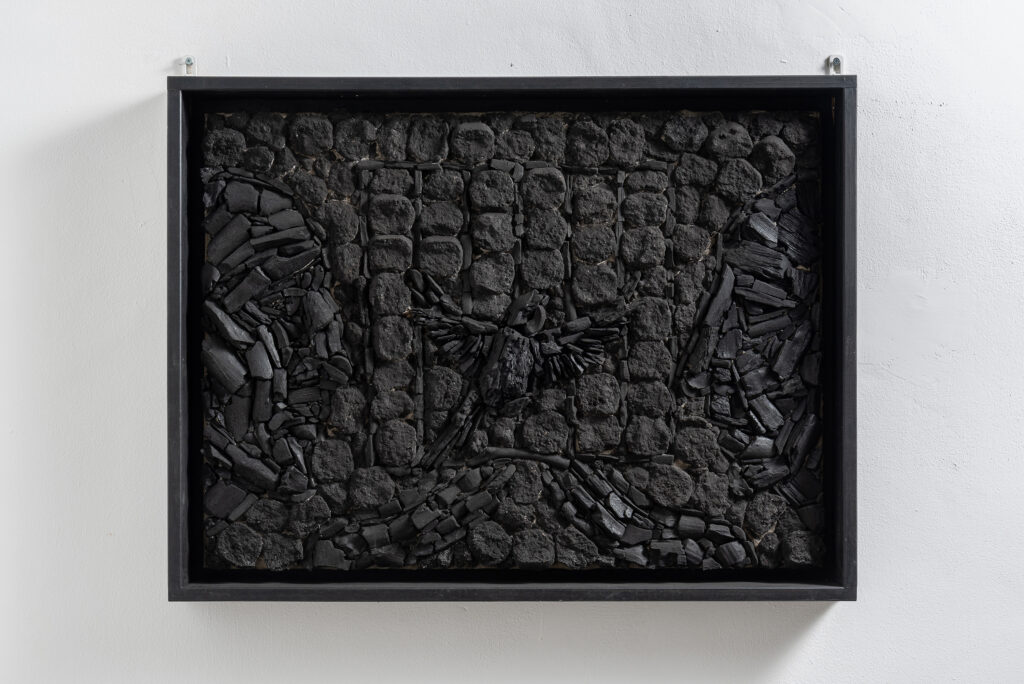
Canary Archive, 2023, charcoal mosaics (with the artistic and technical assistance of Ada Abudrushevich), 60 x 90 cm
The Gallery Apart is proud to host the third solo show of internationally renowned collective Chto Delat in Rome. A collective of artists, pedagogues, philosophers, and poets, originally from Russia and currently in exile, with the exhibition Bird Works (2018-2024) Chto Delat will mark the 20 years of their existence and the 10 years of their School of Engaged Art in St.-Petersburg, now transformed into the School of Emergencies.
Bird Works (2018-2024) is composed as a beadwork that weaves together pieces created by Chto Delat in the past six years, a time that saw the outbreak of a pandemic, the explosion of wars in many places, and growing escalation of climate disasters. Each of these pieces is like a bird with its own shape, plumage and they are whistling, tweeting, or crying out a story. At times frightening and nightmarish, often absurd and ironic, these birds/ works render an estranged and yet engaged look at life, in rapidly changing and terrifying scenarios, yet offering some signals of hope in our hopelessness.
The exhibition is inhabited by a variety of birds, real, mythological or imaginary. Birds have always been a symbol of independence, dignity, liberty, fidelity, peace, love… Their migration sees no borders; their singing is music and it is a language; their ability of learning from each other teaches about cohabitation and survival. But some humans hold unexplainable unconscious fear of birds (best shown at The Birds directed by Alfred Hitchcock). And some birds are prey while some are predators. Birds really work hard for survival. Yet in fact there are not so many among their species that are domesticated or can be exploited by humans. Pigeons as delivery workers; chicken and turkey in the food sector; canaries for entertainment, scientific research, and security.
You will be welcomed into The Gallery Apart by the Strange Birds of Pedion (2018), a series of large textile works originally installed by Chto Delat in Pedion Park, Athens, close to where the avant garde theater founded by director Karolos Koun used to be. His version of Aristophanes’s Birds was banned by the Colonels’ Regime, and he faced repressions throughout the period of the dictatorship. Chto Delat’s Strange Birds echoed this history of both oppression and ways of resistance through political and popular art.
In the ground floor of the gallery several more recent pieces populate the space: The screens. On the margins (2021) a display of catastrophic graphs on separee-like structures echoed by the video Inside Diagrams (2023) where Chto Delat members performing and embodying those graphs; Education which lost home (2023) with models of phantasmatic dystopian classrooms, reflecting on the (im)possible futures of radical pedagogies; and finally Il Catalogo degli uccelli (started in 2022), a large ongoing series of graphics, collages, paintings and objects on what an artist born in the late soviet era can learn from birds.
Moving to the lower level of the gallery, an immersive installation which includes film and charcoal mosaics is dedicated to canary birds, and their risky job. Apart from the fact that this species, exotic for the European colonizers, have been domesticated for their special performative talents. Apart from the fact that canaries are helpful in neurogenesis studies to analyze the ability of the adult brain to readapt, transform, learn. Canaries have also been famously deployed in coal mines, where they forewarned the mine workers of the dangerous increase of carbon monoxide. Often embraced by Chto Delat as emblematic to the anthropocentric relationship and the disconnect of humans from the rest of the natural world, this body of work also speaks about the necessary interconnectedness between species and the need to reactivate sensory perception in the face of threat.
The metaphor once became famous became central in the video piece Canary Archive (2022) that the group composed in response to the Russian invasion of Ukraine.
Will the canary alert us in time if the danger approaches? Will we be ready to recognise the signal? And where is the exit from the mineshaft?
The Gallery Apart è orgogliosa di ospitare la terza mostra personale di Chto Delat. Celebre collettivo interdisciplinare di artisti, pedagoghi, filosofi e poeti russi, attualmente in gran parte in esilio, con la mostra Bird Works (2018 – 2024) Chto Delat celebra i 20 anni della sua esistenza e i 10 anni della School of Engaged Art a San Pietroburgo (ora School of Emergencies).
Bird Works è come un filo di perle in cui si intrecciano le opere realizzate da Chto Delat negli ultimi sei anni, un periodo drammatico che ha visto l’esplosione di una pandemia di guerre in diversi territori, e l’escalation di disastri climatici.
La mostra è abitata da una varietà di uccelli, reali, mitologici o immaginari. Gli uccelli sono sempre stati un simbolo di indipendenza, dignità, libertà, fedeltà, pace, amore. La loro migrazione non conosce confini, il loro canto è musica, è un linguaggio complesso che consente loro di imparare gli uni dagli altri, e insegnandoci che la sopravvivenza si basa sulla convivenza. Eppure gli esseri umani hanno un’inconscia e inspiegabile paura degli uccelli (come illustrato al meglio da Alfred Hitchcock nel suo film Gli uccelli). Alcuni uccelli sono prede e altri sono predatori. La loro sopravvivenza e’ un duro lavoro. Sono poche le specie assoggettate all’uomo, con l’eccezione dei piccioni viaggiatori impiegati nel settore dei servizi di consegna, polli e tacchini nel settore di alimentazione, canarini nell’intrattenimento, nella ricerca scientifica e anche nel servizio di sicurezza.
In questa mostra, ogni opera è come un uccello che con la sua forma e il suo piumaggio cinguetta, fischia o urla la sua storia. Ci troviamo circondati da opere-uccelli, a volte spaventose e come se emergessero da un incubo, altre assurde e ironiche. Ci offrono uno sguardo straniante sulla vita, e qualche barlume di speranza nonostante gli scenari inquietanti su scala planetaria, e i momenti di disperazione delle nostre esperienze soggettive.
Arrivando in galleria si viene accolti da Strange Birds of Pedion (2018), una serie di grandi opere tessili create originariamente da Chto Delat per il Parco Pedion ad Atene, vicino al teatro d’avanguardia fondato da Karolos Koun. La sua versione de Gli uccelli di Aristofane fu bandita dal Regime dei Colonnelli e durante la dittatura il regista subì una pesante repressione. Strange Birds fa eco a questa storia di oppressione e ricorre alla tradizione dell’arte politica e popolare come forma di resistenza.
Al piano terra della galleria si trovano opere realizzate recentemente: The screens. On the margins (2021), una serie di oggetti e di grafiche sul tema della catastrofe, a cui risponde il video Inside Diagrams (2023) dove i membri del collettivo impersonificano alcuni di questi scenari. Education which lost home (2023), una riflessione distopica sui futuri (im)possibili delle pedagogie radicali, ci conduce dentro aule immaginarie; e infine, Il Catalogo degli uccelli (2022–in corso), un grande assemblage di lavori grafici, collage, dipinti e oggetti che riassumono quello che “un artista nato alla fine dell’era sovietica può imparare dagli uccelli”.
Al piano inferiore della galleria, un’installazione immersiva include film e mosaici realizzati con carbone,dedicata ai canarini e al loro utilizzo nelle miniere. Questa specie, esotica per i colonizzatori europei, è stata oggetto di interesse per il suo speciale talento performativo; analizzati negli studi neurogenetici che hanno messo in evidenza le loro abilità adattative e conoscitive, i canarini sono stati impiegati nelle miniere di carbone per dare l’allarme in caso di aumento di monossido di carbonio.
Il canarino rappresenta per Chto Delat l’emblema della relazione antropocentrica e della disconnessione degli esseri umani dal resto del mondo naturale; il corpus di opere Bird Works intende evidenziare la necessaria interdipendenza tra le specie e l’urgenza di riattivare la nostra percezione sensoriale di fronte al pericolo. La metafora diventa centrale nel video Canary Archive (2022) che il gruppo ha creato in risposta all’invasione russa dell’Ucraina.
Saremo avvisati in tempo dal canarino quando il pericolo si avvicina?
Saremo pronti a riconoscere il segnale?
A ritrovare l’uscita dalla miniera?


